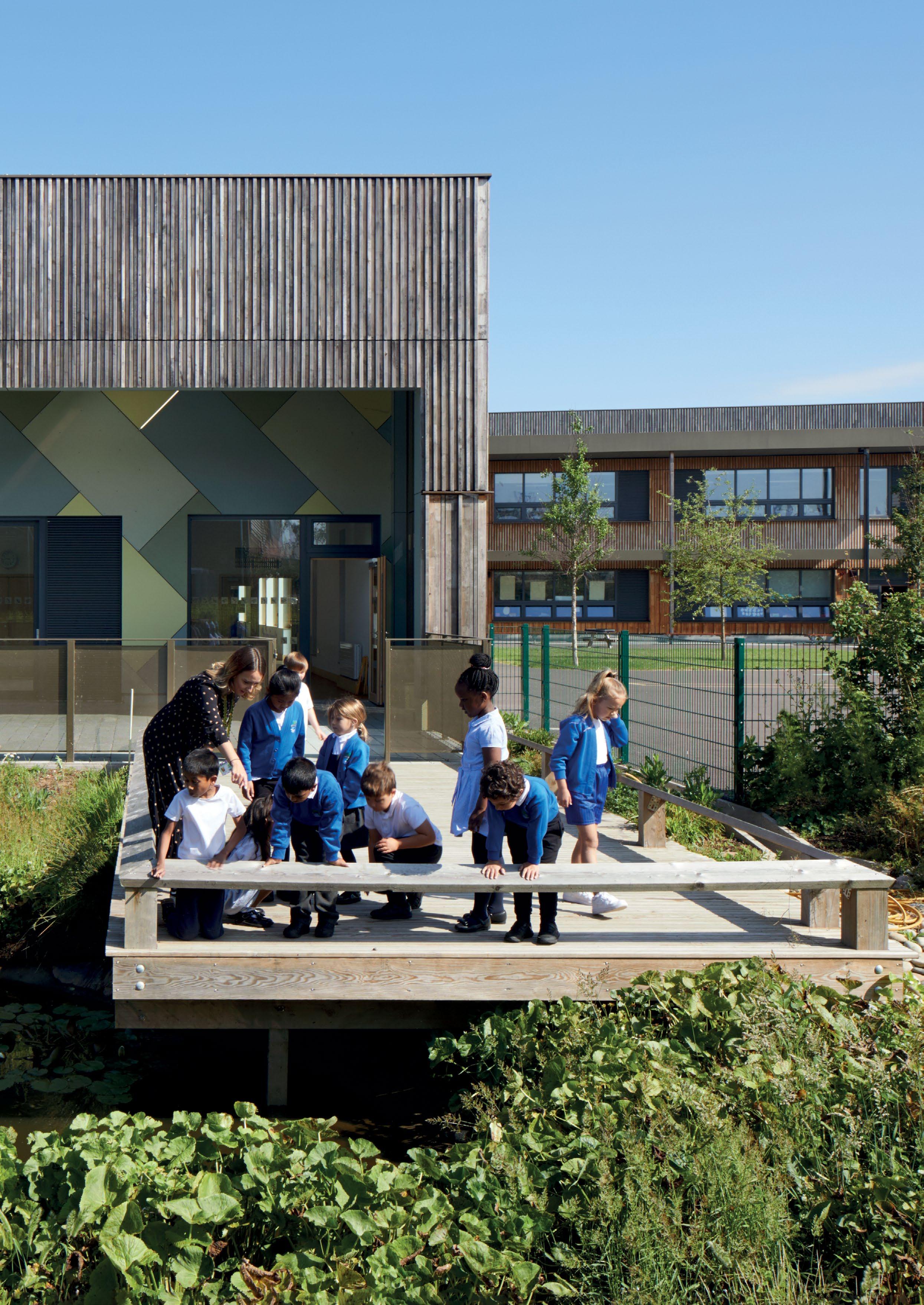
WORKING
June 2024 JOURNAL www.cibsejournal.com CIBSE
HealthandWellbeing Special Hackbridge Primary – the first Passivhaus-Plus school in the UK and a CIBSE award winner SETTING AN EXAMPLE
SAFELY WITH NATURAL REFRIGERANTS CALCULATING HEAT PUMP ENERGY USE EVALUATING BUILDING PERFORMANCE WINNERS
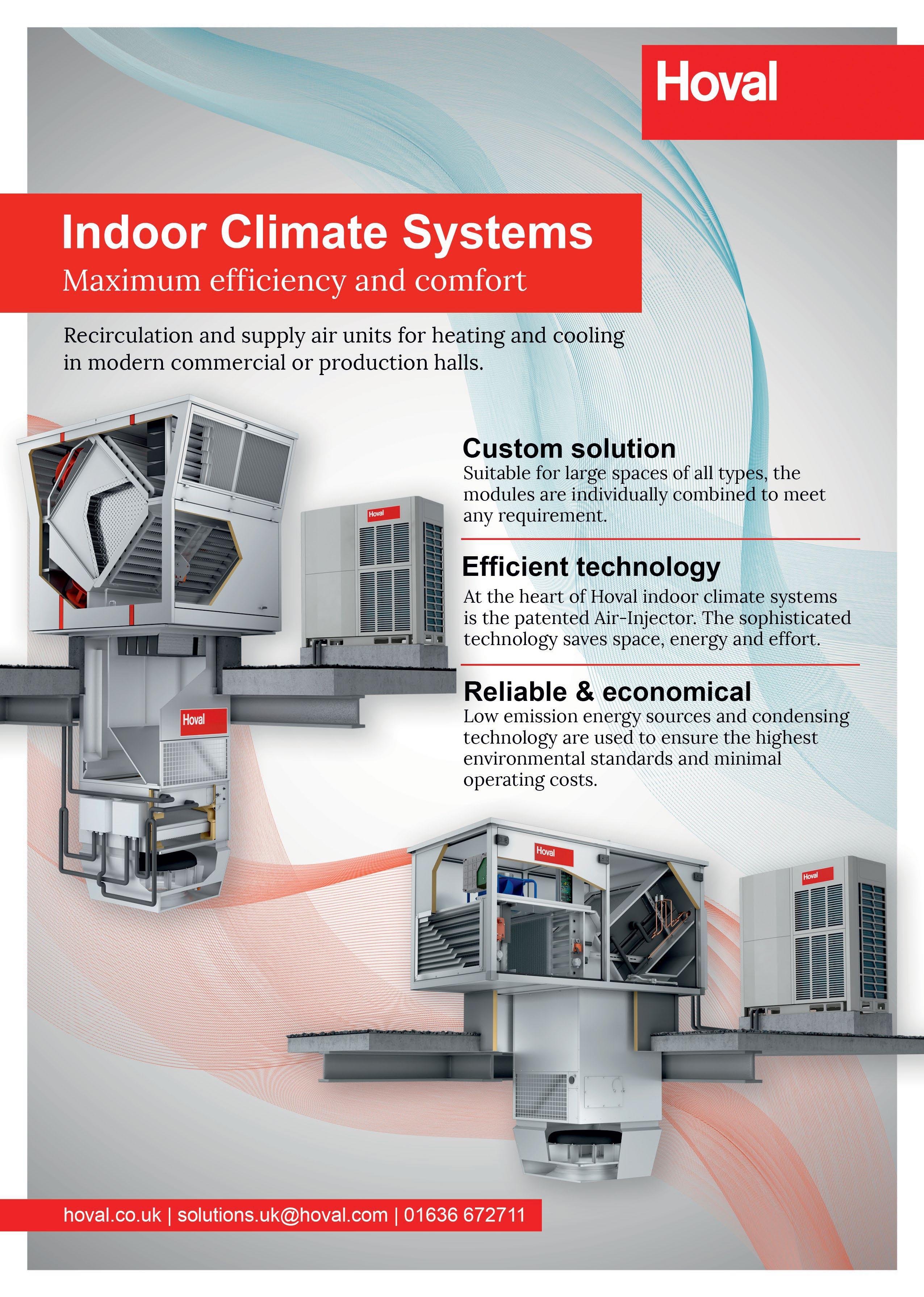
Editorial
Editor: Alex Smith
Tel: 01223 378034
Email: asmith@cibsejournal.com
Tel: 01223 378048
Technical editor: Tim Dwyer
Reporter: Molly Tooher-Rudd
Designer: James Baldwin
CIBSE Journal is written and produced by CPL One
Tel: +44 (0)1223 378000. www.cplone.co.uk
1 Cambridge Technopark, Newmarket Road, Cambridge CB5 8PB
Editorial copy deadline: First day of the month preceding the publication month
Advertisement sales
Display and sponsorship Jim Folley jim.folley@redactive.co.uk
Tel: +44 (0) 20 7324 2786
Products & services Daniel Goodwin daniel.goodwin@redactive.co.uk
Tel: +44 (0) 20 7880 6217
Recruitment advertising cibsejournaljobs@redactive.co.uk
Tel: +44 (0) 20 7880 6215
Advertising production Jane Easterman jane.easterman@redactive.co.uk
Tel: +44 (0) 20 7880 6248
The opinions expressed in editorial material do not necessarily represent the views of the Chartered Institution of Building Services Engineers (CIBSE). Unless specifically stated, goods or services mentioned in editorial or advertisements are not formally endorsed by CIBSE, which does not guarantee or endorse or accept any liability for any goods and/or services featured in this publication
We remind all readers that it is their responsibility to verify advertisers’ products claims.
CONTRIBUTORS
Climate clash

As CIBSE Journal went to press, Prime Minister Rishi Sunak announced that he was reapplying for his job and holding a general election on 4 July.
His address was marred by heavy rain, and almost drowned out by the playing of Labour’s D:Ream election anthem nearby, leading to the inevitable newspaper headlines of ‘Things can only get wetter’.
The incessant rain is a reminder of why the issue of climate change will be central to the main political parties’ manifestos.
A study by climate scientists, working as part of the World Weather Attribution group, found that continual rain in the UK in the autumn and winter was made 10 times more likely, and 20% heavier, by human-caused global warming.
The Conservatives under Sunak have had a patchy record on carbon reduction over the past 12 months. While the government is still committed to cutting carbon emissions to zero by 2050 and decarbonising the Grid by 2035, it has backpedalled on a number of net zero policies, including exempting 20% of homes from having to replace fossil fuel boilers by 2035. It also announced a delay to the implementation of the Clean Heat Market Mechanism, which requires boiler manufacturers to sell a certain number of heat pumps.
Labour, meanwhile, has pledged to decarbonise the Grid by 2030 and establish a publicly owned Great British Energy company, one of the six ‘first steps’ announced by party leader Sir Keir Starmer last month. However, he upset many on the green wing of the party earlier this year by slashing Labour’s green prosperity plan from £28bn a year to less than £15bn.
Whatever the political outcome on 4 July, the building services industry will continue to strive towards the government’s net zero goals and the decarbonisation of the built environment. This issue’s cover star, Hackbridge Primary School, is a shining example of what the industry can deliver when it works in close collaboration and focuses on the operational success of a building. CIBSE’s Project of the Year: Public Use is the first UK scheme to achieve Passivhaus-Plus certification, which means it is proven to generate more energy than it consumes.
Of course, energy reduction must not be at the expense of health and wellbeing, and our special supplement looks at how these can share equal billing with net zero and biodiversity aspirations. The Eden, New Bailey, in Manchester, shows how considering all elements at the outset can ensure goals are met. It helps if the client is fully signed up to the vision, as Muse was. To prove it, it has also helped deliver Greenhaus, the largest Passivhaus affordable housing scheme in the North West.
■ ALEX SMITH, EDITOR asmith@cibsejournal.com


Julie Godefroy
An analysis of CIBSE awards entries reveals betterquality performance data and more sustainable projects

Tim Bowes
The challenge of balancing wellbeing, efficiency and cost when designing and commissioning commercial lighting

Tony Day A simplified energy analysis model for heat pump retrofits that could be adopted for housing

Tim Dwyer
The CPD module looks at decarbonising offices through life-cycle asset management
www.cibsejournal.com June 2024 3
EDITORIAL
Entries open
The CIBSE Building Performance Awards are back for their 18th year with over 20 categories to recognise and celebrate engineering excellence in the built environment.
These awards, reward the people, products and projects that demonstrate engineering excellence in the built environment.
Entries close: 30 August 2024


View all BPA categories
4 June 2024 www.cibsejournal.com
cibse.org/BPA @CIBSEAwards #BPA2025 2025
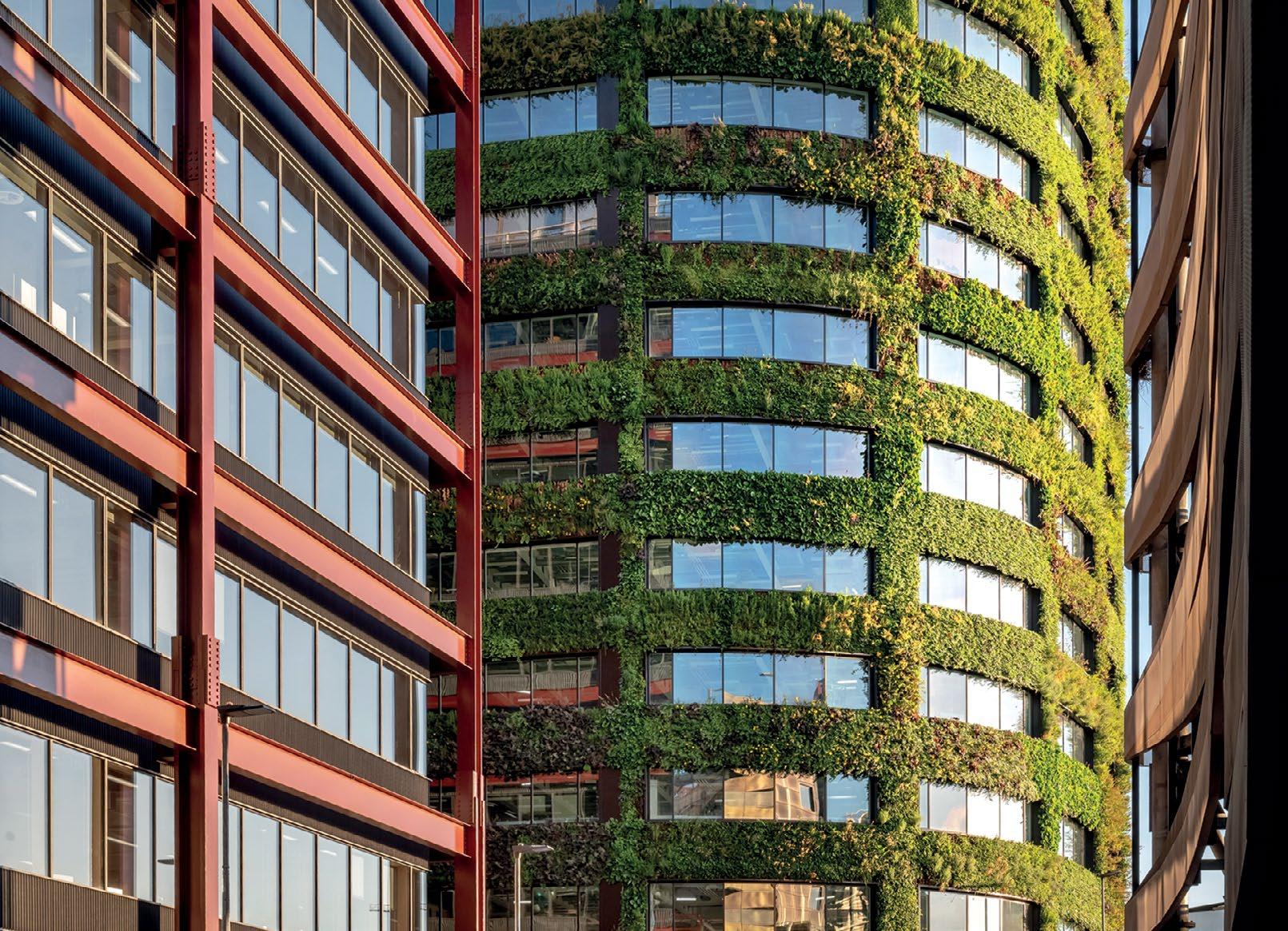
Decarbonising commercial buildings through life-cycle asset management
Building on performance
There are new categories for CIBSE's Building Performance Awards. Julie Godefroy looks at last year's entries
17 Championing competence
CIBSE President Adrian Catchpole reflects on his 12 months in office
18 Lessons in sustainability
Andy Pearson talks to the project team behind the UK's first Passivhaus Plus-certified school
Technical Chillers, air handling units and heat pumps, air movement and ventilation
39 Safe and practical applications
The increase in low-GWP refrigerants will have to be considered carefully in applications. Alex Smith reports
43 The good, the bad and the illegal
When is indoor air quality of buildings safe? DustScanAQ’s Oliver Puddle summarises the guidance
44 Predicting heat pump performance
A simplified energy analysis model for residential heat pump retrofits aims to verify system performance, as Tony Day explains
26 Manchester’s garden of Eden
How wellbeing and sustainability were baked into the design of Manchester's new Eden building. Andy Pearson reports
29 Putting people first Balancing wellbeing, efficiency and cost for commercial lighting. Whitecroft Lighting’s Tim Bowes discusses how
30 The urban challenge
The UK Urban Environmental Quality working group calls for a holistic approach to the urban environment
32 ‘Asking the right questions’
Chair of the Industry Competence Steering Group Hanna Clarke speaks to Alex Smith about meeting the competency requirements
35 CPD: Variable geometry chilled beams for efficient variable air volume systems
Journal production manager: Nicola Hurley Tel: +44 (0)208 772 3697, nhurley@cibse.org
CIBSE, 222 Balham High Road, London SW12 9BS Tel: +44 (0)208 675 5211
Services Ltd. ISSN 1759-846X
SUBSCRIPTION ENQUIRIES
If you are not a CIBSE member but would like to receive CIBSE Journal, subscribe now! Costs are £80 (UK) and £100 (international). For subscription enquiries, and any change of address information, please contact Nicola Hurley at nhurley@cibse.org or telephone +44 (0)208 772 3697. Individual copies are also available at a cost of £7 per copy, plus postage.
CIBSE Journal, ISSN 1759-846X (USPS 4070) is published monthly by CPL One, 1 Cambridge Technopark, Newmarket Road, Cambridge CB5 8PB, UK.
Subscription records are maintained at CIBSE, 222 Balham High Road, London, SW12 9BS, UK. ISSN 1759-846X (print) ISSN 2756-1895 (online)


www.cibsejournal.com June 2024 5 JOURNAL CIBSE www.cibsejournal.com The official magazine of the Chartered Institution of Building Services Engineers SOCIAL MEDIA @CIBSEJournal CIBSE LinkedIn CIBSE Journal newsletter www.cibse.org CREDITS Cover image Credit / © Studiostagg p07 Credit / CC BY-NC-ND 2.0 DEED P11 Shutterstock / Georgeclerk P18-21 Credit / © Studiostagg P32 Shutterstock / Leontura P58 iStock.com / Intpro FOR CIBSE
©CIBSE
ABC audited circulation: 18,351 January to December 2023 Printed by: Warners Midlands PLC 26
■ News 6 News 10 CIBSE news ■ Features
CONTENTS
14
■
■
49
■ Classified 53 Products ■ Events 58 Looking ahead ■ Health and Wellbeing special
CPD
NEWS
CLC urges mandatory retrofit training
Core modules on the basics of retrofit should be a ‘minimum requirement’ across all construction-related qualifications and training, a new Construction Leadership Council (CLC) report has urged.
Roadmap of skills for net zero, published by the CLC’s People & Skills workstream on 7 May, sets out a framework for defining competence in the domestic retrofit sector.
It says training curricula and content should be evaluated and updated, and mechanisms established for validation and certification. Core modules on the basics of retrofit and building physics should be introduced, and carbon and climate literacy should be a ‘minimum requirement’ across all construction qualifications and training.
The report also urges the government to commit to a long-term national retrofit strategy, to provide certainty and a pipeline of work, stimulating demand for retrofit. In addition, it recommends a review of government-funded schemes and targets – for example, linking skills and retrofit programme funding.
Co-op Live finally opens after construction issues
Manchester arena operational after series of system failures
Manchester’s Co-op Live arena has finally opened after a series of teething troubles, the latest of which was the collapse of a ventilation duct from the venue’s ceiling.
Mercury Prize-winners Elbow played the first concert at the troubled venue on 14 May. The band’s gig marked the fourth attempt to open Co-op Live since 23 April, when two shows by the comedian Peter Kay had to be cancelled because of unfinished construction work and concerns from Greater Manchester Police about the building’s safety systems.
The third attempt to open the venue, on 1 May, was cancelled after one of 95 pre-manufactured filters that form part of Co-op Live’s air conditioning system fell from the ceiling to the floor of the auditorium’s standing area.
The incident occurred shortly before the doors were due to open for a concert by A Boogie Wit da Hoodie, after the US rapper had completed his soundcheck.
Tim Leiweke, chief executive of the arena’s operator, Oak View Group (OVG), told the BBC that the fixing bolts were missing.
‘It wasn’t visible to the eye and it fell out,’ he said, adding that, since the incident, thousands of bolts in the ceiling had been ‘double checked and triple checked’.
The Co-op Live arena is a joint venture between OVG and Manchester City Football Club, whose Etihad Stadium is located next to the new venue.
In a separate interview with the Financial Times, Leiweke blamed post-Brexit shortages of workers for the scheme’s wider construction delays. The postponed opening led to cancellations by a host of artists, including Take That and Olivia Rodrigo.

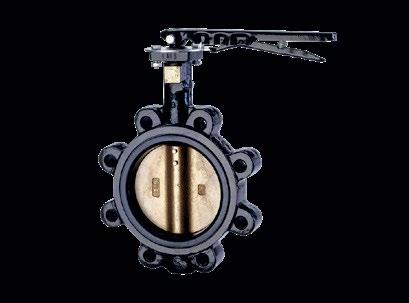



ENERGY EFFICIENT SOLUTIONS FOR ANY VALVE REQUIREMENT 6 June 2024 www.cibsejournal.com

Tories and Labour clash over energy policy ahead of election
Sunak’s government has back-pedalled on a number of net zero policies
The Conservatives have identified energy policy as a key dividing line with Labour in the campaign for the upcoming general election, which was called by Rishi Sunak the day before CIBSE Journal went to press.
The Prime Minister announced on 22 May that the King had agreed to his request to dissolve parliament, triggering an election on 4 July. The Conservatives remain committed to the UK’s statutory goal – passed under former Tory Prime Minister Theresa May – to cut emissions to net zero by 2050 and to decarbonise the electricity Grid by 2035.
However, Sunak’s government has back-pedalled on several net zero policies over the past year.
Last week, the government announced that 20% of homes would be exempt from having to transition to low carbon heat by 2035.
In addition, Secretary of State for Energy

Security and Net Zero Claire Coutinho announced a delay to the implementation of the Clean Heat Market Mechanism – which mandates that boiler manufacturers sell a specified level of heat pumps – just a few weeks before it was due to come into force.
Labour has pledged to decarbonise the Grid by 2030 and establish its publicly owned Great British Energy (GBE) company, which was one of the six ‘first steps’ announced by the party’s leader, Sir Keir Starmer, on 13 May.
In the last Department for Energy Security and Net Zero minister’s question time, a day before Sunak’s general election announcement, energy minister Justin Tomlinson said Labour’s GBE plan is ‘irrational’, and its 2030 target is ‘mad’ and ‘unachievable’.
In response, a Labour spokesperson said ‘After 14 years of failed Conservative energy policy, all Sunak has left to offer is a bunch of empty buzzwords, none of which will bring down energy bills for hardworking families.’
Survey reveals uncertainty over Building Safety Act responsibilities
Nearly half of specifiers are still unsure about their responsibilities under the Building Safety Act (BSA) 2022, according to a new survey by NBS.
Findings from the Building Safety Survey, carried out by the specification platform, show that 50% of respondents are not clear, or had no idea, of dutyholder responsibilities for higher-risk buildings under the act. Just 12% felt ‘very clear’ about their responsibilities, pointing to a number of ‘knowledge gaps’ that persist within the industry, demonstrating that more training is needed, the NBS said.
In addition, nearly half (44%) of respondents were unsure or have no idea what steps to take within the new building safety regime. Only around half (45%) were clear as to how they would manage building information to realise the golden thread, and just one in 10 had a solid plan in place.
Russell Haworth, chief executive officer UK of NBS’s parent company, Byggfakta Group, said the research shows many specifiers are ‘struggling to get to grips with the requirements of the new building safety regime’.
‘This needs to be resolved. All designers must have the correct approach to specifications if the industry is to raise the bar on building safety. This includes getting to grips with the “nitty-gritty” of the BSA if they want to operate in the new regulatory landscape.’
IN BRIEF
Arup advocates localised retrofit for net zero targets
Arup has urged cities to take a localised approach to delivery of net zero targets, in a new report that sets out steps they should take to adopt retrofit at scale.
The report includes a call for retrofit to be recognised as the single biggest tool to reduce carbon emissions in the built environment.
Retrofit at scale also urges a significant shift from a focus on individual buildings towards a whole-street or neighbourhood approach. This would allow multiple place-based challenges to be tackled and wider benefits to be achieved, while most efficiently minimising disruption and providing opportunities for innovations in finance.
Harral appointed chief executive of CABE
Richard Harral is taking over as chief executive of the Chartered Association of Building Engineers (CABE). He joined CABE as technical director in 2018 and has worked closely with former CEO Dr Gavin Dunn on widening the association’s membership base.
As technical director, Harral co-authored BSI Flex 8670: Built environment. Core criteria for building safety in competence frameworks. Code of practice (see page 32 for more on building safety and competency).
He also led on drafting the cross-industry report Future regulation of building control
Stantec takes on Hydrock design firm
Stantec has acquired integrated engineering design firm Hydrock, the Bristol-headquartered company founded in 1995.
Hydrock has 950 staff across 22 locations in the UK, and its extensive capabilities include fire safety, energy and sustainability, civil and structural, MEP, transport, environmental, and geotechnical services.
The Hydrock acquisition is part of Stantec’s continued global growth strategy. It will increase the multinational company’s UK workforce by more than 30%, significantly bolstering its offerings, particularly in the energy, buildings, and infrastructure markets.
NEWS | DIGEST www.cibsejournal.com June 2024 7
On the campaign trail: Keir Starmer and Angela Rayner at Gillingham FC, and Rishi Sunak with chancellor Jeremy Hunt
New specification guide for water pipes
The British Plastics Federation pipes group has updated three key documents to help design consultants specify safe and secure polyethylene water-pipe networks. The group has also worked with Water UK to produce the new Water Industry Standard 4-01-03 for hydrostatic pressure testing. This replaces guidance in the Water Research Centre Blue Book (guide to testing water supply pipelines and sewer rising mains) and Water UK’s IGN 4-01-03.
Siemens takes BCIA innovation accolade
Siemens Building Products won Technical Innovation of the Year at the Building Controls Industry Association (BCIA) Awards held in Birmingham on 2 May. Siemens’ Wireless Room Solution won the product category, sponsored by CIBSE. It features three new sensors for monitoring indoor air quality, with three options: temperature only; temperature and relative humidity; and temperature, relative humidity and CO2
Acoustic body offers clarity on overheating regulation
The Q&A document details compliance requirements for Approved Document O
The Association of Noise Consultants (ANC) has created a free guidance document on the recently published ‘Overheating’ Approved Document O (ADO) for England.
After several enquiries seeking clarity over the acoustic requirements of ADO, which came into force in June 2022, the ANC has produced a Q&A document.
It covers some of the main questions relating to the acoustic requirements of ADO, which lists four methods for removing excess heat.
The most suitable method for controlling overheating – limiting unwanted solar gains within residential properties – must take account of several factors, one of which is noise in bedrooms during night-time periods. From an acoustic perspective, the
This valve was developed by world class engineers.
ADO says that open windows can be used as the ‘dominant method’ for removing excess heat as long as outdoor noise levels are low enough.
However, restricted window openings may be required to satisfy the noise thresholds set out in the ADO. If a certain level is exceeded, an open window is unlikely to be an option at night and mechanical ventilation may be required.
The ANC’s guidance says it is ‘essential’ to engage an acoustic consultant at an early stage of the development process to understand the implications of satisfying the noise aspects of ADO.
This summer, the ANC is due to launch a more comprehensive overview – Guide to demonstrating compliance with the noise requirements of Approved Document O
The Overheating ADO is available to view at bit.ly/BuildingRegsPartO
Complete valve solutions take engineering prowess, rigorous testing and operational excellence, oh yes, and an exhaustive selection of valves. So, when you need the complete valve solution none of the others will do. Find out more at hattersley.com/justlike
 Trevor, Senior Design Engineer
Trevor, Senior Design Engineer
Just like all our others.
21400_CRANE_HATTERSLEY_AD_133X186.indd 1 14/02/2022 17:31 NEWS | DIGEST 8 June 2024 www.cibsejournal.com
UK supports Ukrainian project to retrofit heat pumps in war zone
Aim is to increase security of energy supply following Russian invasion
An Aston University project to make it easier to retrofit Ukraine’s domestic heating systems with heat pumps has received nearly £1m from the UK government.
The government has earmarked £16m to support the recovery and future sustainability of Ukraine’s energy system, which continues to be battered by Russian drone and missile attacks on its power stations and electricity grid. It will also help with the phase out of fossil fuels and support the country’s post-war recovery.
The investment includes almost £1m for work by Dr Muhammad Imran, senior lecturer in engineering and technology at the university, and his collaborators to develop and commercialise cascade heat pumps. Dr Imran will work with the Institute of Engineering Thermophysics of the National Academy of Sciences of Ukraine, Heat Pumps VDE LLC and other partners to make the new technology easier to retrofit into existing domestic heating systems. The project
will involve swapping conventional boilers for heat pumps without expensive modifications to distribution systems.
A demonstration system that aims to deliver significantly higher temperatures than existing technologies will be installed in Ukraine. Dr Imran said ‘the cascade heat pump system provides high-temperature hot water for space heating –even in severely cold weather. This is important because Ukrainian winter temperatures usually range between 2°C to -4.8°C, but can reach as low -21.6°C. In addition, our system will allow Ukraine to save energy and reduce its dependence on natural gas for heating and decrease its reliance on imports.’
Ukraine’s minister of energy, Herman Halushchenko, said: ‘For Ukraine, this is a matter of national security. I am sure that the implementation of the project is of great importance for future cooperation between Ukraine and the UK in the energy sector.’
The government initiative involves more than 50 UK and Ukrainian organisations, and will receive an additional £5m from the private sector.
Hydrogen home heating trial shelved
A town-scale pilot of using hydrogen for home heating has been halted. The Department for Energy Security and Net Zero announced on 9 May that it has paused the trial until ministers have made a strategic decision on the role of hydrogen in decarbonising heat, which is due in 2026.
The town trial was intended to be the culmination of a series of progressively bigger exercises. However, plans for smaller-scale village trials in the northwest of England and Redcar have been abandoned over the past 18 months. The government has said that low carbon hydrogen may have a role to play in heat decarbonisation, alongside heat pumps and heat networks.
Jess Ralston, head of energy at the Energy and Climate Intelligence Unit, said the cancellation of the trial ‘paves the way for more investment’ in heat pumps. ‘The announcement is the clearest signal yet –hydrogen heating will only have a minor role [in the future of heating in the UK], if any at all,’ she added.


IN BRIEF
CP1 Heat Networks: Code of Practice now freely available
CIBSE’s CP1 Heat Networks: Code of Practice (2020) for the UK is now available for free on the CIBSE Knowledge Portal, by using the code FREE. CP1 (2020) offers technical guidance and establishes voluntary minimum standards for heat networks. It is the result of a partnership between CIBSE and the Department for Energy Security and Net Zero, which provided funding. The collaboration aims to prepare industry for new heat network regulations in 2025, and the Code of Practice will be updated by then. To download the publication for free, visit: bit.ly/4bpzHf9
Minimal global growth for hydronic heat pumps in 2023
The worldwide market for hydronic heat pumps grew by just one per cent in 2023, according to figures from BSRIA. The association’s latest research data on the global markets for the devices shows there was no growth in China, which accounts for the largest share of the global hydronic heat pump market. It also indicates that sales are around 2% lower across Europe following the growth spurt in 2022, with ‘significant’ drops in Italy and France, two of the continent’s biggest markets. However, the data shows that Germany had strong growth in the first half of 2023, on the back of high gas prices.
NEWS | DIGEST www.cibsejournal.com June 2024 9
CIBSE NEWS
Search is on for the rising stars of engineering
The awards that celebrate the best and brightest building services engineering talent, as well as the employers that nurture them, are open for entries.
The CIBSE Young Engineers Awards encompass Undergraduate and Apprentice of the Year, the CIBSE ASHRAE Graduate of the Year, and Employer of the Year accolades.
The undergraduate category is open to any student in their final year of a BSc, MSc or MEng, while Apprentice of the Year is split into two categories – Degree (level 5-7) and Technician (level 3-4) – with entrants asked to submit a three-minute video in response to a particular question.
The CIBSE ASHRAE Graduate Award challenges finalists to demonstrate their presentation skills on a given topic, in front of a panel of industry judges.
Engineers who have graduated in a building services-related field in the past two years are eligible to enter.
Employer of the Year has three categories, for small, medium and large companies, which are asked to demonstrate clear, inclusive strategies for recruiting and empowering young people.
The awards are free to enter, and all entries must be received by 31 July. The 2024 awards presentation will take place on 10 October, at BMA House, London. See www.cibse.org/yea
Hybrid CIBSE AGM and Presidential Address
The CIBSE AGM will be held online and in person from 5pm on Monday 10 June, at The Royal Society, London.
Afterwards, incoming President Fiona Cousins CEng FCIBSE will deliver her Presidential Address, titled ‘Building performance reimagined’.
More information is available at bit.ly/CJJun24Agm

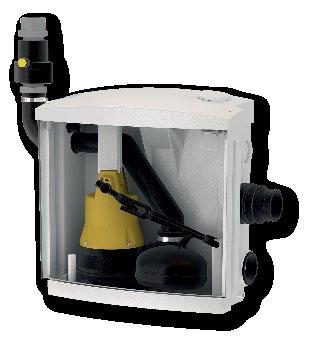
New president takes up post at lighting society
Award presentations also made at Society of Light and Lighting’s AGM
Dan Lister was welcomed as the new president of the Society of Light and Lighting (SLL) at its AGM in May.
He takes over from outgoing president Helen Loomes FSLL, and Kristina Allison MSLL MCIBSE was inducted as SLL president-elect.
Delivering his presidential address, Lister said there was a need to shift how we discuss lighting performance: ‘Rather than solely focusing on energy and carbon consumption, we must recognise the impact of light on health, wellbeing and human experiences’.
He highlighted the collective responsibility that SLL members have with CIBSE to curate building performance and ensure outcomes.
A number of awards were presented,
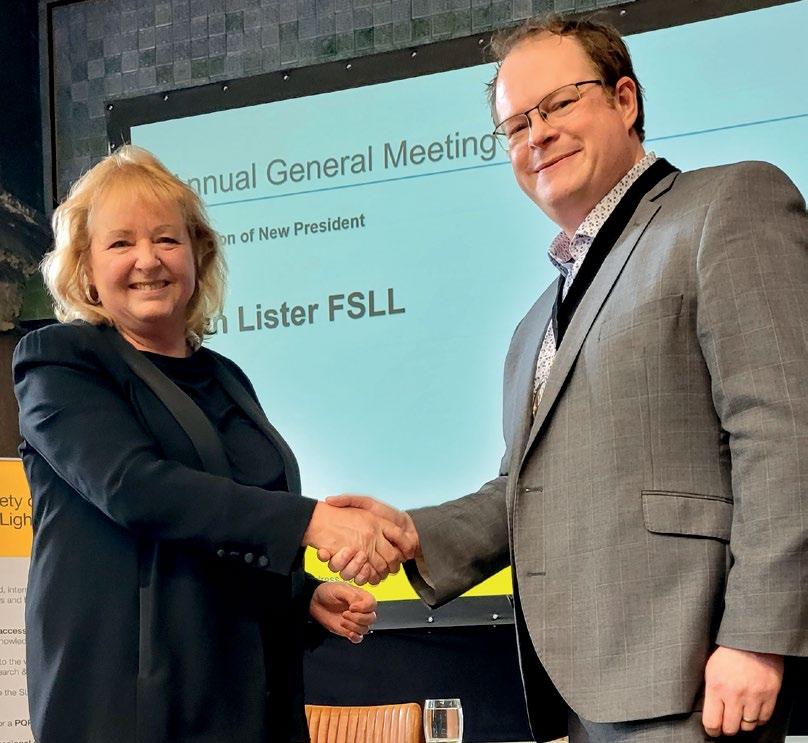



acknowledging those who have given so much to the lighting industry and SLL:
The Leon Gaster and Walsh-Weston Awards are for the best published papers in Lighting Research & Technology journal.
The Leon Gaster Award, presented for the best paper concerned with lighting applications, went to Mehlika Inanici, Belal Abboushi and Sarah Safranek, for Evaluation of sky spectra and sky models in daylighting simulations
The Walsh-Weston Award recognises the best paper on more fundamental lighting matters, and was won by Nozomu Yoshizawa, Roland Schregle, Ken Komazawa, Kaira Ootori and Toshihide Okamoto for Photon flow: a threedimensional expression of the light field using volume photon mapping
Austin Williamson was the recipient of the SLL Regional Award, which recognises work undertaken by an individual on behalf of the society in the regions.
David Battersby MSL was presented with the Lighting Award in acknowledgement of his outstanding service to the SLL as project lead for Pockets of Light#3, in October, alongside Light Night Leeds.
Florence Lam received an honorary fellowship of the SLL, in recognition of her significant contribution to the SLL and the wider lighting profession. The final award of the night was the President’s Medal, which recognises significant and lifetime contributions to lighting. This year’s recipient was Roger Sexton FSLL.
The AGM took place in Leeds and online. Visit www.cibse.org/sll




www.jung-pumps.co.uk 0118 9821 555 The UK’s Largest Authorised Supplier of Jung Pumpen Equipment DrainMinor DrainMajor DrainMajor Duo Compli Hot Water pumps
10 June 2024 www.cibsejournal.com
New SLL president Dan Lister with immediate past president Helen Loomes

IN BRIEF
Papers wanted for Technical Symposium
Submissions for the 2025 CIBSE Technical Symposium are now being sought.
Guide targets embodied carbon in logistics sector
CIBSE collaborates with Amazon and Introba on new TM65.3 document
Comprehensive Europe-wide guidance to help the logistics industry assess the embodied carbon of material handling equipment (MHE) and mechanical, electrical and plumbing equipment has been published.
CIBSE’s TM65.3: Embodied carbon in building services: logistics centres was developed with the support of Introba and Amazon. It is the first industry-wide guidance and methodology, which aims to foster data-based decision-making as the logistics industry works to reduce its environmental footprint.
According to a Research and Markets report, the global market size of MHE is $128bn, and is estimated to reach $193bn in 2030. The guidance finds that MHE can represent 17-53% of a typical logistics building’s embodied carbon, so companies can reduce their environmental impact by making more informed choices
about the type of equipment used in their warehouses. Equipment manufacturers can also differentiate themselves by developing equipment with lower carbon footprints.
TM65.3 builds on the methodology outlined in TM65: Embodied carbon in building services: A calculation methodology, which offers a robust framework for understanding and mitigating environmental impact. It will benefit an array of stakeholders, including logistics building owners, manufacturers, retailers, architects, engineers, policy-makers, researchers and students.
CIBSE’s technical director, Dr Anastasia Mylona, said: ‘This marks a significant milestone in understanding the embodied carbon implications of logistics buildings, and underscores our commitment to sustainability within the built environment.
‘By pooling our expertise with Amazon and Introba, we will empower stakeholders across the logistics sector with actionable insights to drive positive change.’
● For more on TM65.3, see bit.ly/3WKefgC
Latest CIBSE group will focus on workplace ventilation issues
CIBSE has established a new Workplace Exhaust Ventilation Group, focused on local exhaust ventilation and other related mechanical ventilation and air quality issues in the workplace.
The objectives of this group include: engaging with stakeholders to develop joint content; creating guidance for those designing and purchasing hoods; updating commission guidance; and organising events to support building knowledge across the CIBSE network.
If you are interested in being involved in the group, you can nominate yourself for the committee by completing the form at bit.ly/4avERoQ, or you can become a member by logging into the MyCIBSE Groups page and ticking the relevant box.
The last date for committee nominations is 30 June, after which a first meeting will be set up and a committee formed.
The CIBSE Board has responsibility for the management of CIBSE groups, and will oversee and manage the appointment of the committee.
● If you have any queries regarding the new group, contact groups@cibse.org
With the theme Fit for 2050 –Achieving net zero through intelligent, resilient and sustainable design in the built environment, the symposium will explore how best to approach the challenges the building sector faces, considering the need to cope with more extreme weather conditions while decarbonising, retrofitting and maximising passive approaches in the existing building stock.
Papers are invited on: the transition to net zero carbon through improved circular thinking, retrofitting, and decarbonising buildings; design strategies for achieving climate resilience in buildings; applications of AI, machine learning and parametric design to enhance performance and resilience of building systems; and learnings from operations and building performance assessments. Submit a 250-word abstract for your research or opinion paper, technical review, case study or poster via the online form at bit.ly/3WKmoBw by 15 July 2024. For more information, visit: www. cibse.org/technicalsymposium
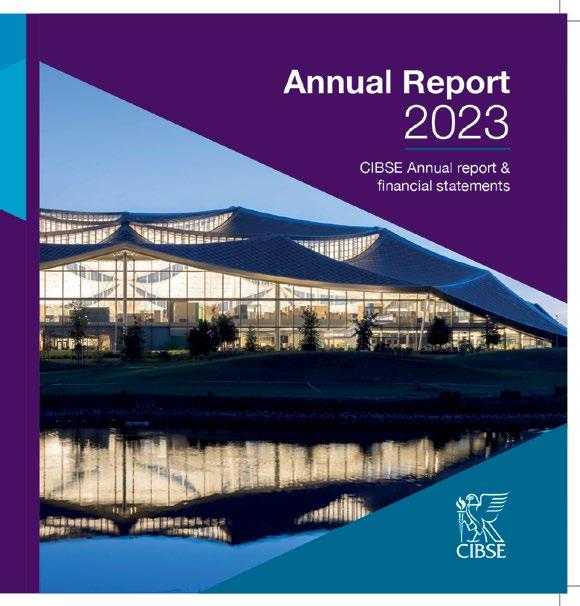
Annual Report celebrates
CIBSE’s
2023 achievements
The CIBSE Annual Report 2023 is now available. Read how the Institution supported its 21,000-plus members worldwide throughout the year by contributing to government consultations, publishing more than 20 knowledge titles, hosting numerous awards, events and training, and promoting its STEM programme. Go to www. cibse.org/annualreport
CIBSE | NEWS
www.cibsejournal.com June 2024 11
Amazon contributed to the CIBSE embodied carbon guide for logistics centres
Gratitude and growth
More than 1,000 CIBSE volunteers are being celebrated for their passion and drive in Volunteers Week. They are being recognised for their role in everything from skills development to industry support
In 2022, research revealed that the combined value of volunteering added a staggering £18.7bn to the UK economy. Volunteers are a cornerstone of society, across a vast range of sectors, some of which rely more than others on volunteers. At CIBSE, we have more than 1,000 incredible volunteers, who are fundamental to all the activities that the Institution undertakes.
According to the NCVO Time Well Spent survey in 2023, the top three reasons why people continue to volunteer are: the organisation to which they contribute or help; the difference they make; and their commitment to the cause.
There is a whole range of benefits that can be gained from volunteering (see panel, ‘The value of volunteering’). These all ring true when it comes to CIBSE volunteers – day in and day out, their passion and drive to bring about positive change in the building services engineering sector is evident.
We recognise that prospective volunteers may face barriers, such as a lack of time, or concerns about not having the right skills or experience. However, CIBSE strives to make volunteering accessible to all. There are many different ways you can volunteer at CIBSE, all of which can be found on the website, and there is always someone available to answer questions if you are unsure about which opportunity may suit you best.
While volunteers deserve recognition regularly for their efforts and contributions, the first week in June each year is Volunteers Week (3-9 June in 2024), which provides another good excuse to express thanks and highlight their work.
In 2023, the CIBSE networks delivered more than 360 events, which were attended by 10,500 members and non-members – but this is a mere drop in the ocean when it comes to the impact that volunteer-delivered activity has had on the operations of CIBSE over the years.
This point in the calendar also marks the end of AGM season, during which hundreds of volunteers are elected or re-elected to committee positions across the network. It is also a time when many stand down from the positions they have held for several years, although some stay on as committee members to impart their knowledge and experience. We are incredibly grateful for their contributions over many years (see panel, ‘Key positions in CIBSE’s volunteer networks’, for details of the chairs stepping down this year).
After 21 years of service, Geoff Prudence recently stepped down as chair of the Facilities Management (FM) Group. His vital contributions during this time, including support of the

“Day in and day out, CIBSE volunteers’ passion and drive to bring about positive change in the building services engineering sector is evident”
production of Guide M, have helped further the development of best practice within FM. CIBSE extends a special thank you to Geoff for his dedication over the years.
As we bid farewell to some of our wonderful volunteers, we also welcome many new faces to our team. While knowledge and experience are vital, new ideas and fresh enthusiasm are also essential to paving a way into the future for the committees and ensuring succession planning.
How our volunteers feel about their volunteer experience is also extremely important – feedback is the only way that we can look at what needs to be changed to make things run more smoothly in the future. Testimonials from volunteers highlight the diverse benefits of volunteering, from skills development to giving back to the industry and inspiring others.
Joe Russell, honorary secretary of the Society of Public Health Engineers (SoPHE), says: ‘Through experience with the YEN [Young Engineers Network], I have developed a lot of useful skills that I was able to apply during my EngTech and LCIBSE application, as well as my membership of SoPHE application. The roles I have carried out have allowed me to build experience towards the criteria required for these professional recognitions.’
Dr Maria Spyrou, Energy Performance Group past chair, says ‘giving back to the industry that made me who I am, and inspiring young people to do more with their careers and ambitions’ are what appealed most to her about volunteering. And Hakeem Makanju, chair of the
12 June 2024 www.cibsejournal.com CIBSE NEWS | VOLUNTEERS WEEK
Geoff Prudence receiving an Honorary CIBSE Fellowship in 2022, with David Stevens FCIBSE, who has a CIBSE Silver Medal
Minority Ethnic Groups Panel, volunteers to ‘make a difference, give back and help support CIBSE’s vision, as well as to act as a role model’.
In the lead up to Volunteers Week 2024, CIBSE CEO Ruth Carter has extended her thanks to all the Institution’s volunteers for their vital contributions.
‘Our volunteers are fundamental to the work that CIBSE does, and the impact that we have,’ she says. ‘Whether it’s authoring publications, being involved in committees, judging awards, or being a STEM Ambassador, there are opportunities, no matter where you are in your career.
‘The value that volunteers bring to our industry and community cannot be overstated, and we, at CIBSE, thank each and every one of them.’
■ If you want to find out more about volunteering, please visit the website or contact groups@cibse.org
CIBSE would like to thank all of those who, during the 2024 AGMs, stepped down from their roles on committees. Below are those who have stepped down as chairs
Name Network
Maria Spyrou Energy Performance
Geoff Prudence Facilities Management
Steve Clifford Healthcare
Mary-Ann Clarke HVAC Systems
Andrew Wright School Design
Gavin Lane Young Energy Performance Group
Hakeem Makanju Home Counties South West
Gita Maruthayanar Home Counties North West
Jos Brownlie West Midlands
Gary Chiang Hong Kong
Phil Senn Australia and New Zealand
Pritpal Jandu Yorkshire
Peter Prentice Southern
Phillip Hilton-West North East
Austin Williamson Home Counties North East
Paul McGreevy Northen Ireland
Peter White SoPHE
Andrew Krebs SDE
Scott Mason Patrons
THE VALUE OF VOLUNTEERING
A whole range of benefits can come from volunteering. Here are just a few that CIBSE volunteers have highlighted:
● ‘Volunteering has brought new business relationships’
● ‘My employer benefited from the knowledge that I gained’
● ‘Knowledge sharing with colleagues’
● ‘New skills learned’
Refrigerant safety in a changing landscape
With the increasing focus on low-GWP refrigerants, Mitsubishi Electric hosted a timely webinar on BS EN378, the safety standard for refrigerating systems and heat pumps. Jobin Varghese offers a summary
Standards are important when it comes to buildings, and the use of refrigerants and changing regulations for HVAC systems mean designers and installers are increasingly looking at products that use refrigerants they may not have used before.
The new, lower-global warming potential (GWP) generation of refrigerants offers many benefits, but it is vital to be aware of the regulations and standards around their use in products and systems.

That’s why we recently held a free, CPD-accredited webinar, to consider the generic safety standard BS EN378 and related product safety standards, such as BS IEC EN 60335, which also cover the safe use and application of refrigerants in HVAC systems.
BS EN 378 is a European safety standard that focuses on the safety and environmental requirements of refrigerating systems and heat pumps, with the aim of minimising any potential risk to people and the environment, minimising product failures, and enhancing the overall operational efficiency of the system.
The webinar also touched on how these standards can help designers, contractors and installers meet the requirements of the Health and Safety Executive’s Dangerous Substances and Explosive Atmospheres Regulations. In addition, it looked at the narrative from industry bodies such as CIBSE, the Institute of Refrigeration, and Refcom.
This webinar helped clarify the differences between various standards to help consultants make the best choice for their project.
The changing refrigeration landscape means there are several areas of risk that must be considered when working with HVAC systems, which can be categorised as: safety; sustainability; energy efficiency; and future-proofing buildings.
Whether you’re a consultant, designer, contractor or installer of HVAC equipment, understanding these standards is crucial for specifying, installing and operating cooling and heating equipment effectively.
Get in touch if you would like to know more, or download the CPD Guide to F-gas Regulations and the future of refrigerants at: bit.ly/CJMitFG24
● Jobin Varghese is Mitsubishi Electric product manager for City Multi VRF and Hybrid VRF systems
www.cibsejournal.com June 2024 13 CIBSE NEWS | VOLUNTEERS WEEK
SPONSORED COLUMN | MITSUBISHI ELECTRIC
BUILDING ON PERFORMANCE
The quality of data in entries to the CIBSE Building Performance Awards is improving, says Julie Godefroy, who reveals new categories for the 2025 accolades, which are now open for submissions
Entries for the 2025 CIBSE Building Performance Awards are open. The categories and criteria have been informed by CIBSE’s analysis of last year’s entries, in order to reflect and reward continuous industry development.
As in the past few years, CIBSE has reviewed last year’s awards entries to assess building performance across the projects, as well as the quality of the information provided.
In 2021, based on a review of all past entries, CIBSE introduced a data form to accompany the Project of the Year entries, to improve the consistency, quality and coverage of the building performance data provided.
This helps the judging process, and contributes to industry’s understanding of current best practice, in turn feeding into CIBSE activities such as the Net Zero Carbon Buildings Standard (NZCBS).
Since then, entries have been reviewed every year, and updates made to the data forms to reflect evolving practice and improve clarity and data collection.
Quality of data
This year’s analysis confirms that the quality and scope of building performance data continues to increase. The award entries show fewer areas of data uncertainty, more consistent information, and
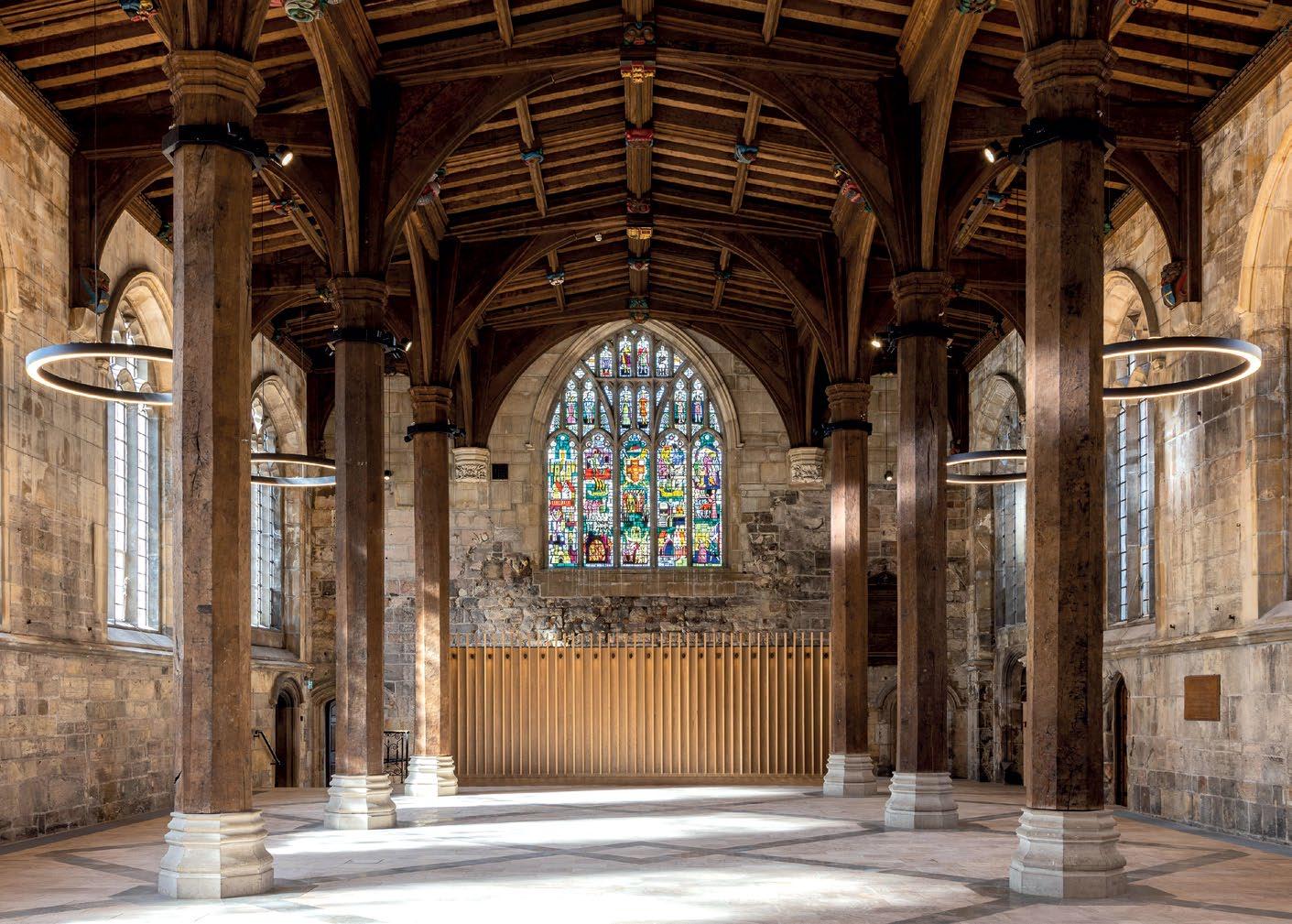

wider coverage of building performance. While a large proportion of buildings entered into the awards have onsite generation, the energy flows associated with the building and onsite systems are better reported than in previous years. This indicates better metering set-ups, as well as better monitoring and analysis.
In recent years, few entries had complete and reliable enough data to estimate the building’s energy use intensity (EUI) with reasonable confidence, but, importantly, this is now possible for the majority of entries.
What the data tell us
Last year’s data shows trends in delivery processes applied across the projects, similar to previous years. As expected, projects often used energy performance modelling (rather than just compliance modelling) – for example, Passive House Planning Package (PHPP) or CIBSE TM54 more generally. Many of them set energy performance targets beyond regulatory compliance, sometimes as contractual targets. They carried out post-occupancy evaluation, with attention to energy use as well as factors beyond it, such as indoor air quality, temperature monitoring, and interviews or surveys of occupants.
The new-build entries had lower energy use than the average building stock, sometimes significantly so; however, energy use was still higher than industry targets from the RIBA 2030 Challenge and LETI for the sectors where these targets
SGA Consulting was crowned CIBSE Building Performance Champion for its retrofit of York Guildhall
CIBSE AWARDS | DATA ANALYSIS
Kyoto City Hall Annex Building is CIBSE’s current International Project of the Year
14 June 2024 www.cibsejournal.com
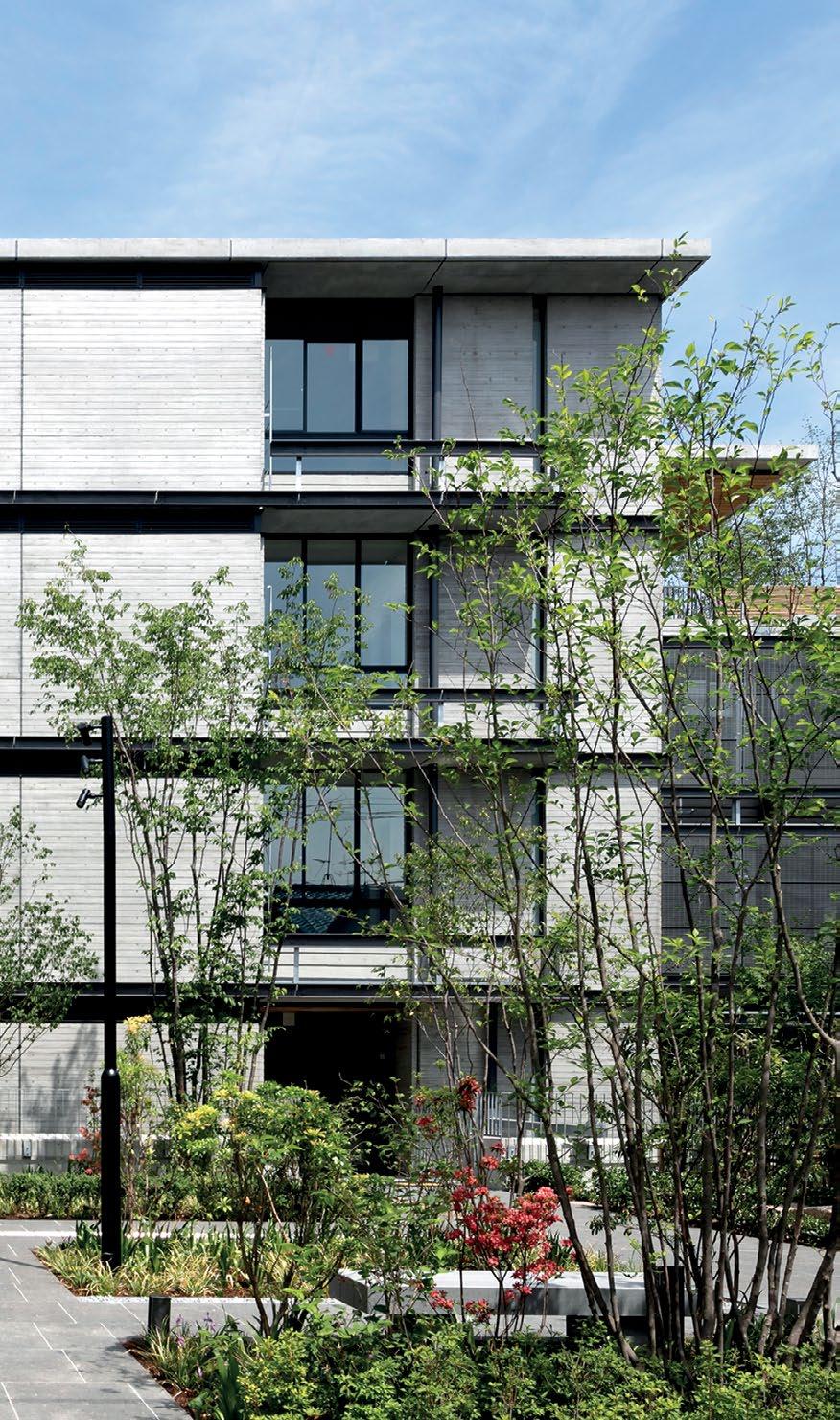
“For the majority of entries, the data is reliable and complete enough to estimate the building’s energy use intensity”
are most established, such as homes, offices and schools.
In future years, the NZCBS, due for beta release later this year, will provide a further point of comparison, applicable across a wide range of sectors.
The majority of projects, and all the newbuild ones, had onsite photovoltaics (PVs) –in some cases with significant export as well as self-use. The contribution of these PV systems varied significantly across projects, on average around 60-70kWh/m2 per yr building footprint (ranging from 35 to 140), covering, on average, around 30% of the building’s annual energy use (ranging from 5% to 55%).
For comparison, in last year’s Technical Update Consultation, the NZCBS proposed an approximate target range of 80-120kWh/ m2 per yr for non-industrial buildings; this was only a draft and is being reviewed ahead of the beta release.
CIBSE looks forward to your entries, and wishes you all the best of luck! CJ
Analysis of entries to 2024 CIBSE Awards
60% 70% 50%
of projects followed Soft Landings or similar activities (2023: 46%)
of projects had energy performance targets at the design stage (eg, total energy use, DEC rating), of which 30% contractual (2023: 69%)
of projects stated that energy performance modelling (TM54 or PHPP) had been carried out (2023: 62%) had carried out some form of post-occupancy evaluation (eg, user surveys, IEQ monitoring) beyond just energy use (2023: 85%)
80% 50% 30%
of entries had an EUI considered to be based on reliable and complete information (2023: 30%).*
of projects were all-electric (2023: 54%).
None was served by district heating (2023: 8%)
60%
of entries, and 100% of new-build entries, had onsite renewables, all PVs (2023: 54%).
Average PV output was around 60-70kWh/m2/yr
of entries had carried out an embodied carbon assessment of the whole building (2023: 53%)
*The remaining 20% showed some ambiguity in the data, because they used ‘electricity equivalent’ kWh without a fuel breakdown, or because of discrepancies between the figures provided for total, grid-supplied and PV-supplied electricity
KEY CHANGES FOR ENTRIES TO 2025 AWARDS
Two new categories have been introduced:
■ Client of the Year, to recognise the crucial role of clients in driving whole life building performance. These are open to clients from the public or private sector, for entry by nomination by consultants, contractors or other parts of the client’s supply chain.
■ Leadership, to recognise organisations, initiatives and individuals that have demonstrated exceptional leadership in climate action, whether towards net zero and/or climate adaptation. This does not have to apply to a specific building project and could include, for example, non-profit organisations or local authorities demonstrating exemplar action in these areas.
The Digital Innovation awards have been split into two categories – Project Delivery and Organisational Change – to reward the wide variety of entries received in this dynamic field. Other changes are relatively small. For example, the Project of the Year sectors have been reorganised to better align with commonly used categorisation in industry and with the sectors of the upcoming Net Zero Carbon Buildings Standard.
Deadline for entry: 30 August To enter visit www.cibse.org/bpa
www.cibsejournal.com June 2024 15
CIBSE AWARDS | DATA ANALYSIS
All projects
Championing competence
CIBSE President Adrian Catchpole reflects on the highlights of his 12 months in office, which have had a particular focus on improving building services competence and attracting the next generation of talent through the launch of the CIBSE STEM Ambassadors scheme
As my year as CIBSE President comes to an end, my overarching feeling is one of immense pride. Pride at having been able to represent CIBSE at so many events across the world, but also pride in all that the Institution and our members have achieved together.
The vast output of publications, events, awards, training and knowledge sharing is testament to the passion and drive we have as an industry to meet our net zero carbon targets.
One of the biggest highlights of my year has been meeting so many members. I have been privileged to visit many CIBSE regions, including the UAE and Ireland. It has been incredible to witness first hand the huge respect that CIBSE, and its guidance and knowledge, enjoy across the globe.
The key message in my Presidential Address last year was a call to industry to ‘take a lead’ – and I have definitely felt this call being taken up.
The launch of the CIBSE STEM Ambassadors scheme, which was a priority for me, has already had an impact, with 185 ambassadors registered to date. I’d like to thank every one of you – your contribution will make our profession more visible to those in education and encourage young people to see themselves in engineering roles. Early engagement with potential engineers in schools and colleges will make them aware of the rich and varied career opportunities in building services.
I also recognise the need for ongoing support and encouragement as we move along our career paths. The benefits of guidance and advice from someone more experienced are countless, so I was delighted to launch the CIBSE Mentoring Programme.
Mentoring’s ability to empower individuals, enhance skills and foster career advancement presents an opportunity for mentors and mentees to engage in a relationship that propels professional and personal growth. We have already received very positive feedback from those involved.
I also urged the industry to take the lead in driving the net zero agenda, and I saw first hand the impact that CIBSE is having during COP28. Attending and speaking at the event with CIBSE CEO Ruth Carter was another highlight of my Presidential year. Being part of COP28 gave CIBSE a platform on the world stage, and it was entirely appropriate that we were there. The feedback we received during our visit highlighted how vital our guidance and expertise is, and demonstrated the worldwide respect that our knowledge enjoys.
Adrian Catchpole presents a CIBSE Apprentice of the Year award to Sidney Hargreaves

CIBSE’s technical contributions in setting standards for achieving better building performance, and its ongoing activities on net zero carbon, are vital in the drive for a more sustainable future. Central to this is CIBSE’s TM65: Embodied carbon in building services: a calculation methodology, which has garnered significant interest this year. This document is helping industry take leaps in evaluating embodied carbon emissions in building services design, alongside operational carbon emissions. A sign of CIBSE’s global relevance is that, this year, we published a guide to adapting TM65 to local use (TM65LA) and have worked with various regions to produce versions for Australia and New Zealand, as well as the UAE/Middle East and North Africa.
Another central theme of my Presidential Address was the need for competence, and I was delighted to see the publication of the updated CIBSE Guide M: Maintenance engineering and management. The guide is a key tool for ensuring competence, and contains all the information needed for the successful operation of a building’s services while ensuring buildings are safe and optimised for energy performance.
CIBSE Chartered Organisations is another move towards cementing our commitment to competence across the industry. This new programme will provide a robust framework for demonstrating competency, professionalism and adherence to the highest standards.
It has been an outstanding year for CIBSE and I can’t begin to cover all that has been achieved – but I do want to note a couple of other highlights. The Technical Symposium, in particular, stands out for me; the leading academics and building services engineering experts who presented were truly inspiring. Likewise, hearing from our rising stars and those who will be instrumental in driving ahead with our environmental targets at the CIBSE Young Engineers Awards was a special evening. I look forward to watching their careers flourish.
Thank you to all the members, volunteers and CIBSE staff who have welcomed me over the year – I look forward to continuing to work with you as I support Fiona Cousins in her Presidential year.
www.cibsejournal.com June 2024 17 CIBSE PRESIDENT | ADRIAN CATCHPOLE’S YEAR IN OFFICE
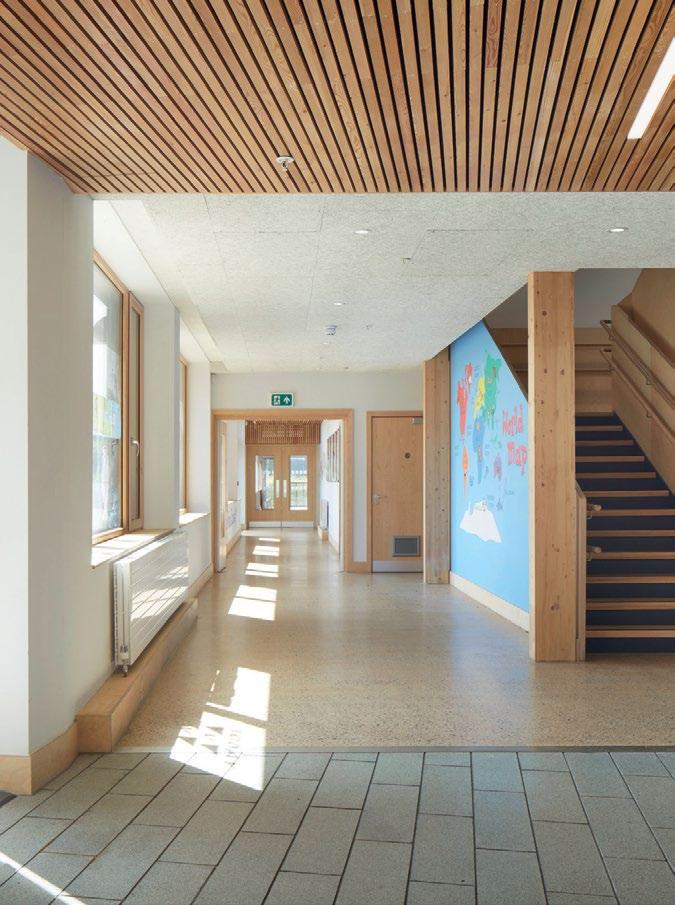
Hackbridge Primary is the first Passivhaus Plus-certified school, setting a new standard for sustainable design and operational efficiency. Andy Pearson talks to members of the project team about the award-winning scheme
PERFORMING BEYOND EXPECTED

ackbridge Primary is the first school building in the UK – and, potentially, the world – to be certified to the Passivhaus Plus standard. Completed in October 2019, this pioneering project in the London Borough of Sutton combines rigorous Passivhaus levels of fabric energy efficiency with renewable technologies, to deliver a school that generates more energy than it consumes over the course of a year.
HPROJECT TEAM
Client: London Borough of Sutton
Architect and Passivhaus consultant: Architype
M&E design: Introba (formerly Elementa)
Contractor: Willmott Dixon
Certifier: Warm
This groundbreaking scheme sets a new benchmark for zero carbon educational buildings – an achievement acknowledged at the 2024 CIBSE Building Performance Awards, where it won Project of the Year –Public Use. The judges said the design team met the brief with an exceptional design that successfully combined ‘highperforming building fabric and highperforming engineering services’.
The school’s exemplary eco-credentials responded to the client’s ambitious ‘One Planet Living’ brief and were supported by planning requirements. Its location,
between a conservation wetlands area on Metropolitan Open Land and the pioneering BedZED eco-village, meant that the school had to be zero carbon in operation, effectively, to gain planning approval.
Architype, the scheme’s architect and Passivhaus designer, suggested the Passivhaus Plus standard. ‘In 2014, we said, if you want to get this over the line with the planners you need to say you’re net zero, and the only way we believe you can demonstrate that is through Passivhaus Plus,’ says Christian Dimbleby, an associate at Architype, which worked with engineer Introba to develop the scheme.
The school stands on a shallow, insulated, concrete-raft foundation, incorporating ground granulated blast-furnace slag – a byproduct of iron production – as a binder to lower the slab’s embodied carbon.
Its foundation is the only major nontimber element in the two-storey school’s construction. The entire superstructure, walls, roof, composite window frames, first-floor slab and cladding are all formed
18 June 2024 www.cibsejournal.com
CIBSE AWARDS | HACKBRIDGE PRIMARY SCHOOL


from timber, after Architype used ECCOlab software (an energy, carbon and cost calculator) early in the design process to select materials with low embodied carbon.
To further reduce emissions, all soil excavated during construction has remained on site and has been used to create grass mounds that surround the playgrounds.
To minimise future embodied carbon emissions, partitions between rooms are
designed to be moveable, to allow spaces to be easily reconfigured as the school evolves. Similarly, the school is designed to be extended easily to accommodate an increased pupil intake, without the need for reconfiguring the existing structure or major interventions on the building services.
‘We’ve designed the building so the circulation spaces, assembly hall and plant work for a two-form entry,’ says Dimbleby.

“One of the benefits of Passivhaus levels of fabric insulation is that we didn’t have to locate the radiators under the window”
As a Passivhaus building, the L-shaped school has a highly insulated and airtight envelope, to minimise fabric heat losses, control heat gains and provide excellent levels of comfort. The large school hall is positioned facing east-west and serves to help block traffic noise from the nearby main road. The hall shelters the adjoining classroom wing, which faces north-south to optimise solar gains.
Brise soleil and an oversailing roof provide shade to the southern elevation to prevent the classrooms from getting too warm in summer, in compliance with Passivhaus overheating criteria and CIBSE TM52.
‘We did a lot of work with Introba on optimising window positioning and sizing,’ Dimbleby explains.
Classrooms have mixed-mode ventilation, allowing teachers to open windows when conditions are suitable (see panel, ‘Ventilation strategy’).
In winter, heating is provided by an ICAX 70kW ground source heat pump (GSHP) system. This extracts heat from the ground via eight, 130m-deep boreholes and stores it at 42oC in a 300-litre thermal store.
A low-temperature hot water circuit, operating at 42oC flow/37oC return, supplies low-temperature radiators in the classrooms and an oversized heating coil in the air handling unit (AHU).
1 Good solar orientation – glazing and shading
2 High-performance fabric – no thermal bridges
3 Airtight envelope
4 MVHR connected to GSHP
5 High comfort levels
6 Low primary energy
7 Triple glazing
8 Natural ventilation
9 Reduction in small power 10 PVs
‘One of the benefits of Passivhaus levels of fabric insulation is that we didn’t have to locate the radiators under the window,’ says Graham Day, associate principal engineer at Introba.
Using the ground as an interseasonal heat store enables the boreholes to provide cool water to temper the fresh air supply in summer. In this mode, the heat pump is bypassed so that ground-temperature water (at about 10oC) is circulated to the AHU cooling coil. Coolth is also recovered from exhaust air by the AHU’s thermal wheel.
‘While we’re extracting coolth from the
www.cibsejournal.com June 2024 19 CIBSE AWARDS | HACKBRIDGE PRIMARY SCHOOL
The Passivhaus Plus-certified school has an all-timber superstructure
Figure 1: Passivhaus strategy
VENTILATION STRATEGY
Classrooms are provided with mixed-mode ventilation. When conditions are suitable, teachers can open the windows. For the remainder of the time, an AHU with thermalwheel heat recovery ducts fresh air to a bulkhead at the back of the classrooms.
Air returns through acoustic attenuated transfer ducts into the circulation corridors, from where it can permeate into the school hall and the toilets and be ducted back to the AHU, so that heat or coolth can be recovered before the stale air is discharged. In addition, when the kitchen is in use its extract incorporates a runaround coil to capture heat from the exhaust air, which is also used to temper the supply air.
This cascade approach to ventilation means there is no need for an additional air supply to the main hall because, if pupils are in there, they are not in the classrooms, so the fresh air they would have consumed will make its way through the building’s core to the hall. ‘The concept was accepted by Building Control, which enabled us to tick the Passivhaus ventilation criteria,’ explains Simon Ebbatson, senior principal at Introba. Budget constraints prohibited a variable air volume system, so the ventilation is constant volume, controlled on a time clock. The controls do, however, incorporate a reduced-volume mode for community use of the hall at evenings and weekends. In this mode, fresh air is not supplied to the classrooms but directly to the hall and admin areas used by the community.
ground we’re warming it up, which helps the heat pump operate more efficiently in winter,’ Day explains. Because supplying cooling only requires a very small amount of power to run the circulating pumps, it is beneficial to do so, adds Day, because it enables the heat pumps to work more efficiently in winter. ‘It is better than free cooling – it is beneficial cooling,’ he says.
For optimum system performance, annual heating and cooling loads should be balanced, so the heat removed from the ground in winter is put back in summer. ‘On this scheme, we’ve not managed to achieve a precise balance, but there is still a beneficial heat exchange,’ Day says.
A separate 40kW heat pump connected to the same borehole array is used to preheat the domestic hot-water thermal store to 52oC. A gas-fired water heater is used to provide top-up heat to the vessel and is available to provide backup to the heating system. ‘Improvements in technology mean that, if we were designing the system today, we’d be able to heat the domestic hot water entirely by heat pump,’ explains Simon Ebbatson, senior principal at Introba.
The temperature in the domestic hot-water network is maintained using a conventional circulation system, but with microbore pipework connections to individual taps.
‘Passivhaus penalises you heavily on dead-leg lengths, so we’ve designed the system to ensure there is no more than a

ENERGY
Operational energy
■ Target annual energy use
■ Actual metered energy use
■ Total energy produced by PVs
Embodied carbon
kWh per yr
kWh per yr
kWh per yr
■ Target upfront embodied carbon No target formalised <500kgCO2e/m2 A1-A5
■ Actual as-built embodied carbon 499kg/CO2e/m2 A1-A5 (excluding sequestration) 405kg/CO2e/m2 A1-A5 (including sequestration)



litre of water in any one of these,’ says Day.
To achieve Passivhaus Plus, the school must offset all energy use over the course of a year, including unregulated loads. To do this, it incorporates 424m2 of photovoltaic (PV) panels, designed to deliver 81kWp. The panels are supported on frames above the green roof, where a symbiotic relationship means that panels provide shade to the vegetation, while transpiration from the vegetation and evaporation from the growing layer,help cool the panels, improving their output.
The downside of using PVs to achieve an energy balance on a school is that the panels provide the highest electrical output on summer days, when the school is closed. While the school can sell this surplus electricity to the Grid at a relatively low price, it does still have to buy electricity from the Grid at a much higher price to make up for the electricity shortfall on shorter, darker winter days. The school achieves an annual energy balance, but there is still a net cost for electricity. ‘Unfortunately, achieving an energy balance does not necessarily result in a financial balance in today’s market; we hope this may change in future,’ Day says. See Figure 1 for energy performance data.
The school received its first intake of pupils just before the Covid pandemic, which hindered its operational optimisation and, subsequently, its ability to achieve net zero energy in operation. There were also issues with a faulty buffer vessel and three of the photovoltaic inverters failed. School staff, too, struggled to come to terms with the nuances of running a Passivhaus Plus school – for example, knowing when to open

20 June 2024 www.cibsejournal.com CIBSE AWARDS | HACKBRIDGE PRIMARY SCHOOL
77,876
85,861
45,077
West
elevation East
elevation
(front)
(rear)
South elevation
The west, east and south elevations of Hackbridge Primary School
Energy use intensity (EUI)
typical practice CIBSE good practice LETI school Hackbridge initial monitoring Hackbridge net zero -40 -20 0 20 40 60 80 100 120 140 160 ■ Fossil fuel ■ Electricity ■ Renewables ■ Total EUI kWh m-2 per yr
Figure 1: EUI of Hackbridge Primary School compared with CIBSE typical and good practice, and LETI school benchmark
CIBSE





the windows and when to take advantage of free cooling.
To their credit, the engineers and architect have remained committed to the project and have continued to be involved through a voluntary soft landings arrangement. In addition, contractor Willmott Dixon has implemented its Energy Synergy process, to measure and verify the school’s operational energy use by comparing metered data against monthly Passive House Planning Package (PHPP) targets, which has helped highlight some anomalies. For example, a building management system (BMS) demand signal to the GSHP stopped working after a software update to the BMS. This was picked up by a sudden increase in gas consumption.
The team’s perseverance has paid off; four years after the school opened, the latest sub-metered data shows energy consumption and generation is very close to the PHPP design targets and on track to achieve net zero energy (see Figure 1).
This pioneering school is finally living up to its A+ Energy Performance Certificate billing. With an energy use intensity of 42kWh.m-2 per yr, Architype says the school exceeds RIBA’s 2030 operational targets and, with upfront embodied carbon with sequestration of 405kg CO2e m-2, meets LETI’s 2020 embodied carbon targets.
The building’s impressive green credentials are used to enrich the school curriculum and bolster environmental awareness among the pupils. This makes it a great example of how we can embed environmental design in our school buildings and inspire the next generation. CJ
“The latest sub-metered data shows energy consumption is very close to the PHPP design targets and on track to achieve net zero energy”
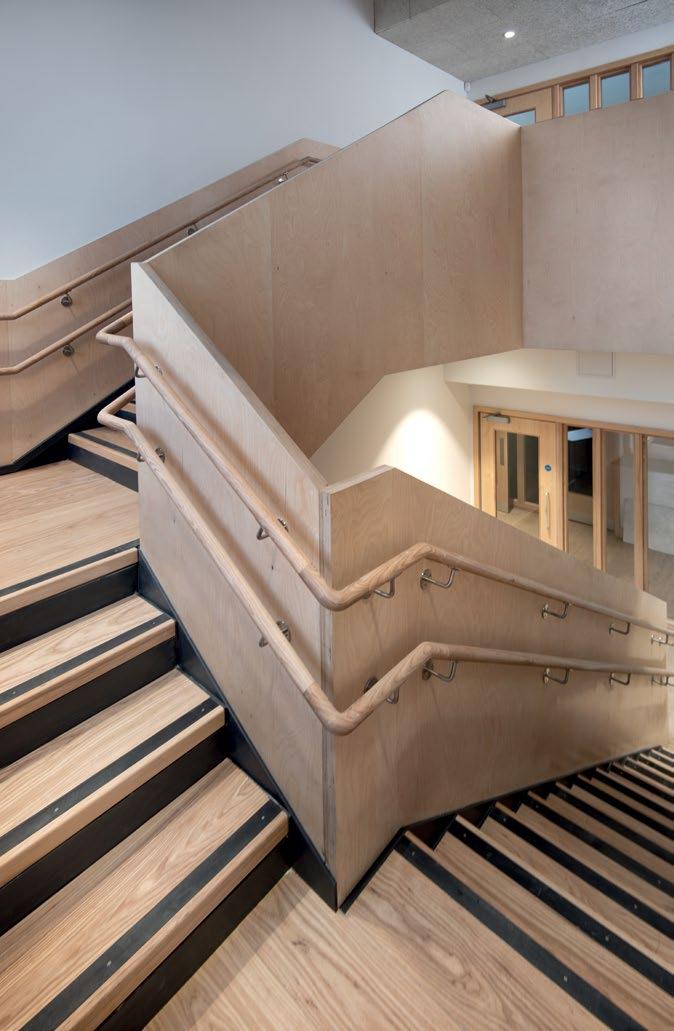
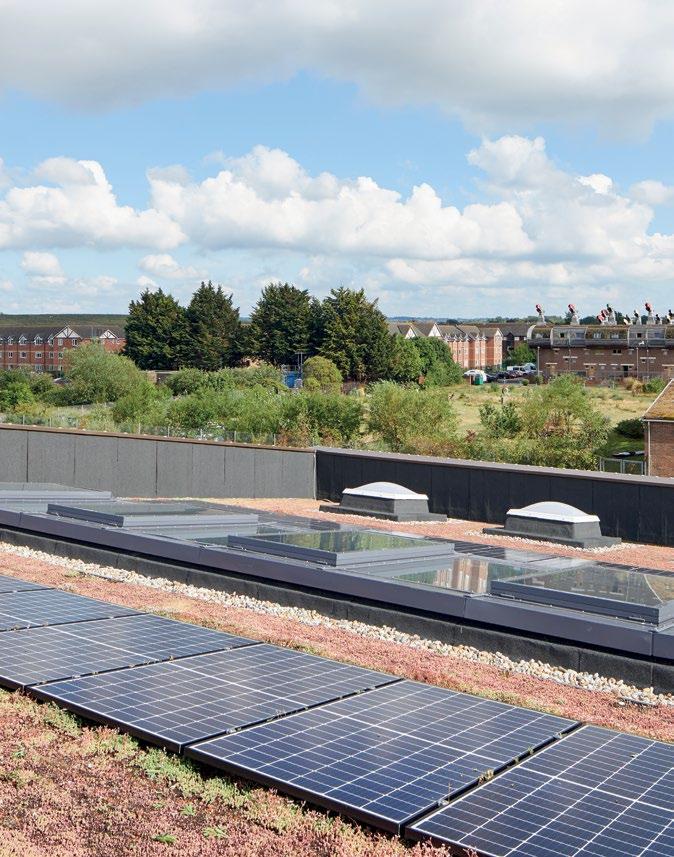
www.cibsejournal.com June 2024 21
CIBSE AWARDS | HACKBRIDGE PRIMARY SCHOOL
The 424m2 of PV panels are designed to deliver 81kWp
The school meets LETI embodied carbon targets
Opening windows are key to the Passivhaus strategy
Pupils arrived just before the Covid pandemic







SPONSORED COLUMN
Lighting a way to workplace wellbeing

LED lighting has tremendous potential to be an effective, lowcost, and low carbon solution for supporting health and wellbeing in the workplace.
Numerous research studies and the International WELL Building Institute have documented the link between well-designed lighting systems and occupant comfort and wellbeing.
Because lighting affects our perceptions and moods, it also impacts health and productivity. Light controls the circadian rhythm; it promotes specific chemical reactions and affects production of the hormone melatonin, which plays a key role in sleep. Light can positively influence our ability to sustain attention during the day and wind down at night.
Well-designed LED systems have the potential to replicate sunlight far more closely than traditional fluorescent lamps. Rapidly developing smart technologies also mean LED luminaires can be adjusted in both intensity and colour throughout the day.
Importantly, this places LED lighting at the heart of businesses’ Environmental, Social and Governance (ESG) strategy, and a wider approach to sustainability. A combination of progressive employer attitudes and a focus on Social Value in public sector procurement, and tightening regulation in the EU, is prompting firms to increase their focus on social issues, including occupant health and comfort.
Through good lighting design, employers can both create healthier workplaces and reduce their impact on the environment, helping to fulfil all elements of an ESG strategy. It follows that lighting is far more than a functional necessity – it is a highly powerfu l tool for supporting employee wellbeing, and the broader sustainability agenda.
■ DEBBIE-SUE FARRELL, head of wellbeing and manager of marketing, Tamlite Lighting

WHY COMPETENT WORKERS MEANS SAFER BUILDINGS
ADDRESSING AIR QUALITY IN THE URBAN ENVIRONMENT
Wellbeing principles take root at Eden, New Bailey in Manchester
June 2024 | www.cibsejournal.com | Sponsored by JOURNAL CIBSE
HEALTHY OUTLOOK


LIGHTING WEL

How does light impact on life, health and productivity?


Why is Wellbeing important to businesses and employers? What role does lighting play in Wellbeing?
All these questions can be answered by Tamlite Lighting.


Book a CIBSE Approved Lighting for Wellbeing CPD NOW!

June 2

FOR... LBEING





tamlite.co.uk/wellbeing
Wellbeing is at the core of Manchester’s Eden building, which features the biggest green wall in Europe and has been designed to ensure tenants have the potential to achieve Well Certification. Andy Pearson finds out how wellbeing and sustainability were baked into the design
Manchester’s garden of Eden
‘We took the principles of Well and embedded them in the design from the outset,’ says Simon Wyatt, sustainability partner at Cundall. He is talking about Eden, New Bailey, a pioneering £36m, 12-storey office building that was recently completed in Salford, Manchester, for which Cundall has responsibility for the sustainability strategy and MEP design.
This landmark 10,500m2 building, hidden behind a giant green wall of 350,000 plants, is the first new build scheme to achieve a Nabers UK 5.5-star ‘Design Reviewed’ target rating for landlord energy consumption. Its designers also set out to minimise upfront embodied carbon. The as-built figure of 620kg CO2e m-2 is impressive given that, when it was designed in early 2020, there were ‘no targets and no definition for 90% of what we were talking about’, says Wyatt.
The building has been developed by ECF (formerly The English Cities Fund), a joint venture between developer Muse, Legal & General and Homes England. Its outstanding green credentials are the result of a committed developer and it being the first scheme to be built to Muse’s sustainable development brief, which Cundall helped draft.
‘We worked with Phil Marsden, from Muse, from RIBA Stage 0, to help set the brief for the entire design team at the beginning,’ says Wyatt. ‘We set clear objectives, aspiring to achieve the lowest carbon, the best health and wellbeing, and the best biodiversity increase we possibly could’.

The building’s holistic sustainability strategy means that it is Well Building Standard-enabled. Wyatt says this will ensure its tenants can achieve Well certification with their category B fit-out and its subsequent operation. ‘We went through a fit-out pre-assessment, so the landlord has already obtained 20-30% of the credits needed for any occupier coming to Eden who is looking to Well certify,’ he explains.
Wellbeing features incorporated into the landlord’s design encourage tenants to use the stairs, rather than take the lift, by incorporating daylight into the stair core and locating it so it’s easily accessible from reception.
Fresh air supply rates have also been increased on the office floors. The building’s location on a major road junction precluded the use of openable windows, so it has a full mechanical ventilation system. At the time of its design, most commercial offices had a fresh air rate of 12L s-1 per person, but, at Eden, this has been increased to 16L s-1 per person, which, Wyatt says, gives much better air quality.
A 4-pipe fan coil system is used to maintain comfort on the office floors, with heating and cooling provided by roof-mounted air source heat pumps. The fan coil units are supplied with fresh air ducted to the rear of the units from roof-mounted air handling units (AHUs).
The increase in fresh air supply rate enables an element of free cooling to be provided by the AHUs. ‘Too much air and you have an energy penalty, but at
PLANT ROOM
Eden’s most distinctive feature is its living wall, which covers almost the entire 3,300m2 façade from level 1 to 11. Designed in collaboration with Viritopia, the wall includes 32 species of evergreen and perennial plants to give it different colours throughout the year.
The decision to cloak the building in what is now the largest green wall in Europe came from Make Architects, as a solution to improving the public realm, which lacks green space. The wall incorporates automatic irrigation, fed using rainwater harvested from the building’s roof. Sensors detect when water is needed and switch on the water in that area. The system will automatically switch to mains water supply when it fails to rain in Manchester. Unsurprisingly, the building will use more mains water than one without a green façade because there is no rainwater available for other uses.
Viritopia is contracted to look after the green wall, a job that will be carried out from a window-cleaning cradle.
CASE STUDY | EDEN BUILDING 26 June 2024 www.cibsejournal.com

“Optimising the glazed area and incorporating a green wall helps reduce radiant temperatures in the offices, enabling the air temperature to be elevated while still maintaining a comfortable operative temperature”
The ‘punched’ windows allow the building to achieve good daylight levels on the office floors

The green wall will have different colours all year round thanks to its 32 species of evergreen and perennial plants
16 L·s-1 per person, the balance is about right; you get an energy increase for the fans, but you get an energy benefit from the free cooling,’ explains Wyatt.
Cooling loads have been kept low by the designers adopting a small power load of only 8W m-2. At the time, the British Council for Offices’ (BCO’s) recommended a small power load of 25W m-2, based on historic technologies, which, Wyatt says ‘would have caused everything to be oversized and to work inefficiently’.
To come up with the more appropriate small power load, Cundall worked with the project’s MEP concept engineers, Atelier Ten. ‘We convinced Muse to very bravely go for 8W m-2, which is enough to power a laptop and monitor,’ says Wyatt. Adopting this lower figure meant that, when the building was first marketed, it was not BCO-compliant. However, the BCO has subsequently updated its guidance to 6W m-2
In addition to allowing for a reduced small power load, the design cooling loads are also kept to a minimum by the building’s envelope. This eschews curtain walling in favour of a solid façade with what Wyatt calls ‘punched’ windows, as opposed to using full-height glazing.‘We said we wanted to achieve an overall façade U-value of circa 0.6 to 0.65W m-2 K-1, which is very challenging to achieve with curtain walling,’ says Wyatt. This has resulted in a façade where the solid areas have a U-value of just 0.15W m-2 K-1, while the windows have a U value of 1.4W m-2 K-1 Airtightness is 2m3 h-1 m-2 @ 50Pa.
What gives the building its unique appearance is that the solid elements of the façade are covered by a living wall of 350,000 plants. These form a surround to the windows and, because they are visible from inside the building, Wyatt says they contribute to biophilic health and wellbeing. Other benefits of the green wall include: contributing to the area’s biodiversity; absorbing pollution; reducing the urban heat island effect; and helping to lower the air temperature slightly around the heat pumps, which improves their performance.
In terms of cost, Wyatt says the façade was cheaper than a lot of other systems because, behind the greenery, it is ‘a very basic system’. There will be ongoing maintenance costs, however (see box, ‘Plant room’).
Daylight levels on the office floors are also based on Well criteria, rather than on daylight factor. The office floors are described by Wyatt as ‘reasonably narrow’, but through careful design, the punched window solution achieves good daylight levels.
Climate-based daylight modelling was used
CASE STUDY | EDEN BUILDING www.cibsejournal.com June 2024 27
to optimise the location of the façade’s 40% glazed area. ‘We did a lot of solar modelling of the façade; we’ve distributed the glazing so there is slightly less on the south and slightly more on the north, to help create uniform daylight distribution,’ explains Wyatt.
Optimising the position and area of glazing, combined with additional shading from the green wall, helps keep solar gains to a minimum. To ensure the offices are comfortable, the fan coil units are controlled zonally, based on four zones per floor. At the time the scheme was designed, Wyatt says a lot of commercial offices were designed to maintain an internal temperature of 22°C, with very little leeway, which meant simultaneous heating and cooling could occur on the same floor plate. For Eden, the heating setpoint is 20°C, while the cooling is set at 25°C.
Wyatt is keen to explain that, even with a 5K dead band, there is no compromise on comfort because the scheme has been designed based on maintaining the operative temperature, which is a combination of air temperature and radiant temperature. He says spaces with full-height glazing often have a high radiant temperature, so a low air temperature is required to maintain a comfortable operative temperature.
At Eden, optimising the glazed area and incorporating a green wall has helped reduce radiant temperatures in the offices, enabling the air temperature to be elevated while still maintaining a comfortable operative temperature. ‘Even though we have a higher air temperature
within the space, the operative temperature is the same or better than that of a fully glazed office building,’ Wyatt explains.
The higher air temperature in the offices is just one element of the building’s outstanding low-energy design that has helped it achieve a Nabers UK 5.5-star ‘Design Reviewed’ rating. Nabers is the energy efficiency rating system that is gaining traction because a commercial office’s predicted energy performance is subsequently verified once the building is operational, through annual energy consumption monitoring.
Wyatt says experience from Australia (where Nabers originated) shows that, when a building is first occupied, its Nabers rating is expected to drop by about one star. ‘The idea is that the rating improves over a couple of years as the building is fine-tuned,’ he adds. ’According to the Better Buildings Partnership, we can probably expect a half-star incremental increase each year; so, if we achieve 4.5 stars in the first year, we would expect 5 stars in the second, and 5.5 stars in the third, which would be a really positive story.’
Cundall is already working with some of the building’s future tenants to ensure they don’t compromise the Nabers rating. Alongside the tenants, Wyatt says one of the greatest challenges was ‘ensuring that requirements for operational energy, embodied carbon and biodiversity net gain were written into the building contract in a meaningful way, with a clear methodology for measuring, reporting and certifying performance in use’. This meant providing contractor Bowmer + Kirkland with evidence that the design would work. Bowmer + Kirkland will update the rating using as-built information now that it is complete.
Wyatt says a key lesson from this project is that bringing the Nabers independent design review forward from RIBA Stage 4 (technical design) to Stage 3, when designs usually go out to tender, would give contractors more confidence in the operational energy requirements, although this means doing the calculations and simulation much earlier.
Once fully occupied, Eden will be enabled to run solely on 100% renewable electricity, which will further enhance its already outstanding sustainability and wellbeing credentials. CJ
■ SIMON

28 June 2024 www.cibsejournal.com
CASE STUDY | EDEN BUILDING
WYATT MCIBSE is a partner at Cundall and chair of the CIBSE Knowledge Generation Panel
The green wall of 350,000 plants incorporates automatic irrigation, fed using rainwater harvested from the building’s roof
Putting people first
How do we balance wellbeing, efficiency and cost when designing and commissioning commercial lighting? Whitecroft Lighting’s Tim Bowes says cutting carbon shouldn’t be at the expense of occupants’ welfare
Buildings are here for one reason –people. Lighting in commercial buildings should balance a range of priorities to deliver comfortable, stimulating, and welcoming spaces that put people first.
New lighting standards are moving away from task-based design towards a more space-orientated approach, but project decisions are still often dictated by capital cost, energy efficiency and carbon reduction, rather than by the welfare and productivity of people.
Calculations by the World Green Building Council a decade ago found that, on average, a typical business spends 9% of its revenue on rent, 90% on salaries and benefits, and only 1% on energy. However, I regularly see businesses with the sole focus of reducing that 1%, which can inadvertently impact the wellbeing of staff.
This has been driven in part, perhaps, by guidelines and industry priorities postCovid, which have shifted the focus from health and wellbeing to reducing carbon.
New legislation

“End-user engagement is important to achieve buy-in because people are often averse to change”
For existing buildings, this decisionmaking process has been exaggerated recently by changes in legislation, which will force thousands of businesses, schools and universities to source alternative lighting. The quality and effectiveness of that new lighting, however – and its ability to embrace comfort, safety and productivity – will be determined by the questions asked upfront by the people specifying and designing the lighting system.
I regularly speak to businesses about how best to make this transition. Some organisations have grasped it as an opportunity to not only switch to LEDs, but also to consider a range of long-term benefits from their new lighting, such as controls to deliver low-energy solutions.
Others have taken a more conservative approach by choosing lighting solutions that satisfy the lower end of the compliance spectrum and seeking only to reduce that 1% of revenue dedicated to energy. This short-term approach has the potential to cause issues later.
Making people part of change
I recall a conversation with a facilities manager at a large local authority, who felt that current guidance wasn’t fit for purpose and was responsible for the negative response to
a recent office refit. Fluorescent lighting was upgraded to LED, resulting in staff complaining of excessive brightness and flicker, which caused headaches, loss of concentration, and even absenteeism.
The lighting refit had been guided by just two principals: improving energy efficiency and achieving 500Lux. No thought had been given to factors such as glare, colour temperature or the regulation of lighting levels via the use of controls. Crucially, no effort was made to tell employees in advance about the change, its rationale, and what to expect.
End-user engagement is important to achieve buy-in, because people are often instinctively averse to change, and without adequate information they are more likely to push back.
Whitecroft regularly suggests producing information cards for workstations before a refit, to explain what is going to happen, why, and what to expect. For example, the lighting may feel different and may be cooler, but it is in line with best practice.
Take control of change
Another option open to clients is to make gradual changes using lighting controls, to give people time to adjust. While this used to be complex, there are now freely available apps and control systems, such as Whitecroft’s Organic Response, that allow the owner to take much greater control of adaptations.
By managing the change in this way, the owner can finetune the solution for users’ comfort while also helping to satisfy carbon targets, energy costs and the bottom line. These factors are important and should be used to drive change and innovation, but not to the detriment of people.
The savings an organisation can achieve by reducing its 1% energy cost should be an important part of a business case for change, but must always be balanced with wider considerations, such as the long-term welfare of employees – which is where 90% of costs are incurred.
A great example of this in action is the Cundall office, One Carter Lane, London, which became Europe’s first Well-certified office. This people-centric approach has contributed to a 27% drop in staff turnover and 50% lower absenteeism. Like many of the best buildings, One Carter Lane demonstrates lighting that is resilient and adaptable to the shifting priorities of today, so that it can continue to be fit for purpose for tomorrow.
VOICES | TIM BOWES
www.cibsejournal.com June 2024 29
■ TIM BOWES is head of academy for Whitecroft Lighting, light concept adviser for the Well Standard, and chair of the Education and Membership Committee for the Society of Light and Lighting.
The urban emergency
Designers must take a holistic approach to the urban environment, say members of the UK Urban Environmental Quality working group, who explain how elements such as wind, water and the urban form can be addressed to optimise air quality and thermal comfort
Cities are critical for solving problems associated with global climate change. They currently cover less than 1% of global land-surface area, but account for 70-80% of CO2 emissions associated with energy consumption.
As well as being a primary driver of climate change, cities are exposed to its negative consequences, and will have to adapt to extreme weather events, such as heatwaves and flooding. The vulnerable will be hit the hardest if society does not adapt to the changing climate.
One of the greatest environmental risks to our health is ambient (outdoor) air pollution, which leads to increased levels of heart disease, lung cancer and premature deaths. Almost everyone lives in environments exceeding World Health Organization (WHO) guidelines, and some of our children are exposed to pollution levels that lead to reduced lung capacity and lifelong breathing disorders.
Air quality, and its effects, may also be affected by a changing climate. It’s imperative that all routes to improving air quality should form part of a wider urban adaptation strategy.
In 2022, the UK Urban Environmental Quality (UKUEQ) partnership was established by the CIBSE Resilient Cities Group and UK Wind Engineering Society. Its aim was to help cities adapt to climate change by gaining a better insight into the urban environment – including air quality – through the use of urban physics and digital tools such as computational fluid dynamics. UKUEQ now consists of more than 20 organisations from industry and academia.
Some of the key factors determining the quality of the environment include wind, air quality, thermal conditions and acoustics (see panel). Urban physics is about understanding how the ingredients of this urban soup interrelate and are affected by other elements, such as light, water, surfaces, drainage systems and the urban form (morphology), which alters the natural exchanges of energy and water between the surface and air. Ultimately, the multiple factors influencing
the urban environment drive the resulting conditions within designers’ models. (See Figure 1.)
For example, as air speeds near the surface increase, more surface heat is exchanged with the air through convection. Conversely, at lower air speeds, more surface heat is exchanged with the surrounding surfaces and sky through radiation. It is therefore important to take wind and urban morphology into account when looking to improve thermal and air quality environments.
Unfortunately, our industry’s design disciplines tend to work in isolation, with little communication at the engineering level. There is a need for increasing collaboration and integration to improve safety and performance, and future-proof our cities.
Early design discussions that consider urban physics can lead to significant gains for the environment. The impact of decisions should be assessed during the various design development stages.
Knowledge gaps remain significant, impeding all practitioners’ ability to enhance societal resilience and address poor environmental, energy and health issues. So, what is being done to fill knowledge gaps?

Climate data
Vegetation data (+ transport emissions etc)
Surface data:
● Absorption, reflection, transmission
● Sound and water attenuation
● Thermal conduction and capacitance
Figure 1: Urban physics – the science and engineering associated with air, heat, light, sound, water and surfaces URBAN ENVIRONMENTAL QUALITY | OVERVIEW 30 June 2024 www.cibsejournal.com




Figure 2: Increasing the distance from traffic by approximately 2 metres, and assuming road emissions remain the same, is estimated to drop the concentration of NO2 at the buildings, from 39.4 to 34.6μg m-3, a reduction of nearly 14%
To increase resilience, more research and development is needed to improve methods, technology, and overall sustainability. Currently, as a building industry, we still experience failures and poor performance when we engage with new technology. Overall, there is much to do to bring all aspects into a collaborative and integrated approach to solve the problems of the future urban environment. CJ
■ The UKUEQ is a working group of the CIBSE Resilient Cities Group. It will be hosting minisymposia at the University of Birmingham and University of Southampton this year, and will again be hosting a seminar at CIBSE Build2Perform Live, taking place at London ExCeL from 13-14 November.
■ For more details on UKUEQ and its activities, see www.cibse.org/ukueq where you can access the full length version of this article
ABOUT THE AUTHORS
■ Darren Woolf, chair of UKUEQ and the CIBSE Building Simulation Group, George Adams FCIBSE, CIBSE past president, and Stefano Cammelli, chair of the UK Wind Engineering Society
■ The authors would like to thank Ben Marner, at Air Quality Consultants, and Blaise Kelly, at TNO, for their contributions to the air quality sections.
■ For a full list of references, read this article at www.cibsejournal.com
AIR QUALITY
Historically, problems with poor urban air quality were often driven by emissions from road transport and large industry. However, better regulation has led to large reductions in these emissions. Poor urban air quality is now increasingly associated with the behaviour of individuals, in the use of domestic wood burners, for example.
The most effective way to improve urban air quality is to reduce emissions at source, by avoiding certain activities or using alternative technologies. There are many ways this can be achieve during the construction and operation of projects. Localised issues might be addressed by increasing the distance between pollution sources and sensitive users. This can be achieved with green infrastructure, to influence where people spend time and provide a barrier to the flow of air. Plants and trees, and some commercial products, can remove pollutants from air, but are unlikely to achieve significant reductions on their own.
Small changes to urban environments can result in large changes to pollutant concentrations, such as the reduction of space for motor cars leading to less traffic. Moving roads away from buildings can have significant benefits for building occupants (see Figure 2) and can lead to a modal shift away from polluting vehicles.
To reduce exposure to poor air, measures must be taken to improve both indoor and outdoor air, such as providing adequate ventilation, and minimising indoor emission sources and the ingress of outdoor pollutants.
WIND
In cities where ‘day to day’ winds can be moderately high, such as in the UK, a new building can have a negative impact on the wind microclimate within the urban fabric. This is particularly relevant for buildings taller than their surroundings. Stronger winds impacting the upper portion of a high-rise can downdraught to street level and accelerate around building corners and between buildings.
Historically, pedestrian-level wind conditions in the vicinity of a new building development have been assessed, studied and mitigated using experimental wind-tunnel testing. More complex projects often require a series of wind-tunnel workshop sessions, where specialists guide the wider design team on the development of bespoke and sitespecific aerodynamic solutions.
In more recent years, to shorten the construction cycle time an ‘optioneering space’ has been generated, where data-driven approaches, machine learning-based assessments, and computational wind simulations play a much more important role in the feasibility and conceptual stages. This allows for a larger number of design options to be investigated, with wind-related risks better managed right at the start of the project, leaving confirmatory wind-tunnel tests for a later stage.
THERMAL ENVIRONMENT
Factors that play a vital role in defining the outdoor thermal comfort in an urban environment include: air temperature and relative humidity; mean radiant temperature; geometry and materials of buildings; and type of clothing and activity of users.
Guidelines published by the City of London Corporation, together with new wind guidelines, aim to address thermal comfort and improve the quality of the public realm as part of the planning process. Bulk, shape and alignment of new developments can be impacted. The complexity and interplay of the different computational models required to assess urban microclimate conditions mean the process has yet to become common practice. The approach oversimplifies the effect of varying ambient surface temperatures by assuming mean radiant temperature is equal to air temperature. It can therefore only be considered a compliance, and not a performance-based, method.
ACOUSTICS
The World Health Organization ranks noise pollution as the second most common urban environmental stressor in Europe. Prolonged exposure to noise can lead to hypertension, annoyance, sleep disturbance, cognitive decline, and cardiovascular disorders. The annual social cost of urban traffic noise in England is estimated at £7-10bn.
A recent research publication by the European Environment Agency estimated that 113 million people are thought to be annually impacted by long-term exposure to traffic noise levels of at least 55dB(A), day and night.
However, the pursuit of an anti-noise quantitative approach may reduce sounds that are beneficial to our health and wellbeing. For example, the City of London Corporation recognises that noise resulting from the ‘buzz’ of urban areas is iconic, invigorating and an essential element of the city ‘soundscape’. It also recognises the need to provide respite from urban noise and encourages the identification and protection of relative tranquility.
URBAN ENVIRONMENTAL QUALITY | OVERVIEW www.cibsejournal.com June 2024 31
NO concentration ( μ g m ) 80 60 40 20 8m 6m 4m 2mKerbside Road Road Road RoadKerbside 2m 4m 6m 8m 29.8 31.8 34.6 39.4 55.2 60 60 60 60 55.2 39.4 34.6 31.8 29.8 80 60 40 20 NO concentration ( μ g/m 3 ) 8m 6m 4m 2m Kerbside Road RoadKerbside 2m 4m 6m 8m 29.8 31.8 34.6 39.4 55.2 60 60 55.2 39.4 34.6 31.8 29.8
‘Asking the right questions’
As chair of the new Industry Competence Steering Group, Hanna Clarke has a crucial role to play in making sure the construction sector comes together to improve competency and meet the requirements of the Building Safety Act. Alex Smith speaks to the artist turned safety expert with a painter’s eye for detail
‘Two years ago, the Competency Steering Group decided that it needed to be long term and continue to work collaboratively with the industry on competency,’ says Clarke.
‘The CSG broke ground in bringing so many siloed sectors together in unprecedented collaboration. ICSG’s task will be to build on this, bringing in more disciplines and stakeholders, and increasing our engagement and visibility.’
The CSG created Working Group Zero, an oversight committee that looked at how competency would be regulated. Out of that came the Industry Competency Committee (ICC), which sets the competency standards and will be advising the Building Safety Regulator. The ICSG will look to raise industry standards and find where the gaps are in competency, says Clarke.
The formation of the Industry Competence Steering Group (ICSG), in January this year, signalled the start of the latest chapter in the drive to improve competency in the construction industry. Its work will have consequences for the 3.1 million people working in the UK construction sector, as its remit is to raise competency standards across the whole built environment.
To ignore the ICSG’s guidance is to risk breaking the law, as the Building Safety Act – introduced in October 2023 – has competency requirements for all individuals and organisations working in construction, with few exceptions.
The ICSG is chaired by Hanna Clarke, digital and policy manager at the Construction Products Association (CPA), who sat on the ICSG predecessor, the Competence Steering Group (CSG). This was set up by the Industry Response Group after Grenfell to look at competences of those on higher-risk buildings.
The CSG addressed competency shortcomings identified in the 2018 Hackitt review, Building a safer future (bit.ly/44Qc90o), and set up 12 working groups that – from June 2020 until October 2023 – published competency standards and frameworks for construction disciplines, including engineering.
Following its work responding to the Hackitt review, the CSG is now transitioning into the ICSG, which has a remit to develop new standards, competence frameworks, accreditation procedures and learning materials. The working groups will remain, to continue instilling competence in their sectors, but some have moved (see panel, ‘Current activity of working groups’).
‘The ICC is like a mirror that is held up at industry, and it will challenge us,’ she adds. ‘We can give guidance and identify the areas where the problems are, and where we need support We’re looking to provide a much more joined-up approach.’
Defining competence
The CSG published three reports, including Setting the bar (bit.ly/44ReBUC), which defined competence as ‘the combination of skills, knowledge, experience and behaviours that enable a person to undertake responsibilities and perform activities to a recognised standard on a regular basis’.
A similar definition is in the Building Safety Act: it requires ‘appointed individuals to possess the required skills, knowledge, experience and behaviours for their roles, while organisations must demonstrate and evidence their (and their supply chain’s) capability, competence and capacity to fulfil their obligations under Building Regulations’.
Clarke says the focus on behaviour is key: ‘Individuals must not work outside their ceiling of competence.’
BUILDING SAFETY | COMPETENCY 32 June 2024 www.cibsejournal.com
She gives an example in the finishes and interiors sector, where a ‘Responsible No’ initiative (bit.ly/4buf812) is encouraging organisations to state when they are not competent to do work, rather than just saying ‘it will get the job done’.
‘The liability is now high if it’s seen that you are doing things that are outside of your demonstrable competence,’ warns Clarke. ‘If you say you can do something, you must back it up, whether you’re an individual or a team.’
Competency standards
Working Group Zero also led to the creation of a Code of practice for core criteria for building safety in competence frameworks, BSI Flex 8670.v3 (bit.ly/3WQCFFa). Flex is a more open approach to developing standards that allows feedback to be adopted by authors before the final standard is published.
Compliance with the standard can be achieved by mapping new or existing sector-specific frameworks against the core competence criteria and scope.
‘BSI 8670 is vital to know,’ says Clarke. ‘It’s a glorified checklist for the building safety principles you want to include in any competency framework. If any building services industry framework does not reference BSI 8670, the Building Safety Regulator will want to know why.’
The standard formed the core of the UK Standard for Professional Engineering Competence and Commitment
Contextualised for Higher-Risk Buildings (UK-SPEC HRB) published by the Engineering Council. It sets out competences expected

“The liability is now high if it’s seen that you are doing things that are outside of your demonstrable competence”
of engineers who work in the built environment sector, particularly on HRBs. Assessment to UK-SPEC HRB, and admission to the Engineering Council’s HRB Register, provides assurance to building owners that an engineer is competent to carry out work that complies with Building Regulations. CIBSE is one of three institutions licensed to award professional HRB registrations (bit.ly/CJHRBreg).
The flex standard will be published as BS 8670-1 and will sit alongside BS 86702 (bit.ly/CJBS86702), which is a standard being developed by Working Group 12, the products group. It will feature the core requirements for construction product’s competencies and frameworks, and is based on a CPA white paper authored by Clarke, Built environment – proposed construction product competence standard
There are five levels of competence for a range of activities, such as product performance. Levels are graded from E to A, and someone with the highest level of competence can understand the systems and rules, and sign off the product. It means organisations can communicate the levels of competence at which designers and installers are working to the rest of the industry.
A new BSI technical committee, CPB/1 Competence in the Built Environment, manages standards output and has published PAS documents for the two dutyholder roles defined in the Building Safety Act – principal designer (PAS 8671) and principal contractor (PAS 8672) – and a PS 8673 for those managing safety.
Clarke has an unusual background for someone working in building safety. She has a fine arts degree and was an exhibiting artist when she got interested in construction processes while temping at a facilities management company. ‘I was an administrator, but I got curious,’ she says. ‘I kept asking questions about whether we’d done this right. I got into compliance and then data architecture, and started building planned maintenance systems for different buildings.’
She joined the CPA as an executive assistant and project coordinator, and became involved in the competency steering group. ‘The irony of this whole journey is that I can prove my competency to no-one,’ she says. ‘My competence is in asking people a lot of questions and saying “have we thought about this”.’ CJ
■ HANNA CLARKE is digital and policy manager at the Construction Products Association
CURRENT ACTIVITY OF WORKING GROUPS
■ Working group (WG) 1: Engineers. Developing training for all building types following focus on higher-risk buildings.
■ WG 2: Installers. This includes subgroups such as interiors, envelope, civils and building services, and these are grouped around building ‘super systems’.
■ WG 3. Fire engineers. Now working within WG1.
■ WG 4: Fire risk assessors. Creating a new standard BS8674: Framework for competence of individual fire risk assessors – Code of practice, because, currently, there are no standards for fire risk assessors.
■ WG 5: Fire safety regulators.
■ WG 6: Building control professionals. Now sits under the ICC.
■ WG 7: Designers.
■ WG 8: Buildings safety management. Developing PAS 8673.
■ WG 9: Site supervisors.
■ WG 10: Project managers. Under the chair Gill Hancock, at the Association for Project Management, this group published a Competence Framework for Project Managers in the Built Environment in England (bit.ly/CJCompPM).
■ WG 11: Procurement.
■ WG 12: Construction product competence. Currently developing BS8670-2, which is due in autumn 2024.
BUILDING SAFETY | COMPETENCY www.cibsejournal.com June 2024 33
Hanna Clarke has gone from fine art to construction



High per formance 4-way distribution comfort module with cooling, heating and ventilation. PARASOL Zenith offers all the benefits of active chilled beam technology with added flexibility throughout your project. With the options of constant, variable or demand control air flow, PARASOL Zenith provides the optimal indoor climate
SOLVEDONSITE



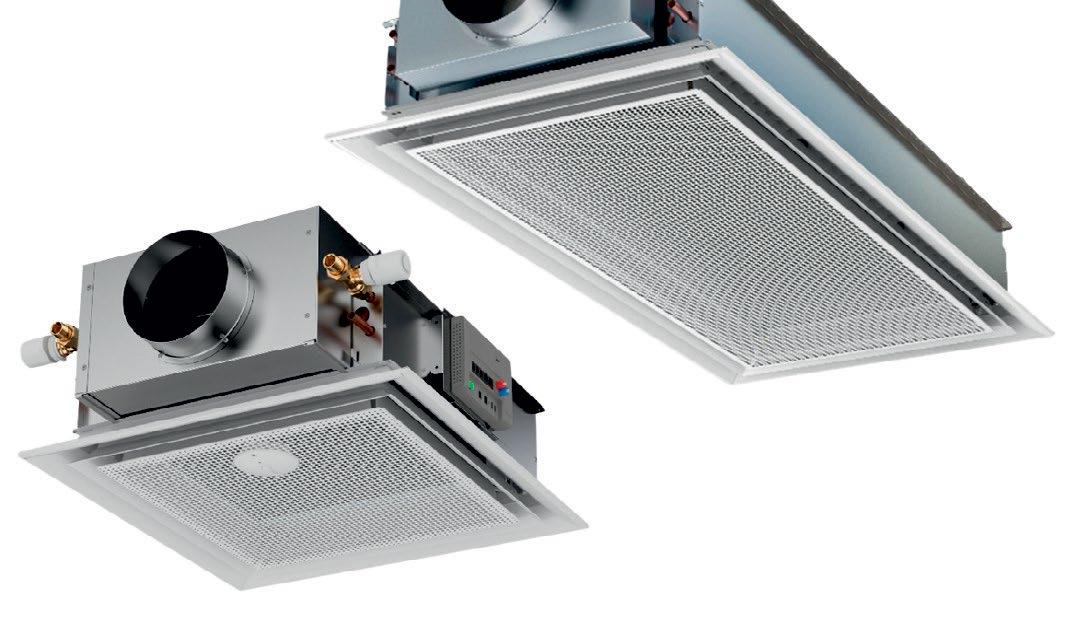

34 June 2024 www.cibsejournal.com PARA SOL Zenith

CPD PROGRAMME

Variable
geometry chilled beams for efficient variable air volume (VAV) systems
This module explores the opportunities offered by the new generation of VAV beams
It has been almost 10 years since a CIBSE Journal CPD last discussed variants and applications of the ‘chilled beam’. In the meantime, the installation of beams has gathered pace, and they are now commonly seen in commercial applications. This CPD will revisit the basic functions of chilled beams, and explore the opportunities offered by the new generation of variable air volume (VAV) beams.
A prerequisite of maintaining safe and comfortable internal environments is good air quality, and this is typically achieved through ventilation. In commercial applications, mechanical ventilation will often also provide comfort cooling by supplying air at a lower temperature than room air. When the outside, ambient air dry-bulb temperature is lower than the conditioned space dry-bulb temperature, this method is energy-efficient, as the outside air provides free cooling. Beyond the ventilative free cooling, moving cooling (and heating) energy around a building can be undertaken far more efficiently by pumping water (or other liquid) in pipes than by moving the same amount of heat in ducted air. So, to increase cooling capacity and decouple air quality control from thermal comfort, ventilation systems are often combined with hydronic or variable refrigerant flow (VRF) systems, such as fan coil units (FCUs), radiant ceilings and chilled beams.
Chilled beams have coils that carry cool – or chilled – water and are mounted at high level in the conditioned space (principally in commercial buildings), and can be fully encased and suspended from the soffit or integrated into a false ceiling. The beams are typically referred to being either ‘passive’ or ‘active’ – as illustrated in Figure 1 and Figure 2. The cool coil exchanges sensible heat with warm room air as the air passes across and between the cooler coils (and their extended surfaces). The temperature of the surfaces of the beam must not fall below the dew-point temperature of the surrounding air, otherwise condensation is likely.
Continuing professional development (CPD) is the regular maintenance, improvement and broadening of your knowledge and skills, to maintain professional competence. It is a requirement of CIBSE and other professional bodies.
This Journal CPD programme can be used to meet your CPD requirements. Study the module and answer the questions on the final page. Each successfully completed module is equivalent to 1.5 hours of CPD.
Modules are also available at www.cibsejournal.com/cpd
Any dehumidification (latent cooling) required in the space must be undertaken by an associated central air supply system.
Passive chilled beams rely on natural convection currents in the room, driven by denser cool air being drawn downwards by gravity and so displacing the less dense warmer air to a higher level where it meets the cool coils of the chilled beam.
Active chilled beams are supplied with ducted ‘primary’ air from a centralised system that will generally be used to meet the ventilation air requirement for the space. The primary air is supplied from the beam’s primary air plenum through small outlets (traditionally ‘nozzles’) directed towards the air diffuser outlet of the chilled beam casing. These fast-moving primary air jets create a high-velocity pressure. The static pressure consequently reduces below that of the adjacent room air, so drawing in room air through the coil of the chilled beam (possibly via a ceiling void) and through the cool (or warm) coil, to be entrained into the stream of air supplied by the nozzles (as in
www.cibsejournal.com June 2024 35
SPONSOR
Figure 2). This induction acts to significantly enhance the velocity of the room air – and so volume flowrate – passing across the coils, so improving the heat transfer to the room air. The movement of the newly conditioned air across the conditioned space can be reinforced by the Coanda effect to ensure good diffusion distances (or ‘throw’) across the ceiling area. Active ‘chilled’ beams may be used as heating sources when supplied with low-temperature hot water (water temperature typically lower than 50°C to moderate air stratification) in place of cool water, while utilising warm primary air.
The primary air is often used to meet the latent loads in the space (that is, the dehumidification requirement) by having a supply air moisture content set at a level to offset the latent gains in the conditioned space.
To ensure dry cooling, which provides only sensible cooling to the indoor space via the hydronic circuit, the circulating water temperature is maintained above the room air dew point. Mitigating the risk of condensation-inducing humidity spikes in rooms involves employing sensors (such as that shown in Figure 3) on the cold-water supply that might trigger the closure of water valves when moisture levels rise. Alternatively, continuous monitoring of room relative humidity can prompt thermostat-controlled closure of water valves nearing dew point conditions. Increasingly, condensation protection methods adjust supply water temperature based on room conditions, allowing for continued heat removal while minimising discomfort owing to reduced cooling capacity.
Dry cooling systems rely on having sufficient air supply rates to manage latent loads. For high humidity environments,


centralised air handling units (AHUs) must dehumidify outdoor air before distribution – this is often achieved through sorption-treated rotors. As discussed in more detail in REHVA’s chilled beam guide,1 dry cooling offers several system advantages. As with any hydronic system, moving water as a means of delivering cooling is far more effective than employing air and, in chilled beam applications, the moderately high chilled-water temperatures of 14°C to 18°C provide good opportunities for ambient free cooling. However, the central AHU typically requires chilled water at approximately 6°C to provide dehumidification. The chiller plant may produce water at 6°C and the required 14°C to 18°C water can be delivered by mixing water from the chiller with return water, which is not an ideal solution; it has a deleterious effect on energy consumption (and system exergy) when compared with a conventional 6°C/12°C distributed chilled-water system, and the higher temperature of water being returned to the chiller plant will reduce its performance (energy efficiency ratio (EER)).
Energy consumption may be reduced if there are dedicated chilled-water production systems for the two different chilled-water temperatures – one for the centralised AHU system and one for the chilled beams. The chillers for the beams can work with a 14°C chilled-water temperature setpoint, which significantly increases their performance, lowers peak cooling demand and reduces the chiller size.
Free cooling can be implemented with, for example, cooling towers (for warmer/drier climates), dry coolers (for colder climates) and geothermal sources (water or ground). However, chilled beam systems will consume more pump energy in comparison with other distributed unit conditioners, as they employ a lower water temperature differential of 2K to 3K, compared with a conventional water temperature differential of 5K to 6K for traditional distributed unit conditioners. Where beams are used for heating, the lower hot-water temperatures of 32°C to 45°C are readily attainable from renewable sources.
Not only is the latent cooling centralised at the AHU, but it also provides driving pressure for room air distribution with central high-efficiency fans as opposed to local, smaller – likely lower efficiency – motor-driven fans that are used in other decentralised room conditioners. Active chilled beams are engineered to operate without the presence of surface water, and typically eschew filters or drainage systems, so reducing service and maintenance needs –resulting in capital and operational cost savings compared with ‘wet’ systems. In such systems, filters would require periodic cleaning or replacement, and drainage systems demand maintenance to prevent microbial growth.
There are various hybrid beams, including the multi-service chilled beam (MSCB), that also integrate other services into the casing, such as ducts, lighting, cabling, audio equipment and sensors. They can provide an alternative to using additional trunking or possibly alleviate the need for a ceiling service void. They may be fitted directly to the soffit to potentially, for example, offer both a lighting and ventilation solution. There are also hybrid systems that also incorporate a room-facing cooled surface to provide radiant heat exchange to the room in addition to the conductive heat exchange as the air passes through the coils and across the extended surfaces.
Traditionally, active chilled beams that supply air in constant air volume
CPD PROGRAMME | VAV BEAMS 36 June 2024 www.cibsejournal.com
Figure 2: Simplified active chilled beam suspended from soffit, integrated into false ceiling
Figure 1: Simplified passive chilled beam mounted above a perforated ceiling
systems employ fixed geometry air paths that require manual adjustment, such as nozzle replacement, to significantly adjust the primary air flowrate. For a VAV setup, an air flow damper is typically mounted in front of the unit to adjust duct pressure upstream of the active chilled beam.
However, the relationship between duct pressure and airflow is not linear, as it follows a square law relationship so airflow (L.s-1) q = k.√pi where k is the flow coefficient and is related to the geometry of the air path, and pi is the inlet pressure (Pa). When the damper reduces the primary air flowrates, the duct inlet pressure drops and the speed at which the air enters the room is consequently lower. This will reduce the Coanda effect, so reducing the throw and increasing the likelihood of draughts. The induction ratio is practically constant, with a fixed value of k, so as the primary airflow is reduced, the amount of induced room air is reduced proportionally, as shown in the green line of Figure 4 – hence the heating/cooling capacity available from the water side is significantly reduced at lower primary airflows. There are also limitations in increasing airflow. Boosting the airflow means increasing the duct pressure; however, the square law relationship can lead to unreasonable duct pressures that can generate increased noise levels. So, although traditional active chilled beams with fixed nozzles can be operated in VAV conditions, it will be within a limited range of primary airflow.
However, active chilled beams are now available where the traditional nozzles are replaced by adaptable geometry ‘slots’ in the supply air plenum. The amount of supply air delivered can then be altered by a controller actuating a change to the slot geometry to alter the value of k. Active chilled beams with variable geometry supplies can operate at different primary airflow rates while the inlet duct pressure remains constant. As the primary airflow rate is reduced by decreasing the size of the openings in the pressure chamber, k reduces, resulting in an increased induction ratio as shown by the grey line of Figure 4. This enables high induction rates and good cooling/heating capacities even at low primary airflows. The maintained duct pressure ensures that the speed of the supply air is kept at a level that can maintain the Coanda effect. Conversely, an increase in primary airflows does not require an increase in duct pressure, so a single unit can deliver a wide range of primary airflows.
When there is a need to change the temperature in the room, several parameters may be altered to adjust the amount of cooling/heating delivered to the room. The primary airflow and temperature, as well as the amount and temperature of water flowing through the coil of an active beam, can be adjusted, controlling the amount of heating/cooling delivered to a room. If it is cold and dry outside, it might be advantageous to increase the airflow when there is a need to increase the amount of cooling. At another point in time, the conditions may be different, and it will be more efficient to increase the flow water rather than to increase the airflow.
Since active chilled beams rely on the induction of room air to generate a flow through the coil, the primary air is always mixed with room air that can be cooled, heated or, when the water valves are closed, unaffected by the coil. So, an
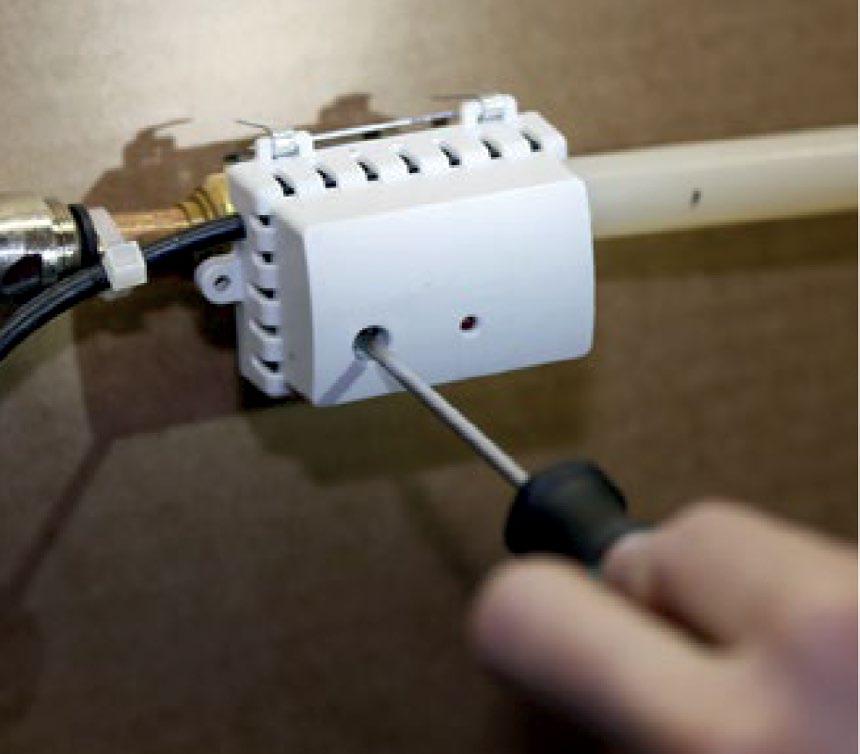


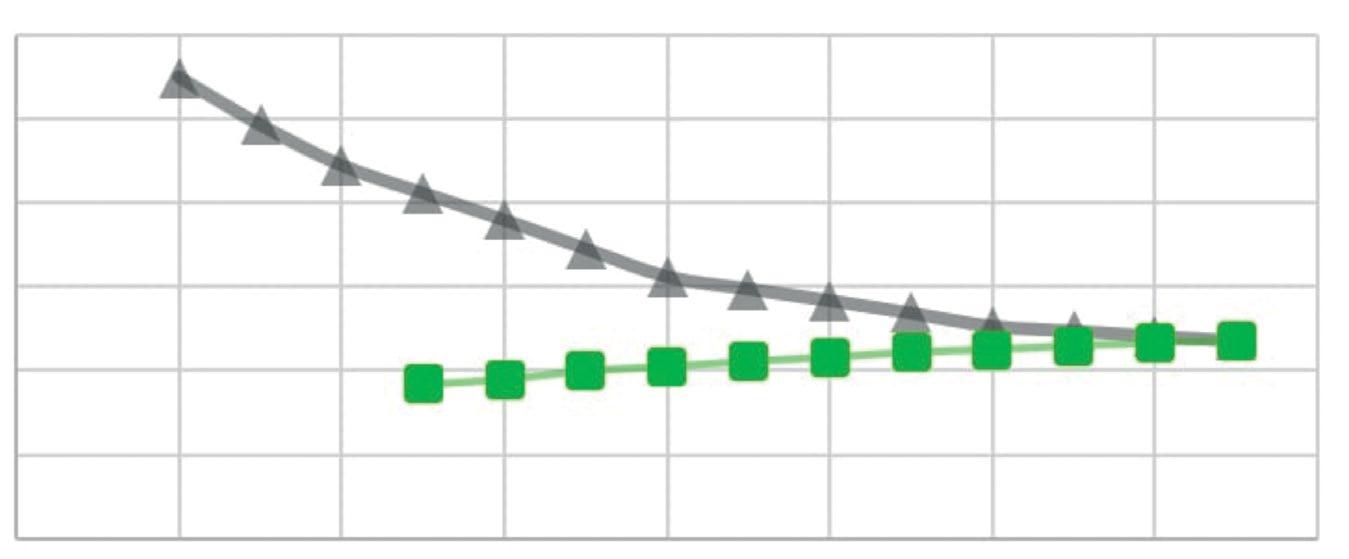
active chilled beam might be considered as an induction diffuser, making it possible to operate with lower primary air temperature than required with most diffusers without facing issues with draughts. A use case for this could be to deliver more cooling via the ventilation air or to reduce the primary airflow rates needed to deliver a moderate amount of cooling, which would make the use of free cooling even more efficient. In the seemingly only recent independent, comprehensive (and reasonably priced) reference dedicated to chilled beams – the REHVA/ASHRAE Active and Passive Beam Application Design Guide1 – it concludes that ‘compared to alternative HVAC systems, beam systems may offer significant savings in operating costs, namely in energy and maintenance. Replacement costs are also lower. …. The increase in the value of the building associated with the increase in the building useable area should be considered in the TCO (total cost of operation) analysis.’ With the advent of active chilled beams with variable values of k (‘VAV beams’), there may be further opportunities to apply this potentially energy-efficient hybrid solution that, if combined with a wellconsidered ‘smart’ control strategy, could help optimise the benefits of combined air and water system solutions.
© Tim Dwyer, 2024.
■ This article was inspired by some recent blogs by Carl-Ola Danielsson of Swegon.
bit.ly/CJJun24CPD1
bit.ly/CJJun24CPD2
Our thanks to him for permitting the reuse of parts of his work in the article.
■ Turn to page 38 for further reading and references.
Primary airflow (L s-1) CPD PROGRAMME | VAV BEAMS www.cibsejournal.com June 2024 37
Induction ratio 6 5 4 3 2 1 0 0 10 20 30 40 50 60 70 80 Variable geometry, variable k Fixed geometry, constant k
Figure 4: Induction ratio as a function of primary airflow for an example beam with variable geometry compared with fixed geometry outlets (Source: Swegon)
Figure 3: An example of a dew point (dp) temperature sensor that is fixed immediately upstream of the cooling. The dp is internally determined using a temperature-compensated relative humidity (RH) element and a high-accuracy thermistor, which are thermally bonded to the metal plate of the sensor. A volt-free contact relay activates when the dp temperature is below the set point (as set, in this case, using a screwdriver adjustment) (Source: Swegon)

Module 233
June 2024
1. How long has it been since a CIBSE Journal CPD article covered chilled beams?
A One month
B 10 months
C One year
D 10 years
E Not known
2. What is a key reason for employing a liquid for complementary cooling (and/or heating) to the air system?
A It is a more efficient way to convey heat
B It is easier to locate leaks
C It is more controllable
D It is safer
E It is the only way to employ free cooling
3. Why should the surfaces of the beam not fall below the dew point of the adjacent air?
A The beam will need integrated legionella control
B The efficiency of the coil reduces
C The latent cooling will be minimised
D The likelihood of unwanted condensation will be increased
E The pressure drop rises and reduces the induced air flowrate
4. In the illustration of the example beam induction ratio, which of these is most correct for a primary flow of 30L.s-¹?
A Fixed geometry beam has one-third the induction ratio
B Induction ratio for variable k beam is 2
C Induction ratios are similar
D There is little induction in both beams
E Variable k beam has approximately twice the induction ratio of the fixed k
5. In the extract from the REHVA/ASHRAE guide (written in 2016), which of these was not referred to as an advantage of chilled beams?
A Increase in the building useable area
B Lower maintenance
C Reduced operating costs
D Replacement costs lower
E ‘Smart’ control can optimise air and water solutions
Name (please print)
Job
Postcode
Email
Are you a member of CIBSE? If so, please state your membership number:
The CIBSE Journal CPD Programme
By participating in this CPD module, you consent to sharing your details with Swegon. Swegon may contact you via email and/or telephone with further information and technical insight on its services. You have the right to opt out from such communications at any time.
I understand that I will receive marketing communications from Swegon after completing this module (please tick here):
By entering your details above, you agree that CIBSE may contact you with information about CPD and other training or professional development programmes, and about membership of CIBSE, if you are not a member.
Go to www.cibsejournal.com/cpd to complete this questionnaire online. You will receive notification by email of successful completion, which can be used to validate your CPD records. Alternatively, fill in this page and post it to: N Hurley, CIBSE, 222 Balham High Road, London, SW12 9BS.
Further reading:
In addition to the REHVA/ASHRAE Active and Passive Beam Application Design Guide, a 2022 paper2 by Latifa et al – Performance evaluation of active chilled beam systems for office buildings – A literature review – provides a good overview of many of the most recent published materials.
References:
1 Woollett, J, and Rimmer, J, Active and Passive Beam Application Design Guide, REHVA/ASHRAE 2016 – bit.ly/CJJun24CPD3
2 Latifa, H et al, Performance evaluation of active chilled beam systems for office buildings – A literature review, Sustainable Energy Technologies and Assessments issue 52, 2022.
CPD PROGRAMME | VAV BEAMS
38 June 2024 www.cibsejournal.com
........................................................................................
Organisation
...............................................................................................................................
title
Address
SPONSOR
SAFE AND PRACTICAL APPLICATIONS
The higher flammability of low-GWP refrigerants in heat pumps and air conditioning systems has to be carefully considered by designers and installers.
Alex Smith
reports
New F-gas regulations and a focus on cutting embodied carbon in HVAC systems mean that reducing the impact of refrigerants on the environment has become a key concern for engineers. To reflect this, CIBSE is asking entrants to its Building Performance Awards to provide information on the global warming potential (GWP) of the refrigerant in their projects and its in-use leakage rate.
F-gases in refrigerants are known contributors to global warming, and the EU F-gas Regulation 2024/573, which came into force on 11 March, aims to further curb the use of refrigerants with high GWP. The regulation mandates that, from 2027, chiller, air conditioning and heat pump systems under 12kW must have GWP limits of 150, and, by 2032, there will be a full F-gas ban in these systems. From 2027, larger split systems and chillers must have a GWP below 750.
is expected to publish a stakeholders’ consultation document this summer, with a draft regulation published in the autumn.
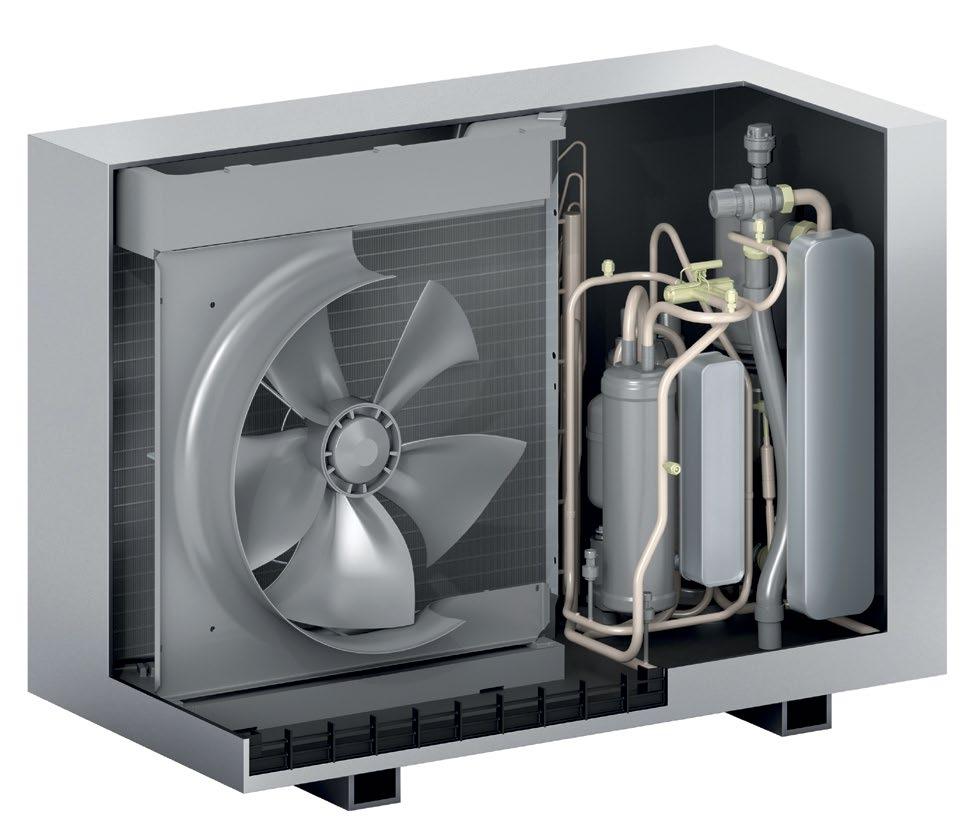
The Net Zero Carbon Buildings Standard (NZCBS), due in the autumn, will also place limits on the GWP of refrigerants used.
A consultation proposed a maximum GWP of 675, which is the GWP of R32, a common refrigerant. It also proposes that refrigerants be accounted for within embodied carbon calculations.
The regulations are driving demand for systems using natural refrigerants, such as ammonia, propane and carbon dioxide, which have near-zero GWP.
This is the experience of Edoardo de Pantz, managing director at Acquaria, which manufactures propane (R290) heat pumps and chillers. ‘The market is running faster than the regulations are. The whole supply chain is asking for nearzero GWP heat pumps,’ he says.
This is part of wider plans to end the use of F-gas, with the EU parliament voting in January to phase-out HFCs, which make up
90% of F-gases, by 2050. This will be enforced by the reduction in HFC quotas set out in the revision of F-Gas III (EU) 517/2014. From 2025, the quotas allocated for HFCs by the European Commission will lead to a reduction of 22% compared with 2024, rising to 12% from 2036. This will result in price rises for remaining refrigerant, which the EU hopes will incentivise a move to low-GWP systems.
The UK is currently drafting its own legislation to align with these rules. It
BESA technical director and Institute of Refrigeration president Graeme Fox says the upcoming ban on high-GWP refrigerants has led to a sharp uptick in propane systems.
Propane has higher flammability than higher-GWP refrigerants, with an A3 safety classing, and Fox says installers will need to upskill to work safely with the refrigerant.
The EU F-gas regulations state that installers will need a refresher course within five years of the implementation date of the latest regulations (April 2029), and every
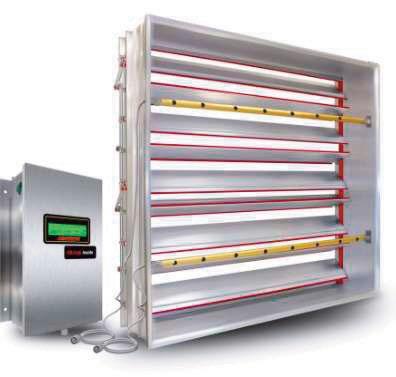















• Accurate and Stable HVAC Measurements Down to Still Air • Premier Specified Airflow Measurement Device • Reliable Thermal Dispersion Technology • No Onsite Calibration is Required cooperward.co.uk +44 118 971 4971 enquiries@cooperward.co.uk
www.cibsejournal.com June 2024 39 SPECIAL
This month: Heat pumps energy use, F-gas regulations, indoor air quality guidance ■ CHILLERS, AIR MOVEMENT, VENTILATION AND HEAT PUMPS
FEATURES
Viessmann’s Vitocal 150-A/151-A propane heat pump
seven years thereafter. But Fox notes that small systems with a GWP of more than 150 will be banned within three years – before the date when installers have to complete the course. He says manufacturers may stop supplying higher-GWP equipment, even before the implementation date
‘Technicians could be installing highly flammable refrigerants before they’ve had the necessary training, which is very much a concern to the industry,’ says Fox.
In response to the lack of awareness around propane, BESA has published a technical bulletin on R290 in air conditioning equipment and its practical application.
Fox says R290 air-to-water monobloc heat pumps designed for housing need special consideration. The refrigerant’s flammability means it must be more than 1.5 metres from an openable window or door, according to manufacturers, says Fox, and because it is heavier than air, it must be more than 1.5m from air bricks and downpipes, to prevent leaking propane from infiltrating the house.
‘In most houses, you’re going to really struggle to get anywhere near the outside of that house and avoid an air brick by 1.5 metres either side of the unit,’ says Fox.
There are also implications for the retrofit of split air conditioning heat pumps in retail outlets or office applications, he adds. A typical application in these sectors is a grid of R407c condensers placed about 300mm apart, perhaps on a gable end. Currently, if one unit fails it can be replaced a similar unit, which is fairly straightforward.
However, it would be impossible to swap in a propane unit, because older units use A1rated refrigerant that does not require Atexrated electrical equipment, such as fan motors and electrical meters, so the neighbouring unit is a potential ignition source. (Atex is the name given to the two European directives for
CHILLERS AND PROPANE
According to De Pantz, three key guidelines are followed to ensure Euroklimat chillers (a partner of Acquaria) are safe: containment of the substance; avoidance of ignition sources; and use of a leak detector.
Most importantly for designers, installers and consultants is that they are aware of the safety standards around handling propane, and that they adhere to these. ‘This is how we can supply the market with propane heat pumps that offer the same peace of mind that we have when commissioning gas boilers in homes,’ he adds.
Every unit is supplied with a standalone gas-detection sensor. 'To make it a viable fuel option, we, as manufacturers, need to build a heat pump with all the safety measures included to catch any leakage,’ says De Pantz.
Other precautions to avoid the risk of possible ignition sources include moving the compressor’s electronic protection module (Kriwan) into the electrical panel, and ensuring pressure switches are Atex-certified.
“There’s no point having the exemption if you can’t get the equipment because the quota for these refrigerants is reducing so quickly”
controlling explosive atmospheres.) ‘There are very serious implications for retrofit and retrospective repair work with the location of these new units,’ says Fox.
The issue can no longer be left to the AC contractor, he adds, because – under the Building Safety Act – the principal designer
OMICRON Zero
• Eurovent certified performance
• First air-source multifunctional heat pump and chiller unit using propane as a near zero GWP, natural refrigerant solution.
has to take responsibility: ‘They have to be aware of it.’
Currently, the European standard BS EN378 governs the safety and environmental standards of air conditioning, refrigeration, chillers, and heat pump systems, and this can be used with three EN60335 product standards that provide more specification details. Several CIBSE guides refer to BS EN378, including AM17 and Commissioning Code R, Guide B and Guide B3. A new version of the European standard is expected later this year (see page 13 to find out more about EN378).
An area Fox believes the EU has overlooked is the application of systems in airports, railway stations and military bases, where flammable A3 refrigerants cannot be used because of the danger of ignition – via sparks from trains and tracks, for example.
‘The EU has a line in the regulations that says higher-GWP refrigerants, such as 410a, can be used if safety standards don’t allow A3 refrigerants, but there’s no point having the exemption if you can’t get the equipment because the quota for these refrigerants is reducing so quickly,’ he says. ‘There needs to be a mechanism to bypass the quota and supply that equipment in these locations.’
For propane chillers, Fox says that –in addition to leak detection and good ventilation – the designer would have to ensure that fans, leak detectors, lights, switches and any power points are Atex-rated. (See panel, ‘Chillers and propane’.)
He is hopeful that issues identified with the latest F-gas regulation will be fed back into the UK’s upcoming consultation document.
‘Just because something is technically feasible doesn’t mean it’s practically applicable,’ he says. ‘We have to be aware of the nuanced application issues that engineers have on the ground.’ CJ

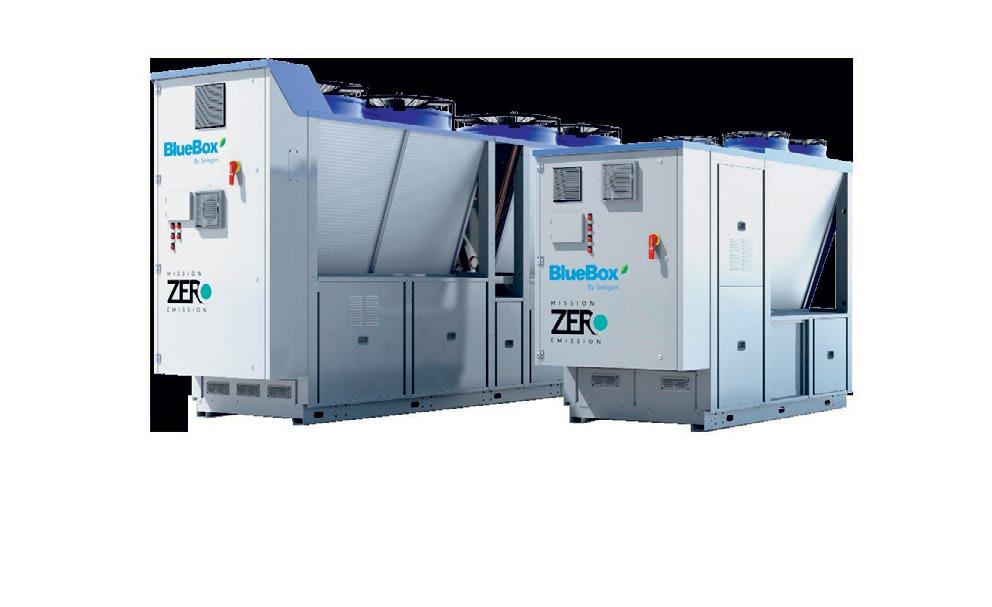
NATURAL REFRIGERANTS | BUILDING SAFETY 40 June 2024 www.cibsejournal.com











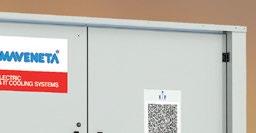
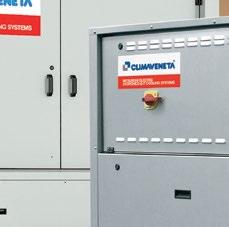















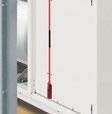


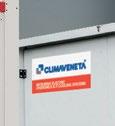

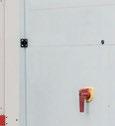

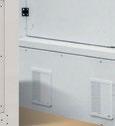

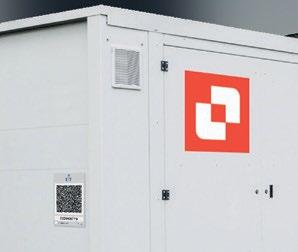

















































































































































































www.cibsejournal.com June 2024 41


































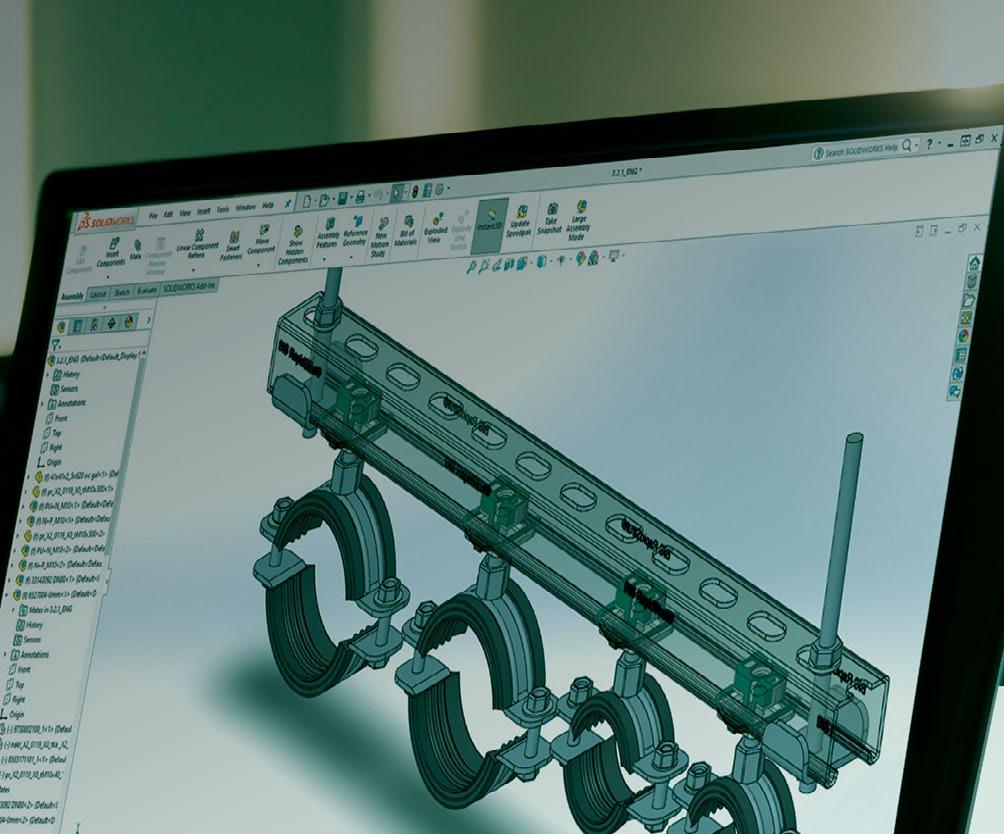












Walraven Project Solutions
As an M&E Fixing specialist we can help you deliver high quality, effective and efficient installations. Our Projects and Technical Support Team can provide product advice, on site support and full system designs for pipe supports, HVAC supports, rooftop installations, fire stopping and more.
We can offer solutions for problems such as fixing to pitched roofs or surfaces, non-standard pipe sizes, corrosive environments and heavy duty installations.
To


42 June 2024 www.cibsejournal.com
get
Find out how we can support you For an overview of our project solutions and services for M&E contractors visit: walraven.com/en/contractors walraven.com Walraven - your fixings partner! ® UK • EUROPE • MIDDLE EAST • ASIA • USA THIRD PARTY CERTIFIED CASWELL FIRESAFE® is licensed to Manufacturing Partners worldwide by FIRESAFE Fire Rated Ductwork® Ltd firesafeductwork.co.uk REGISTER FREE TO JOIN OUR LIVE WEBINAR TUESDAY 11 JUNE (13:00 BST)
in touch today email: technical.uk@walraven.com
The good, bad and illegal
How can you tell whether the indoor air quality of buildings is safe for occupants? DustScanAQ’s Oliver Puddle gives a summary of current regulations and guidelines for monitoring air pollutants
Our health and wellbeing are impacted by the presence of airborne pollutants. In response to our growing awareness of this, indoor air pollutant monitoring is becoming more commonplace. However, air quality is not always regulated inside buildings, so how do owners and occupiers know if their building’s air quality is good, bad or even illegal?
Secondary legislation regulations and guidelines are being used as the working values against which indoor air quality (IAQ) can be assessed.
It can be regulated via health and safety regulations, such as the Control of Substances Hazardous to Health (COSHH) Regulations (2002), to which all places of work have to adhere. Regulation 6(1) of COSHH states that an employer ‘should carry out a suitable and sufficient assessment of the risks to the health of your employees and any other person who may be affected by your work, if they are exposed to substances hazardous to health’. Regulation 10 of COSHH specifies that monitoring is required ‘when measurement is needed to ensure a workplace exposure limit (WEL) or any self-imposed working standard is not exceeded’.
There are legally binding WEL for around 500 substances, listed in HSE EH40/2005. However, WEL only relate to personal (exposure) monitoring of people at work, are calibrated for a healthy working-age adult, and can’t be readily adapted to evaluate or control prolonged, continuous or non-occupational exposure. So, for most office and education settings – and all public and residential buildings – WEL cannot be used to assess building occupant exposure to IAQ.
New buildings, however, are covered by the recently updated Statutory Instrument Building Regulations (2010). Now included in Approved Document F1
* Particulate matter with a median aerodynamic diameter less than 2.5 μm
** Particulate matter with a median aerodynamic diameter less than 10 μm
*** Average of daily maximum 8-hour mean concentration in the six consecutive months with the highest six-month running average concentration
Table 1: Recommended 2021 WHO air quality guidelines
RECENT GUIDANCE:
UK Parliamentary Office of Science and Technology: POSTbrief 54 IAQ (2023) bit.ly/CJIAQPost54
CIBSE TM40 Health and wellbeing in building services (2020) bit.ly/CJTM40
CIBSE TM68 Monitoring indoor environmental quality (2022) bit.ly/CJTM68
CIBSE TM64 Operational performance: Indoor air quality (2020) bit.ly/CJTM64
Defra Air Quality Expert Group: Indoor air quality (2022) bit.ly/3QY72FW Institute of Air Quality Management
and mitigation (2021) bit.ly/CJIAQAMMM
National Institute for Health and Care Excellence Indoor air quality at home (2020) bit.ly/CJNICEIAQ Public Health England (now the UK Health Security Agency) Indoor air quality guidelines for selected volatile organic compounds in the UK (2019) bit.ly/CJPHEVOC
is ‘Means of Ventilation’, providing statutory guidance on ventilation requirements to maintain IAQ.
Within Approved Document F1, Appendix B: Performance-based ventilation, average indoor air pollutant guideline values are set for carbon monoxide (CO), nitrogen dioxide (NO2), formaldehyde, total volatile organic compounds (TVOC) and ozone (O3), largely based on World Health Organization (WHO) guidelines. However, as the document relates to building performance guidance, these values are performance criteria of the assessment of ventilation, not occupant exposure assessment criteria.
For several years, regulations, standards and guidance on IAQ for school buildings have been set out in the UK government’s Education and Skills Funding Agency Building Bulletin BB101. This includes guidelines on ventilation, such as setting a maximum CO2 in teaching spaces, and specific guidelines on IAQ, mainly based on WHO guidelines that ‘should be used for schools’.
The WHO first published air quality guidelines in 1987, which have been updated since. They ‘serve as a global target for national, regional and city governments to work towards improving their citizens’ health by reducing air pollution’.
In 2010, the WHO published guidance on risks associated with pollutants commonly found in indoor air (benzene, CO, formaldehyde, naphthalene, NO2, polycyclic aromatic hydrocarbons, radon, trichloroethylene and tetrachloroethylene), and updated their (general) air quality guidelines in 2021 (see Table 1).
It should be noted that WHO general air quality guideline values ‘do not differentiate between indoor and outdoor exposure’, so they are applicable indoors. Some of the latest 2021 guidelines supersede its specific 2010 IAQ guidelines (eg, for CO and NO2).
They are relevant in all countries and in all exposure settings where COSHH WEL are not appropriate. Organisations, including CIBSE, point to these guidelines for IAQ monitoring. In recent years, other organisations have published IAQ guidance (see left).
■ OLIVER PUDDLE is technical director at DustScanAQ
INDOOR AIR QUALITY | GUIDANCE www.cibsejournal.com June 2024 43
Indoor air quality guidance: Assessment, monitoring, modelling
Pollutant Averaging time Concentration (μg.m3) PM2.5* Annual 5 24-hour 15 PM10** Annual 15 24-hour 45 O3 Peak season*** 60 8-hour 100 NO2 Annual 10 24-hour 25 Sulphur dioxide (SO2) 24-hour 40 CO 24-hour 4,000
PREDICTING HEAT PUMP PERFORMANCE
A
simplified energy analysis
model
for residential
heat pump retrofits aims to show if a system is performing as expected. Tony Day FCIBSE describes the method and how to use it to predict coefficient of performance against daily degree-days
To provide reliable forecasting for energy costs and associated carbon emissions in a residential heat pump retrofit, it is important to understand the building thermal energy performance of the dwelling. London South Bank University (LSBU) is working with partners Parity Projects, RetrofitWorks, ICAX and Cambridge Energy Solutions on a Heat Pump Ready Programme Stream 2 project1, funded by the Department for Energy Security and Net Zero, that aims to provide tools that characterise building thermal energy performance.
The LSBU research uses a degree-day approach based on CIBSE Technical Memorandum (TM) 412, while Parity Projects is exploring Reduced Data SAP-related methods. Both models ultimately want to be able to show whether a heat pump is performing as expected, and whether under-performance can be explained in terms of system deficiencies, weather anomalies, or user behaviour.
The project has installed remote-monitoring systems into 18 houses –mainly older detached properties – with a target of 40 houses to be monitored by the end of the project. Each house has temperature sensors in selected rooms (typically four or five), heat meters for space heating and hot water (where appropriate), and gas and electricity data collection. Weather data is collected via dedicated local weather stations or from commercial sources of local weather.
TM41 describes a degree-day-based approach to estimating and monitoring space heating energy in buildings. It incorporates building heat loss coefficient, building thermal capacity and casual gains –

together with operational factors such as occupancy profiles and control strategies – to capture quasi-dynamic energy performance against external temperature conditions. The complexity of energy modelling is reduced while a degree of mathematical rigour is retained. It modifies the classical degree-day approach by incorporating daily mean internal temperatures and casual heat gains into the degree-day calculation, to give building-specific base temperatures. The degreeday values can be used for performance measurement or future energy estimation – the former for building characterisation, the latter for energy use predictions. This project examines how well the method works at different timescales – daily, weekly and monthly –and its accuracy using the high-quality data sets from the monitoring process.
Theory and method
Daily degree-days are the sum of the temperature difference between indoor base temperature and the hourly outdoor temperatures:
Dd=Σ(θb - θo,h) Δt
Where the base temperature, θb, is calculated from θb = θiQG HLC
Where θi and QG are the mean daily internal temperature and mean daily gains respectively (kW), and HLC is the heat loss coefficient (kW.K-1; including both fabric and infiltration components).
E = 24. HLC. Dd η
Where E is the energy consumed for space heating (kWh) and η is the system efficiency (or coefficient of performance (COP) in the case of a heat pump). E can be plotted against Dd to analyse the energy performance of an existing building. In theory, the slope of a regression line of E v Dd is equal to the term 24.HLC/η
This principle can be used to estimate the heat loss coefficient of a building and/or the system efficiency. The HLC used to generate the base temperature can be adjusted until it agrees with the slope of the regression line. This can be a far more reliable way to determine the

HEAT PUMPS | CALCULATING ENERGY PERFORMANCE
44 June 2024 www.cibsejournal.com
(a) Daily
(b) Weekly
Figure 1: Plots of delivered space heating energy for (a) daily, (b) weekly, (c) monthly data aggregations
actual heat loss characteristic of a building than from a physical survey. However, this principle only holds true if the correct base temperature is used in calculating degreedays, which will depend on knowledge of actual gains into the space. The research questions that arise are:
n What is the minimum amount of sensor deployment and data collection required?
n Which timeframe is most appropriate (daily, weekly or monthly) in terms of accuracy and data handling?
n Can the regressions be used to identify system-, weatherand behaviour-based anomalies?
Effect of timeframe
There are a number of ways to examine timeframe, particularly whether degree-days should be calculated to daily-varying base temperatures or whether longer-term averages can be used. In theory, the more fine-grained the better, but, in practical terms, long-term averages are easier to use because they require less granular data. The full paper examines this in more detail, and the example below shows one case where daily base temperatures are used for all timeframes. The example shows a detached house heated with a gas-fired combi boiler. Delivered space heating energy (from the heat-metered boiler output) is plotted against degree-days for daily, weekly and monthly timeframes. Note that the slope of this line is directly related to the heat loss coefficient (HLC=slope/24 kW.K-1).
Two observations can be made between timeframes:
1. The scatter reduces as the data is aggregated into longer timeframes and the R2 value increases markedly. Outliers at the daily level tend to disappear, which, in this case, can be explained in part by short periods where the system was switched off, but then took some days to warm the building back up. Losing these outliers can mean losing operational insights.
2. The slope of the regression lines increases as the timeframe gets larger (and the intercept, which in theory should be 0, reduces). This is a trend across all buildings analysed to date, and is a characteristic of linear regression that needs to be fully understood. The current working hypothesis is that the daily timeframe gives the most reliable estimate of the heat loss coefficient because it contains more information about gain and internal temperature variations.


Case study – heat pump retrofit replacing oil boiler
The case study house has a 18th-century core with some additions and upgrades, and cavity-wall insulation and double glazing. It originally had oil-fired central heating, which was replaced with an 11kW air source heat pump. An in-line oil flow meter was fitted to the boiler just over one month before the heat pump installation. Prior to that, oil usage was measured from a 10-step oil gauge and quantities of bulk oil deliveries.
Figure 2 shows 39 days of oil meter data against daily degree-days to daily base temperatures. The R2 value is poor, and the slope (together with an assumed boiler efficiency of 0.85) indicates an HLC of around 0.26kW.K-1. This is lower than the surveyed estimate of 0.36kW.K-1
(c) Monthly

The intercept of 30.4kWh per day is high given that daily domestic hot water energy from summer use has been shown to be around 21kWh per day. Note that an analysis using bulk oil delivery returns an HLC of 0.346kW K-1, considerably closer to the calculated value. This example indicates the difficulty of obtaining reliable baseline data from oil boiler installations, even if in-line meters are fitted (which is rare).
The heat pump was installed in March 2023, with integral electricity and heat metering. Figure 3 shows daily delivered space heating against daily degree-day to daily base temperatures for one entire heating season. The regression optimisation shows a slope of 8.88kWh per Dd, or 0.37kW K-1, which is 7% higher than the previous oil regime analysis. The relationship is markedly better than for the oil boiler, indicating that the heat pump system employs a better control regime. Many of the outliers above the line can be shown to be because of weather events (in this case high winds from the south).
Figure 4 shows the daily electricity used by the heat pump for space heating. It is apparent that a simple linear regression (straight line relationship) is not sufficient here because of the large variation in
www.cibsejournal.com June 2024 45
HEAT PUMPS | CALCULATING ENERGY PERFORMANCE
Figure 2: Daily oil use against daily degree-days to daily base temperature for the case study house
Daily oil
Figure 3: Daily space heating delivered energy against daily degree-days to daily base temperature with first-order best-fit regression

Tyneham natural refrigerant commercial heat pumps



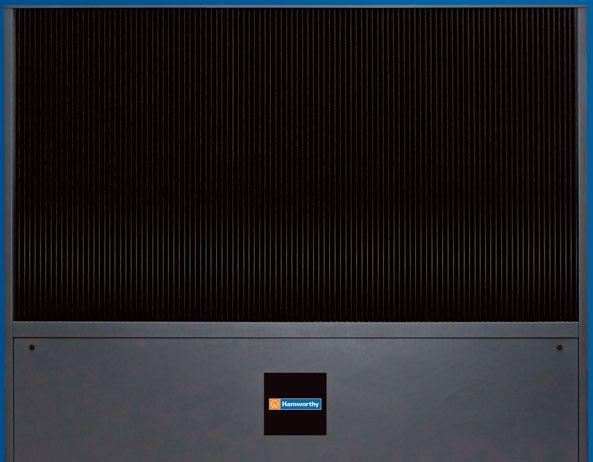








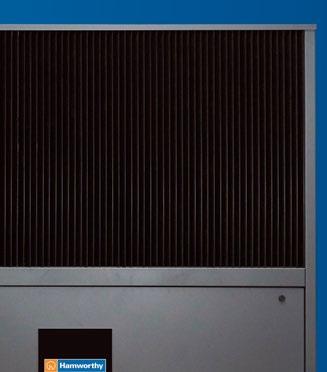


COP across the heating season (possibly up to +/-30%), particularly in colder weather. A second-order polynomial is shown to be a good fit.
The regression equations for Figures 3 and 4 respectively can be used to develop a plot of expected heat pump COP for a given value of daily degree-days, as shown in Figure 5. This can be used to monitor the heat pump performance and identify system faults, or control anomalies by comparing with daily COPs in real time.
The preliminary results show how a TM41 degree-day approach can be used to characterise the thermal energy performance of a house, and form the basis of performance monitoring and anomaly identification. The next step in the research is to refine the predictive model for heat pump retrofits and validate the method using the range of properties being monitored in this study. The aim is to develop a set of rules by which regression models can be used to identify and explain system failures, user actions, or unusual weather events.
It is important that energy forecasts and performance monitoring methods are reliable and understandable to the householder, particularly where performance guarantees are in place. High levels of trust will be required where retrofit financing is funded through loans or operational savings and underpinned by such guarantees. CJ
■ TONY DAY FCIBSE is an energy research consultant
■ This paper was presented at the 2024 Technical Symposium
References:
1 Heat pump-ready programme: Stream 2 projects, Department for Energy Security and Net Zero, viewed 20 November 2023, bit.ly/3QQP6gm
2 TM 41 Degree-days: Theory and practice, CIBSE, 2006 bit.ly/44QzwXS
Sign up to be the first to hear about our latest heat pump ranges. SCAN HERE Combine with any of our commercial heat pumps and boilers for a hybrid set up Suited to larger installations – cascade to achieve higher outputs Ultra low Global Warming Potential (GWP) 50kW – 130kW outputs available CO2 natural refrigerant Achieve high flow temperature up to 70ºC 15kW – 50kW outputs also available with R290 natural refrigerant to achieve max flow temps of 75ºC* * Our range of natural refrigerant heat pumps includes the Tyneham CO2 and CO2Q, plus Tyneham R290HT. The Tyneham R290HT is available in 15kW – 50kW models and can achieve high flow rates of up to 75 degree C. Tyneham R290HT not pictured. Hamworthy_Tyneham_CIBSE_270 x 90mm.qxp 14/05/2024 11:34 Page 1 HEAT PUMPS | CALCULATING ENERGY PERFORMANCE 46 June 2024 www.cibsejournal.com
Figure 4: Daily space heat electricity consumption against daily degree-days to daily base temperatures with a second-order polynomial line of best fit
Figure 5: Apparent heat pump COP as a function of daily degree-days calculated from regression equations in Figures 3 and 4











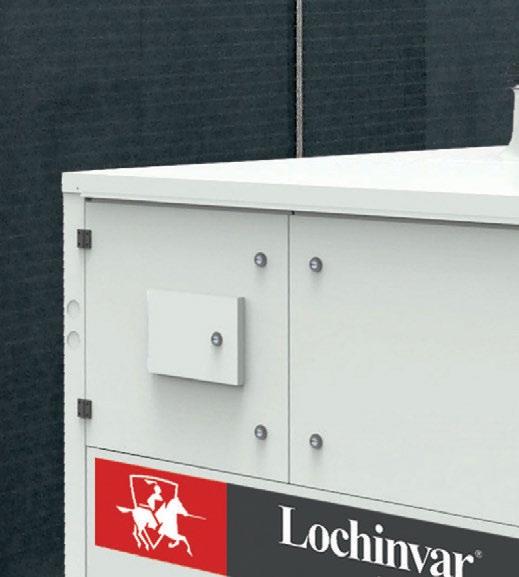










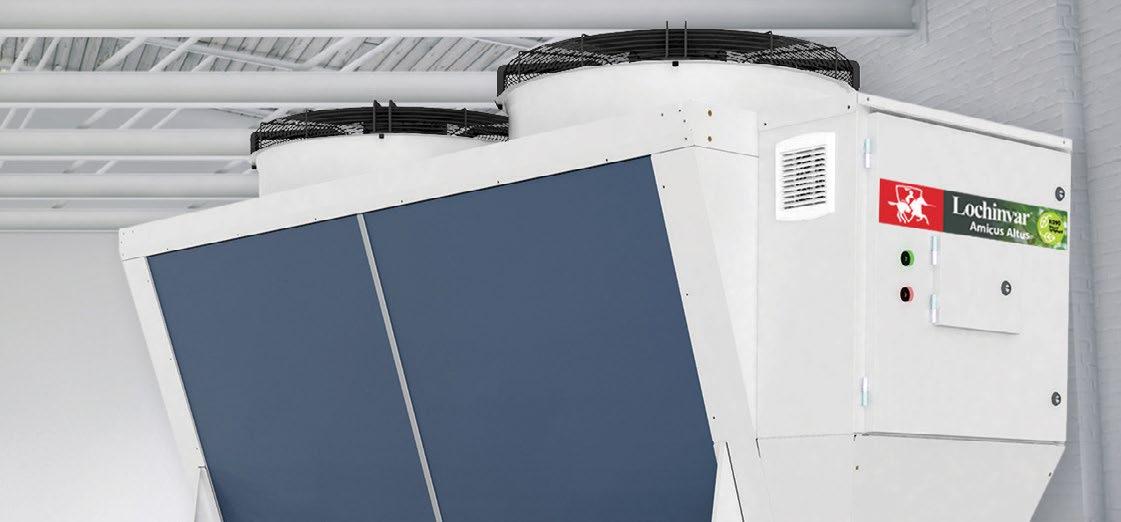





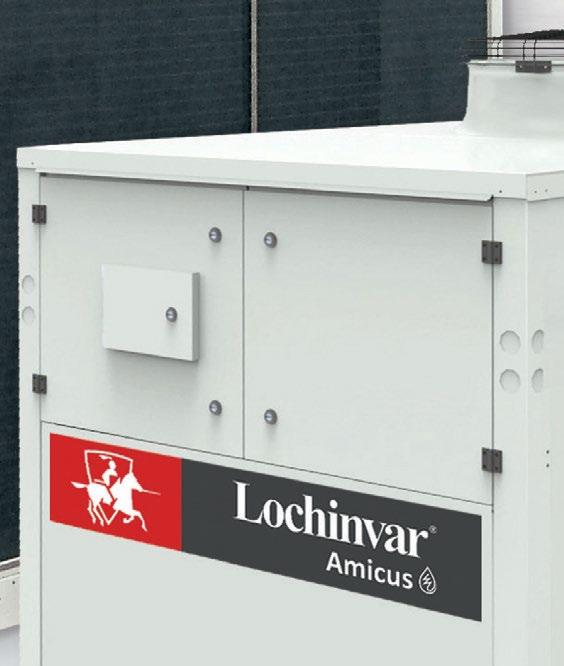










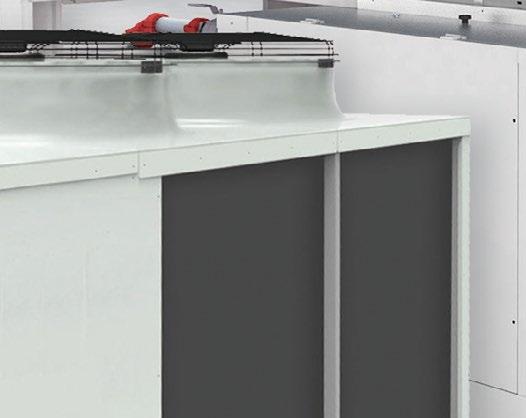



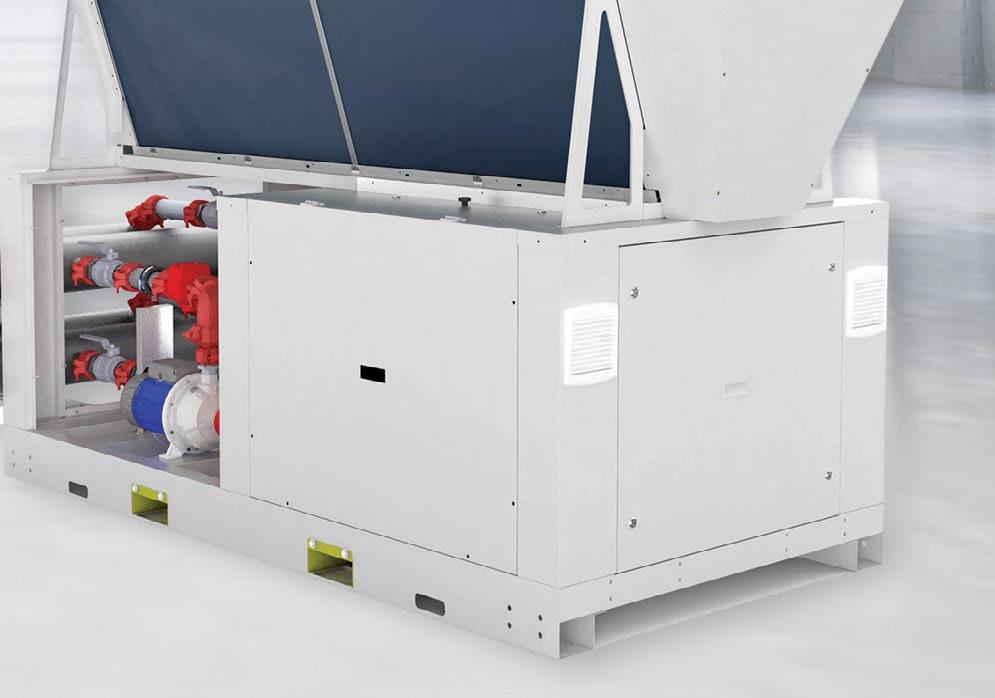








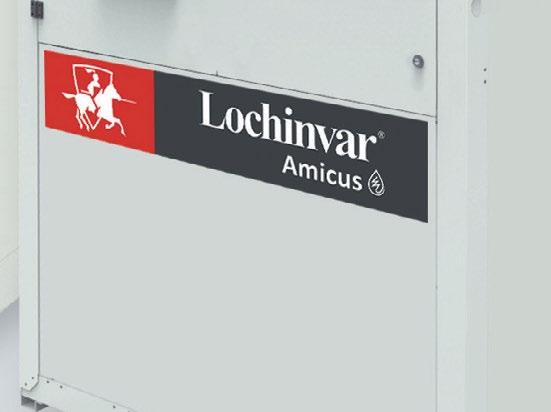
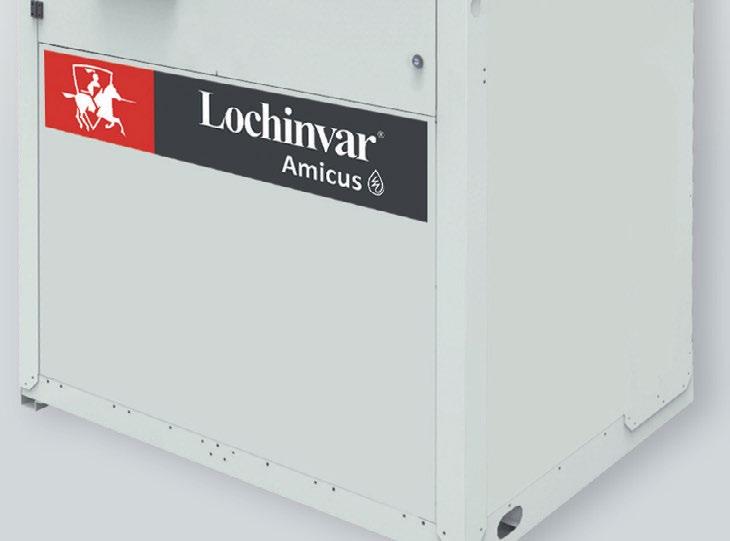
www.cibsejournal.com June 2024 47 ACROSS OUR RANGE OF HEAT PUMPS WITH IMMEDIATE DISPATCH AVAILABLE Extensive stock! Check our current stocks info@lochinvar.ltd.uk R290 Natural refrigerant



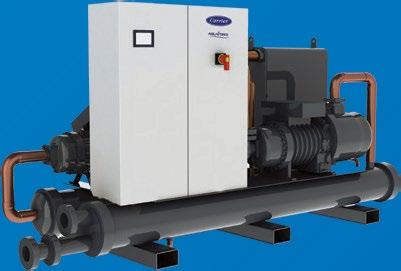
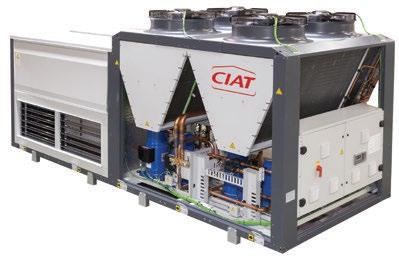


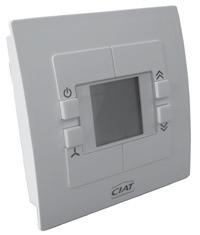




48 June 2024 www.cibsejournal.com • Air Cooled • Water Cooled • Absorption & Centrif Heat Pumps & Chillers • Remote • Central • Plant CONTROLS • Cassette • Floor Cabinet FAN COIL UNITS AHU, RTU & IAQ Digital interface Carrier’s experts Cloud Email alerts & reports Actions range of HVAC CONTACT CARRIER NOW 01372 220220 carrier.com/commercial/en/uk CONTACT CIAT NOW 01372 220151 ciat.com/en/uk Follow us on LinkedIn
CPD PROGRAMME

Decarbonising commercial buildings through life-cycle asset management
This module explores the drivers that have expanded industry expertise around life-cycle asset management, and how a more holistic approach has helped boost efforts to decarbonise the built environment
Effective life-cycle asset management, including performance audits and predictive maintenance of building services equipment, can make a significant contribution to decarbonisation efforts. This article will explore a key driver that has helped raise the level of industry expertise in this area, provide some examples of the elements and outcomes of engineering condition surveys, and reflect on the advance of digital technologies as a means of assessing systems’ performance – all as part of a holistic effort to decarbonise built environments.
A significant driver in the development of an increasing body of expertise for building services asset management has been the Energy Savings Opportunity Scheme (ESOS).1 This is a mandatory energy assessment scheme for large UK undertakings that, although having its roots in the European Union (EU), is underpinned by UK legislation and will continue into the foreseeable post-Brexit future. ESOS aims to identify tailored measures that lead to significant energy savings and carbon reductions, so organisations can choose actions based on their specific context and energy consumption patterns. The current ESOS phase 3 includes companies with more than 250 members of staff, a turnover greater than £44m and an annual balance sheet total of more than £38m.
ESOS assessments are conducted every four years to provide audits of the energy used by buildings, industrial processes and transport within the organisation. The ESOS reporting includes building energy intensity ratios (kWh per square metre) as well as total energy use in kWh or money spent. The rationale is that, while there are costs associated with the audit, the savings from implementing the recommendations typically outweigh the expenses.
ESOS mandates a comprehensive energy audit, which often requires improved data collection on building energy consumption. This might involve activities such
Continuing professional development (CPD) is the regular maintenance, improvement and broadening of your knowledge and skills, to maintain professional competence. It is a requirement of CIBSE and other professional bodies.
This Journal CPD programme can be used to meet your CPD requirements. Study the module and answer the questions on the final page. Each successfully completed module is equivalent to 1.5 hours of CPD.
Modules are also available at www.cibsejournal.com/cpd
as installing metering systems, monitoring equipment performance and analysing usage patterns.
ESOS can highlight maintenance issues impacting energy performance. For example, the audit might reveal the need for replacing faulty equipment, cleaning ventilation systems or fixing leaks in fluid distribution systems. ESOS compliance encourages a preventative maintenance approach that can identify potential problems before they escalate and lead to increased energy use. This proactive approach extends the lifespan of equipment and contributes to long-term energy savings.
ESOS can highlight the need for training building staff on energy-efficient practices. This might involve educating them on proper equipment operation, occupant behaviour that impacts energy use and procedures for reporting maintenance issues.
Developing and implementing a carbon reduction plan (CRP) is a central requirement for organisations complying with ESOS, in order to provide a roadmap
www.cibsejournal.com June 2024 49
SPONSOR
for reducing their carbon footprint. By requiring organisations to assess their energy consumption, ESOS acts as a catalyst for costeffective measures that improve building operation and maintenance practices.
The near future of ESOS looks to be focused on strengthening its impact on energy efficiency and aligning with the UK’s net zero targets. Phase 4 of ESOS – with a compliance period of 6 December 2023 to 5 December 2027 – will probably require assessments to consider not just energy savings, but also actions needed to achieve net zero emissions. This might involve assessing the feasibility of renewable energy adoption or energy efficiency upgrades that contribute to carbon neutrality, while also identifying potential risks of moving towards net zero. ESOS 4 may introduce support to identify potential risks of moving to net zero alongside assistance in creating CRPs. Notably, the use of display energy certificates (DEC) and Green Deal Assessments will be removed as a route to ESOS compliance.
The UK government is considering mandating that organisations act on the recommendations identified in ESOS audits to ensure implementation, leading to genuine impact. Future requirements may demand that a greater range of ESOS data and results of subsequent actions are made publicly available, which could incentivise companies to take strong action for reputational reasons. Speculation suggests that there may be an alignment of ESOS with the Streamlined Energy and Carbon Reporting (SECR) scheme.2 This could potentially bring smaller businesses under the ESOS umbrella. ESOS 4 is likely to see a further emphasis on data collection and analysis, as data-driven insights and automated controls can further optimise energy use and streamline the compliance process. This could include elements such as:
■ Automated data collection and analysis
■ Machine learning for optimising energy use within buildings
■ Digital twin simulations for testing and evaluating energy-saving strategies.
Previously, there has not been a mandated auditing methodology; however, it is likely that BS ISO 500023 and BS EN 16247-24 energy audits – which set out a good-practice method for identifying energy savings opportunities – will be listed as the preferred route to reporting in ESOS 4.
Data-driven insight and digitally enabled automated systems are pervasive in the recent rewrites to CIBSE Guide M Maintenance engineering and management
CHILLER MODERNISATION IN 20-YEAR-OLD SKYSCRAPER
The owners and operators of a ‘glass and steel’ 32-storey skyscraper office building, located in east London’s Canary Wharf, sought advice on the efficacy of their current chilled-water generation systems as part of their carbon-reduction aspirations. The building, originally completed in 2003, was among the first in Canary Wharf to receive an ‘Excellent’ Breeam rating. As part of the initial construction project, six centrifugal chillers were installed with nominal cooling capacities from 1,000kW to 5,300kW.
In 2020, the building systems were assessed with a view to reducing the building’s carbon footprint. The chillers already operated with a respectable seasonal energy efficiency ratio (SEER) of 6.8 and acceptable noise levels. The service modernisation team for the chiller manufacturer analysed potential energy-saving measures, return on investment (ROI) and performance forecasts, to provide a clear understanding of the benefits of any proposed refurbishment or upgrade activity.
The team determined chiller performance could be improved with intelligent condenser water control, installing variable frequency drives (VFDs) and undertaking a full compressor refurbishment on the six chillers. This was aimed at not only improving energy efficiency, but also extending chiller lifespan. The installation of VFDs on each chiller allowed adjustment of compressor speed to match the cooling demand, leading to significant energy savings, particularly during periods of low demand, as well as improving conditions for the occupants.
The project was completed in phases during 2023 to ensure uninterrupted tenant operation improved.
The modernisation has boosted efficiency and performance, with typical energy savings resulting from the VFD upgrades estimated at 20%. The VFDs also reduce mechanical stress on the chillers’ components, and it is thought that this adds a minimum of 10 additional years’ service life, ultimately delivering significant ROI.
This demonstrates the accelerating ubiquity of digital systems as the means of delivering effective intelligence on the operational state of building systems. Digitally sourced intelligence can combine with feedback from the building operator and performance management meetings to inform continuous improvement. Deployment of digital technologies provides unprecedented opportunity for interaction with ‘smart’ sensors, building controls, maintenance history and predictive technology to measure and optimise performance. Automated reports or cloud-based dashboards are increasingly common as a means of monitoring systems that can be benchmarked against commissioning (and recommissioning) data to quantify performance and swiftly identify problems. This can provide the data for condition-based maintenance (CBM) that – unlike traditional planned preventative maintenance (PPM) – is not based on specific time intervals, but on regular, or continuous, monitoring of system performance to indicate any deterioration that may signal the need for recommissioning, maintenance, refurbishment and replacement procedures. CBM can be employed to ensure resource utilisation is optimised, and prevent unnecessarily premature and inappropriate interventions. CBM may be undertaken completely onsite through, for example, the building management system (BMS), or facilitated remotely. Remote monitoring access may be as simple as an internet connection to the BMS, or it might employ continuously connected systems operated by the equipment manufacturer or the provider of maintenance support. Such services are increasingly being offered by equipment manufacturers using cloud-based, internet-connected systems that reference historical and contemporary data from the specific site, as well as the wider user base. By employing techniques such as machine learning in conjunction with expert product knowledge, manufacturers can offer predictive performance assessment, preventative maintenance planning, and optimised refurbishment and replacement scheduling. The current challenge for the whole built environment industry is to federate this data, and to provide standardised secure, shared access to the streams of data that may usher in increasingly ‘intelligent’ buildings and cities.
Section M13 of the recently rewritten CIBSE Guide M describes the engineering condition survey (ECS) as being a process of systematically assessing the condition of assets in respect of their ability to perform their intended function. Traditionally, a manual (paper) approach has been used to collect data, and this remains an option for many small to medium installations by employing pro forma
CPD PROGRAMME | LIFE-CYCLE ASSET MANAGEMENT 50 June 2024 www.cibsejournal.com

data-collection sheets. However, this is typically being superseded by electronic data collection, through accessing BMS, service provider, and manufacturer-based systems and field records. Such surveys may be part of the regular management of assets, in support of the ESOS requirements, or they may be required to identify the extent of maintenance liabilities prior to taking on a property, or to inform a maintenance contract. The ECS can provide an indication of the expected life of assets and components, which can be used to forecast the asset renewal demands and costs. Facility operators may vary the inspection cycle to suit the maintenance regime and assessment of risk to health and safety, operation and potential for failure.
Non-intrusive ‘visual’ inspection of the plant and associated systems and controlled spaces can provide an impression of the asset operation and wellbeing. However, this can inadvertently overlook unseen operational issues, as impending failure is not always visible. Valuable information can be obtained through conversations with maintenance staff and building users, as well as by reviewing logbooks, servicing reports and certification to help inform the overall view of condition. While cost may prohibit frequent in-depth surveys, an annual visual inspection supplemented by a more thorough survey every three years might be considered as a reasonable compromise. A thorough survey should include examining maintenance reports for major plant items, and may require the attendance of specialists to provide further insight into the condition of assets.
Non-intrusive surveys can uncover failures that would not be picked up during a visual survey – CIBSE Guide M provides an extensive commentary on different non-intrusive techniques.
It is important that the assets surveyed are uniquely identifiable, with their type and location reliably recorded. A classification system for the major elements of the engineering services will need to be agreed at the outset of the survey. For example, this may employ a classification system from the Royal Institution of Chartered Surveyors’ (RICS) New Rules of Measurement,5 or systems such as Uniclass6 may be appropriate if, for example, asset data is already held in a building information model (BIM). Guide M suggests that categories may be applied to a survey report to help identify priorities for attention, ranging from priority 1 (urgent) to priority 4 (normal maintenance).
Much of the gathered information may be subjective, but is still necessary to give a ‘priority grading’ that allows the planner to prioritise the work to be carried out
and model future budgets. Condition grades can provide an approach for recording the assessed condition of the assets to ensure a consistent interpretation by both the engineering surveyor and the recipient of the results. Guide M proposes a four-point condition scale, from A (fully operational) to D (very poor condition), with an extra designation of X if it is beyond repair.
The scope of an ECS will vary according to the requirements of the building and application. However, CIBSE Guide M considers that a typical survey report is likely to include detail on:
■ Functional suitability of assets and components
■ Operational integrity
■ Physical condition
■ Compliance with legal and health and safety requirements
■ Conditions affecting operation and maintenance
■ Economic life and obsolescence
■ Energy efficiency of assets.
The format of the report will be determined by the client’s requirements, and include a summary for each asset identifying the maintenance and remedial requirements, their costs, and the timescale to undertake work. Spreadsheets may be used to illustrate expected maintenance and replacement costs based on predicted values (such as those illustrated in BSRIA guide BG 35/20127). This will then provide accessible and useful information enabling a client to set – with a reasonable level of confidence – priority objectives, and plan both short- and long-term maintenance and replacement needs. A comparable process was recently employed in the assessment and refurbishment of the chilled-water installation for a 20-year-old, 32-storey skyscraper office building in London’s Canary Wharf (see boxout).
The management of building services systems as a means of delivering safe, comfortable, effective built environments with reduced carbon footprints, is a truly holistic task. Starting with the original – or refit – design, through the appropriate selection and installation of systems (and their all-important controls) to eventual refurbishment and reuse, the effort to decarbonise will have the greatest opportunity to succeed only if the aspects discussed in this article are considered as part of the more extensive system that reaches far beyond the building façades.
© Tim Dwyer, 2024.
■ Turn to page 52 for references.
CPD PROGRAMME | LIFE-CYCLE ASSET MANAGEMENT www.cibsejournal.com June 2024 51
Figure 1: An example of the high-efficiency semi-hermetic centrifugal chiller installed as part of the chilled-water system in the 92,000m2 skyscraper office building
Module 234
June 2024
1. Which of these were not mentioned as being potentially true of ESOS 4?
A DECs and Green Deal Assessments will be removed as a compliance
B It could involve identifying potential risks of moving towards net zero
C It may include assessing the feasibility of renewable energy adoption
D It will probably require consideration of actions to achieve net zero emissions
E It will require assurance that operational staff are suitably trained/certificated
2. Which of these are identified in the article as being enabled by the data delivered from digital technologies?
A CBM
B CRP
C DEC
D ECS
E ESOS
3. Which of the following was picked out as a remaining challenge for data-led building systems?
A Optimised refurbishments
B Predictive performance assessment
C Preventative maintenance planning
D Replacement scheduling
E Federated, standardised, secure access to the streams of data
4. What is suggested as a reasonable compromise for the frequency of a more thorough survey to supplement an annual visual inspection?
A Every other year
B Every three years
C Every four years
D Every five years
E There should not be a compromise
5. In the example of the chiller modernisation project, how many additional years’ service life were predicted as a result of the refurbishment and VFDs?
A Four years
B Six years
C Eight years
D 10 years
E 12 years
Name (please print)
Job title Organisation Address
Postcode
Email
Are you a member of CIBSE? If so, please state your membership number:
The CIBSE Journal CPD Programme
By participating in this CPD module, you consent to sharing your details with Carrier. Carrier may contact you via email and/or telephone with further information and technical insight on its services. You have the right to opt out from such communications at any time.
I understand that I will receive marketing communications from Carrier after completing this module (please tick here)
By entering your details above, you agree that CIBSE may contact you with information about CPD and other training or professional development programmes, and about membership of CIBSE, if you are not a member. Go to www.cibsejournal.com/cpd to complete this questionnaire online. You will receive notification by email of successful completion, which can be used to validate your CPD records. Alternatively, fill in this page and post it to: N Hurley, CIBSE, 222 Balham High Road, London, SW12 9BS
References:
1 bit.ly/CJJun24CPD21 – accessed 2 May 2024.
2 Streamlined Energy and Carbon Reporting (SECR) scheme.
3 BS ISO 50002:2013 Energy audits, BSI 2013.
4 BS EN 16247-2:2022 Energy audits – Buildings, BSI 2022.
5 bit.ly/CJJun24CPD22 – accessed 2 May 2024.
6 Uniclass – uniclass.thenbs.com/ – accessed 2 May 2024.
7 Bell, R and Harris, J, BSRIA BG 35/2012 – Condition Surveys and Asset Data Capture, BSRIA 2012.
CPD PROGRAMME | LIFE-CYCLE ASSET MANAGEMENT 52 June 2024 www.cibsejournal.com
SPONSOR
PRODUCTS & SERVICES
Products of the month
Electrifying the UK
Chris Goggin reviews the UK’s approach to extending and enhancing electrical grid connections to recently constructed renewable energy projects
Rinnai is examining closely the UK’s strategy for expanding electrical grid connections to accommodate the increasing adoption of renewable energy projects. We conducted a review, assessing how these developments may impact consumer options and contribute to the nation’s broader decarbonisation objectives. Across the globe, countries are working to reduce their reliance on fossil fuels and transition towards cleaner, more sustainable energy sources. The urgency of this transition stems from growing concerns about the environmental impact of traditional energy sources and the need to mitigate climate change. As a result, governments and policy-makers are drafting ambitious energy policies aimed at promoting the adoption of renewable energy technologies and reducing carbon emissions.
In the UK, decarbonising domestic, commercial and industrial activities is a top priority for policy-makers. Widespread electrification has emerged as a key strategy for achieving this goal, with the aim of reducing the nation’s carbon footprint significantly. The UK government has set ambitious targets to achieve the lowest electricity costs for households in Europe by 2035, underscoring the importance of transitioning to cleaner, more affordable energy sources.
Projections indicate a doubling of electricity demand in the UK over the next decade, with demand expected to triple by 2050. To meet this and support the transition to renewable energy, the UK National Grid has announced plans for a major infrastructure upgrade, known as the ‘Great Grid Upgrade’. This £16bn initiative will involve the construction of new grid connections to offshore wind farms and rural solar installations, enabling the efficient distribution of renewable power across the country.
In addition to domestic initiatives, the UK has forged partnerships with other countries to facilitate the exchange of clean energy. For example, the Viking Link, a 475-mile submarine interconnection between Lincolnshire, in


the UK, and Southern Jutland, in Denmark, represents a significant step towards enhancing energy trade and cooperation between the two nations. With an investment of £1.7bn, the Viking Link has the capacity to power 2.5 million UK households and is expected to result in substantial cost savings for consumers.
Similarly, plans are under way for the construction of the LionLink, a submarine interconnection between the UK and the Netherlands, which will enable both countries to transfer and trade clean offshore windgenerated electricity. With a capacity of 1.8GW, the LionLink has the potential to power 2.5 million homes and is scheduled to become operational by 2030.
At the same time, domestic energy companies are investing in upgrading their transmission networks to accommodate the integration of clean renewable electricity. Scottish Power, for instance, has committed £5.4bn to upgrading its transmission network
over the next decade, with the aim of delivering 80-85GW of clean renewable electricity to the National Grid.
These investments in grid infrastructure are expected to pave the way for cost-effective supplies of green power to businesses and homes across the UK. However, as the energy landscape evolves, there is a growing need for innovative solutions to decarbonising heating and hot-water systems.
In response, Rinnai has developed a comprehensive range of decarbonisation products under its H3 range. These products include hydrogen/BioLPG-ready technology, hybrid systems, low global warming potential heat pumps, and solar thermal options, catering for both residential and commercial applications. Rinnai’s continuous water heaters and boilers are designed to align with current and future energy sources, offering efficiency, durability and flexibility.
As part of its commitment to supporting the transition to cleaner energy, Rinnai gives customers factual information that influences purchasing decisions regarding heating and hot -water systems. Through its H3 range of products, it aims to empower contractors, consultants and end-users with efficient, affordable, and sustainable heating solutions.
To further assist customers in selecting the right solution for their needs, Rinnai offers design services and carbon cost-comparison tools, enabling customers to make informed decisions about their energy investments.
■ To learn more about Rinnai’s decarbonisation offerings and explore energy-efficient solutions for your projects, visit www.rinnai-uk.co.uk or contact engineer@rinnaiuk.com
www.cibsejournal.com June 2024 53
Tel: 020 7880 6245 Email: cibsedirectory@redactive.co.uk
Rinnai operations director Chris Goggin
Products of the month
Loch Lomond holiday park embraces sustainable heating solutions
Rinnai’s LPG-powered water heaters offer carbon-reduction and air-quality benefits
Rinnai is making waves in the off-grid holiday park industry by installing its state-of-the-art Rinnai 1600e continuous flow water heaters at a picturesque site on the banks of Scotland’s Loch Lomond. This innovation promises to warm up the accommodation, providing guests with comfort and luxury, even in the remote off-grid setting. Situated towards the southern end of Loch Lomond, the holiday park attracts visitors year-round because of its proximity to Glasgow, just a 40-minute drive away. The park boasts a variety of accommodation, including lodges and chalets equipped with outdoor hot tubs, catering for groups of up to 10 people per unit. In addition to the cozy accommodation, the site offers a range of amenities, such as a leisure centre, swimming pool, restaurants, cafes, and communal areas used for entertainment, including concerts featuring tribute acts. What sets this holiday park apart is its commitment to sustainability. The installation of Rinnai’s LPG-powered water heaters demonstrates a dedication to reducing carbon emissions and embracing cleaner energy alternatives. These water heaters not only run efficiently on LPG, but are also compatible with BioLPG, a lower carbonintensive fuel source. BioLPG, derived from
renewable materials, offers significant benefits in terms of carbon reduction and air quality compared with traditional off-grid fuels such as heating oil.
Furthermore, Rinnai is at the forefront of developing products that support the use of future green fuels. Its continuous flow water heaters can use renewable biofuel dimethyl ether (DME), which boasts clean combustion and minimal emissions, contributing to improved air quality. By investing in Rinnai’s innovative heating solutions, the holiday park is futureproofing its infrastructure and aligning with sustainability goals.
Rinnai’s commitment to sustainability extends beyond off-grid heating solutions. The company offers a comprehensive range of products, including domestic and commercial heat pumps, electric instantaneous hot water heaters, and hydrogen-ready units, all aimed at reducing carbon emissions and providing cost-effective solutions for heating and hot-water provision.
Moreover, Rinnai provides clear pathways
“Rinnai offers a range of products aimed at reducing carbon emissions and providing cost-effective solutions for heating and hot-water provision”
to decarbonisation and cost reduction for commercial and domestic customers. Its range of decarbonising products – including gas, BioLPG, DME, and hydrogen-ready units –offers efficient, robust and affordable solutions tailored to various applications. With more than two million units produced annually, and a global presence spanning five continents, Rinnai has established itself as a trusted provider of high-performance, cost-efficient heating solutions.
In addition to product availability, Rinnai offers comprehensive support services, including carbon and cost-comparison tools, system design assistance, and technical training programmes. This ensures that customers have access to the resources and expertise needed to make informed decisions.
Rinnai’s collaboration with the holiday park on Loch Lomond exemplifies the potential for sustainable innovation in the hospitality industry. By embracing clean energy technologies, such as LPG-powered water heaters and renewable biofuels, businesses can reduce their environmental impact while offering guests the comfort and convenience they expect. As the demand for eco-friendly solutions grows, Rinnai remains dedicated to leading the way towards a greener future.
■ Find out more about renewable liquid fuels at www.rinnai-uk.co.uk/contactus/newsletter-sign
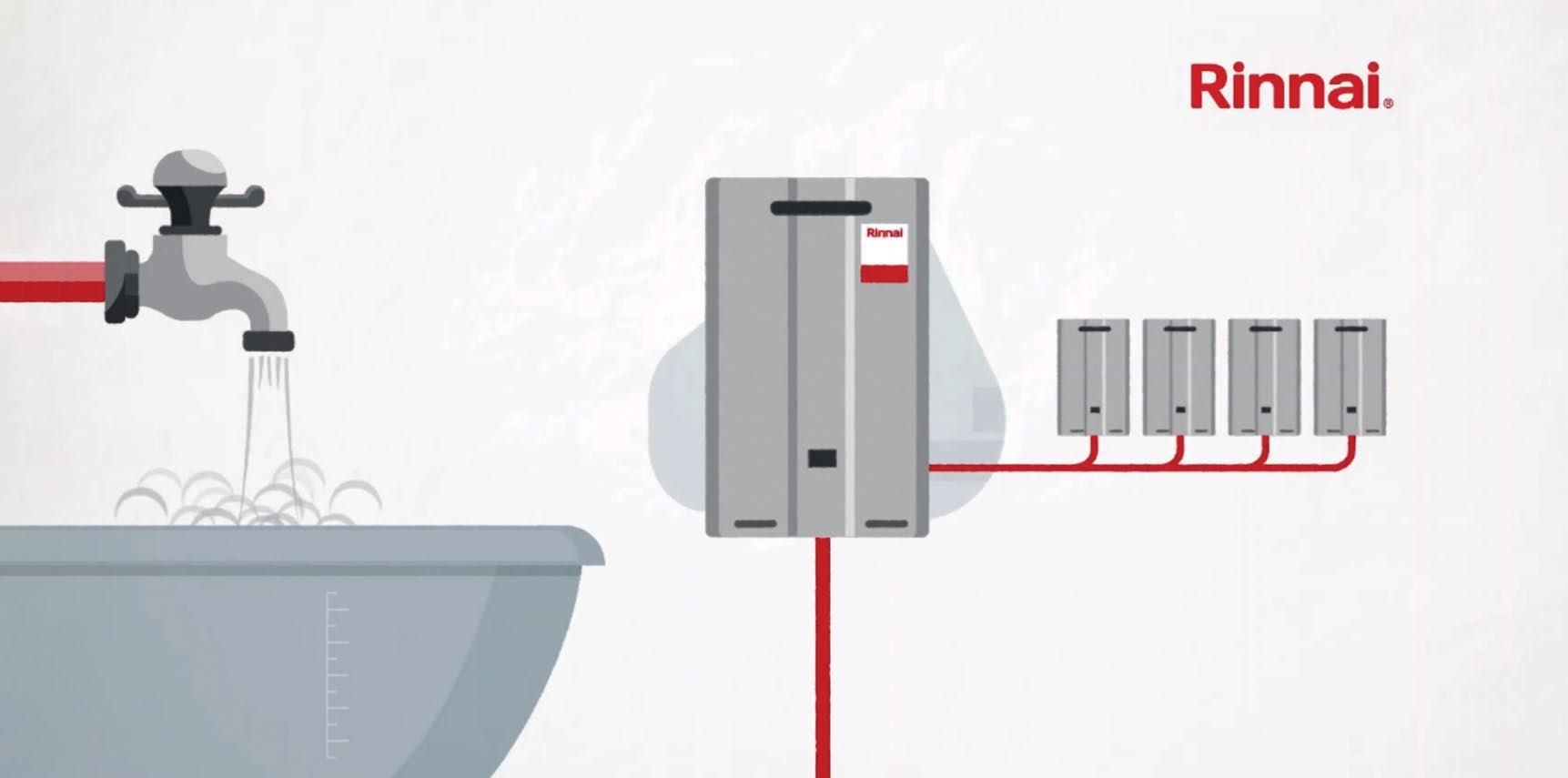
PRODUCTS | SERVICES Tel: 020 7880 6245 Email: cibsedirectory@redactive.co.uk 54 June 2024 www.cibsejournal.com
Products of the month
Ideal Heating releases R290 heat pumps
The ECOMOD natural refrigerant commercial heat pump can reach temperatures of up to 75oC
Ideal Heating Commercial has launched its next-generation ECOMOD heat pumps, which feature an environmentally friendly natural refrigerant. Leading the new product range is the ECOMOD 290HT, with ECOMOD CO2 to follow later this year.
The ECOMOD 290HT is a monobloc air source heat pump that excels in achieving high temperatures of up to 75oC, while also benefiting from an ultra-low global warming potential (GWP) of just three, as a result of using R290 natural refrigerant. Environmentally, it is a significant improvement, contributing far less to global warming than the refrigerants used traditionally. It also makes more commercial sense, however, as high-GWP refrigerants are becoming increasingly rare and, consequently, are subject to rising costs.
Available in three chassis sizes and five outputs (15kW, 18kW, 27kW, 40kW and 50kW), the ECOMOD 290HT has been designed for use in larger commercial buildings. It can also be used in cascade configurations to achieve even higher outputs, making it a versatile solution for diverse commercial heating needs.
This new generation of heat pumps can be seamlessly integrated with other Ideal Heating commercial solutions, such as the EVOMAX 2 and the IMAX XTRA 2 commercial condensing boilers, to create a comprehensive low carbon hybrid heating system.
The ECOMOD 290HT’s ability to reach temperatures as high as 75°C makes it particularly suitable for domestic hot water applications and district heating systems. Additionally, it often negates the need for radiator upgrades, presenting a practical and cost-effective option for retrofit installations. This makes it an attractive choice for businesses looking to improve their heating systems without the significant disruption and expense of a complete overhaul.
The ECOMOD 290HT boasts a high efficiency rating, with a coefficient of performance of up to 4.94. These heat pumps also feature an inverter-controlled compressor, which matches the heat demand precisely, based on specific requirements, further enhancing building efficiency. Quiet operation is another highlight, with noise levels as low

as 64dB(A), ensuring minimal disturbance in commercial settings.
It’s important to note that ECOMOD 290HT models specify their output based on conditions of air 7°C and water 35°C, a standard benchmark in the industry.
Chris Caton, product director – commercial at Ideal Heating, commented on the company’s commitment to natural refrigerants. ’We have led the way in commercial heating by ensuring our heating products are at the forefront of technology, quality and design, delivering high efficiency and low running costs. This latest, innovative addition to our ECOMOD heat pump range, featuring natural refrigerants with ultra-low GWP, will ensure our customers have the best, most advanced solutions for heating and hot water, while helping businesses in the UK on their journey to net zero,’ he says.
ECOMOD 290HT heat pumps come with a five-year warranty provided they are commissioned by Ideal Heating. Ideal Heating is unique in offering a free commissioning service across its entire range of commercial ECOMOD heat pumps and condensing boilers. This service saves customers both time and money, and ensures that appliances are correctly commissioned and operating at optimal performance.
Ideal Heating consistently delivers commercial heating solutions that are at the
cutting edge of technology and developed in line with the latest market trends and legislative requirements. As the UK’s market leader in high-efficiency commercial heating solutions, it has been operating from its Hull manufacturing plant and offices since 1906, making it one of the few true British manufacturers remaining in the heating industry. Ideal Heating is part of Groupe Atlantic, which is renowned for its commitment to quality and innovation in heating solutions.
The ECOMOD 290HT is a significant advancement in commercial heating technology. By combining high efficiency, ultra-low GWP refrigerants and robust design, Ideal Heating is offering a solution that not only meets the current demands of the market, but also aligns with the broader goal of reducing environmental impact. This new product is set to help businesses across the UK make substantial strides towards achieving net zero while benefiting from reliable, cost-effective heating solutions. With a strong legacy and a commitment to innovation, Ideal Heating continues to lead the way in the commercial heating industry.
■ For more information, visit: idealcommercialboilers.com/ products/ecomod-290ht
www.cibsejournal.com June 2024 55 PRODUCTS | SERVICES Tel: 020 7880 6245 Email: cibsedirectory@redactive.co.uk
New platform from Passivent aims to enhance ventilation solutions
Passivent has joined forces with Integrated Environmental Solutions (IES) to integrate its products into the virtual environment platform IESVE. This collaboration initially features the Airscoop roof ventilation terminal, now accessible through Feature Pack 5.

Huw Poppy, Passivent’s business operations manager, emphasises the partnership benefits in streamlining the specification process for its customers. Selecting an effective ventilation solution can be complex. By leveraging IESVE’s comprehensive data, specifiers can ensure efficient ventilation strategies, aligning with Passivent’s commitment to optimal product performance.
‘It’s just one way we’re proud to support our customers to make sure they get the most out of our products,’ Poppy says.
The agreement with IES extends beyond the Airscoop terminal, promising more of Passivent’s innovative solutions within IESVE throughout 2024.
This endeavour showcases Passivent’s dedication to empowering customers and maximising the effectiveness of its ventilation products.
■ Call 01732 850 770 or visit www.passivent.com/product/airscoop-roof-ventilation-terminal
Hamworthy expands CPD modules with new hot-water series
Three new modules focusing on domestic hot water (DHW) best practice have been added to Hamworthy Heating’s CIBSE-approved CPD portfolio. Designed for professionals managing DHW in commercial buildings, the series covers DHW design, safety, legislation, incentives, and sizing. Delivered online or in person by HVAC experts, each 60-minute module offers practical insights into project considerations, safety measures, and DHW system sizing.
■ Call 01202 662 552 or visit hamworthy-heating.com/Training/CPD/CPDseminars-overview

Jung Pumpen specification for public health engineers

Pump Technology, headquartered in Berkshire, has been appointed as the UK’s primary supplier of Jung Pumpen products. The branch is now fully authorised by Jung Pumpen for specification and distribution of its wastewater and sewage pumping equipment.
Get in touch for all inquiries regarding Jung Pumpen products, including specification, CPD sessions, and more. Contact Matthew Camille by emailing matt@pumptechnology.co.uk or calling 0118 9821 555, or David Johnson (SoPHE committee member) at davidj@pumptechnology.co.uk or 07984 520515.
■ Visit www.jung-pumps.co.uk
E-Tech M is latest addition to ACV’s low-carbon electric heating solutions
ACV UK has introduced the versatile E-Tech M electric heater to complement its low-carbon electric heating line-up. The new mobile heater accelerates screed drying while serving as a backup heating solution. With a plug-in adaptable to six power sources, ranging from 3kW to 36kW, and automatic power detection, it suits various commercial and industrial projects. Featuring a 4.3-inch screen and customisable drying programs, the E-Tech M simplifies operation and maintenance. ACV’s E-Tech range offers efficient electric heating options, reducing carbon footprint and maintenance costs.
■ Visit www.acv.com/gb

ACV UK announces new CIBSE-approved CPD
ACV UK’s latest CIBSE-approved CPD module is titled ‘Factors driving material selection for hot-water storage products’. The comprehensive training delves into water composition, how this can vary between regions, and the effects it can have on materials. It also covers different types of corrosion and how this is triggered.
By emphasising careful material selection, the CPD guides professionals in minimising risks and optimising performance in commercial hot-water systems.
Available for in-person or online delivery, it caters for consultants, contractors and specifiers.
■ Visit www.acv.com/gb/page/cibseaccredited-cpd-course

Condair humidifiers achieve 92% energy recovery
The Condair ME evaporative humidifier has been adopted by energy-recovery experts Konvekta as a staple adiabatic cooling solution in its systems.

This is helping the Lancashire-based company to deliver up to 92% annual energy recovery in clients’ buildings.
The incorporation of Condair ME humidifiers pre-cools incoming fresh air, reducing the need for mechanical cooling.
A recent installation in Tyrol, Austria, contributed more than 60,000kWh/a cooling, with just 3,800kWh/a electricity consumption.
A cooling effect from 32°C outside air temperature down to 22-23°C supply air temperature can be reached.
■ Visit www.condair.co.uk
56 June 2024 www.cibsejournal.com PRODUCTS | SERVICES
Tel: 020 7880 6245 Email: cibsedirectory@redactive.co.uk
New members, fellows and licentiates
FELLOWS
Chan, Chi Wing
Central, Hong Kong
Chan, Ka Ho
New Territories, Hong Kong
Clark, Graeme
Spennymoor, United Kingdom
Deng, Jie
Reading, United Kingdom
Duff, Mona
Dublin, Ireland
Leung, Kin Bong Marco
Kowloon Bay, Hong Kong
McLaughlin, Martin B
Pinner, United Kingdom
Thomas, Gethin
Colchester, United Kingdom
MEMBER
Aboubakr, Mohamed
Wallasey, United Kingdom
McMullan, Mark Dublin, Ireland
Saleh, Imad
Riyadh, Saudi Arabia
AbdelMaksoud, Hassan
Dammam, Saudi Arabia
Battro, Andrea London, United Kingdom
Karafyllidis, Christos
Salford, United Kingdom
Tumbiolo, Giuditta
London, United Kingdom
Cheung, Man Kei
New Territories, Hong Kong
Ma, Chun Leung
Tin Shui Wai, Hong Kong
Chan, Kai Bond Fox
Kowloon, Hong Kong
Lam, Ka Chun
Shatin, Hong Kong
Lee, Kap Tsz
Kowloon Bay, Hong Kong
Chan, Ka In Daniel Kowloon, Hong Kong
Tin, Kong Sang Fanling, Hong Kong
Ho, Ka Chun
Yuen Long, Hong Kong
Chan, Chi Wai
Kowloon, Hong Kong
Ibrahim, Ehab
Dubai, United Arab Emirates
Thomas, Pratheesh
Changanacherry, India
Chan, Kam Wa
Yuen Long, Hong Kong
Tong, Sze Nap Tko, Hong Kong
Berenjian, Armin
Wolverhampton, United Kingdom
Ng, Ka Fai Daniel
Tseung Kwan, Hong Kong
Wong, Tsz Lap
Taiko Shing, Hong Kong
Law, Ka Kei Albert
Kowloon, Hong Kong
Tsang, Pok
North York, Canada
Castillo, Noel
Dubai, United Arab Emirates
Ma, Shun Tai
NT, Hong Kong
Dempster, Paul
Belfast, United Kingdom
Leung, Ying Kit
Hung Hom, Hong Kong
Antony, Tom
Stevenage,United Kingdom
Fung, Yue Yeung
Yuen Long, Hong Kong
LICENTIATE
Knight, James
Bristol, United Kingdom
Jose, Akhila
Wickford, United Kingdom
Akinsanya, Damilare
London, United Kingdom
Epworth, Nathan Nottingham, United Kingdom
Dergic, Muhamed
Birmingham, United Kingdom
Ball, David Hull, United Kingdom
Tejani, Ankitkumar
Carnegie, United States
McDonald, Ellie Bristol, United Kingdom
McCarthy, Matthew London, United Kingdom
Foster-Pollard, Oliver Lutterworth, United Kingdom
Underwood, Mark London, United Kingdom
Morgan, Rhys
Bridgend, United Kingdom
Wright, Elliot Nottingham, United Kingdom
Slattery, Jordan Ballymount, Ireland
Woodhouse, Ryan Gravesend, United Kingdom
Wallis, Max London, United Kingdom
Power, Michael London, United Kingdom
Matthews, Neill Ticehurst, United Kingdom

Entries are open
The awards recognise and celebrate the young engineers making a difference, and the employers who support their growth and development. This year, we are delighted to share that we will celebrate 29 years of showcasing determined graduates, 17 years of identifying the best employers, and 5 years of exhibiting hard-working apprentices in the industry. And the second year of supporting undergraduates.
Awards categories: > CIBSE ASHRAE Graduate of the Year > CIBSE Employer of the Year > CIBSE Apprentice of the Year
> CIBSE Undergraduate of the Year

CIBSE | NEWS www.cibsejournal.com June 2024 57
#WECHAMPION #CIBSEYEA Enter by 31 July 2024 CIBSE.ORG/YEA
CIBR18136 YEA 2024 HP journal Ad 133x186_AW.indd 1 21/05/2024 17:16
EVENTS AND TRAINING
NATIONAL EVENTS AND CONFERENCES
CIBSE AGM
10 June, Royal Society, London, and online
The CIBSE AGM will be a hybrid event, both online and in person, and will be followed by incoming President Fiona Cousin’s Presidential Address, titled ‘Building performance reimagined’ www.cibse.org/agm
Decarbonisation Conference
18 June, Royal College of Surgeons, London
David Partridge, chair of the Governance Board for the Net Zero Carbon Buildings Standard (NZCBS), is keynote speaker at this conference, which will provide an update on CIBSE’s work on decarbonisation, including collaborative work on the UK NZCBS, retrofit, refrigerants, district heating, and heat pumps. The conference will also outline what the new net zero standard means for those working in related fields.
On-demand training
CIBSE REGIONS AND GROUP EVENTS
Check the website for up-to-date information on regions and groups meetings, webinars and podcasts Visit: www.cibse.org/events
CIBSE Patrons AGM
6 June, London
SoPHE South West inaugural event
6 June, Bristol
Inaugural event for SoPHE in the South West, supported by SoPHE Industrial Associates
South West, YEN South West: AI in the construction industry: What can AI do?
11 June, Bristol
Discover how artificial intelligence is revolutionising the way we design, plan and build structures.
HCSE: End-to-end heat network solutions
19 June, online
This event will highlight the features and benefits of hybrid packaged energy centres, including cascaded heat pumps, back-up boilers, thermal stores and controls
CIBSE has a portfolio of on-demand courses that contain interactive online content, with quizzes and additional resources to support your learning. go.cibse.org/training-mycibselearning
Benefits include:
n Online platform accessible on desktop and mobile devices
n Courses and modules available offline when using the app
n Flexibility
n Interactive content
n Corporate training exclusive tools (dashboards, reports)
CIBSE JOURNAL WEBINAR
The latest CIBSE Journal webinar, sponsored by Airflow Developments and titled ‘Understanding MVHR for residential buildings’, is now available on demand. Register at www.cibsejournal.com/webinars
All previous Journal webinars are also available on demand.
Lifts Group: Seminar 26 June, Manchester Michael Bottomley will present on accessible goodsonly lifts, and Adam Scott will cover BS7255.
CIBSE ANZ: Seminar series – The need for speed 30 July – 27 August, online
A toolkit for engineers to get their projects to net zero.
TRAINING COURSES
CIBSE courses are online at present because of the relocation of CIBSE’s offices. Corporate delivery is also available in-house face to face, or remotely online. See www.cibse.org/training
Standby diesel generator 4 June, remote
Fire safety building regulations: Part B 4 June, remote 11 July, remote
Low carbon consultant building design 4-5 June, remote
Emergency lighting to comply with and firesafety requirements 5 June, remote
Electrical services overview 6 June, remote
Design of ductwork systems 6 June, remote
Building services explained 11-13 June, remote 2-4 July, remote
Heat networks Code of Practice (CP1) 11-12 June, remote 16-17 July, remote
Low and zero carbon energy technologies 13 June, remote 11 July, remote
The importance of energy-efficient buildings 1June, remote
Introduction to the Building Safety Act 18 June, remote
Electrical services explained 18-20 June, remote
Design of heating and chilled water pipe systems 25 June, remote
Energy Savings Opportunity Scheme 26 June, remote
Energy strategy reports 27 June, remote
Fire safety in purposebuilt blocks of flats 3-4 July, remote
Introduction to heat networks Code of Practice 9 July, remote
Building Regulations Part O: Overheating 18 July, remote
Mechanical services overview 19 July, remote
Understanding the law for engineers 24 July, remote
MEMBERSHIP WEBINARS
CIBSE Membership hosts free two-part webinar series to support members with applications for the Associate and Member grades and registration with the Engineering Council at Incorporated Engineer and Chartered Engineer level.
To register, visit: bit.ly/CIBSEMembershipWebinar
Upcoming dates: 4 and 11 June
9 and 23 July
6 and 20 August
58 June 2024 www.cibsejournal.com

















Hear the latest updates on delivering the UK Net Zero Buildings Carbon Standard
Discover the latest research on decarbonisation and challenges that face built environment professionals
Keynote speaker

David Partridge Chair of the Governance Board for the UK Net Zero Carbon Buildings Standard
Hear from key members of the cross-industry standard coalition
Network and engage with members of CIBSE and other built environment industry experts

Book now
the
code
standard ticket price Taking a lead on decarbonisation
Scan
QR
to claim £100 off the
26 June 2024 BMA House, London CIBSE Decarbonisation Conference cibse.org/decarbonisation-conference
CMR Controls manufactures low air pressure and air volume measurement sensors and control systems for standard air conditioning,clean rooms,sterile laboratories,containment facilities,and fume cupboard extract systems.

DPC CONTROLLER
Fast and accurate controls to drive high speed dampers or invertors. Full PID stand alone controls with BMS interface.
DPM PRESSURE SENSOR
Panel Mount Pressure or Velocity Transducers with remote alarms,analogue and digital interfaces.Traceable calibration certificates supplied as standard.
AIR MANAGEMENT SYSTEM
A complete turn-key system to control room pressure to +/-1Pa.Fume cupboard face velocity to 0.5m/s at high speed and provide constant air changes into the labo - clean room.
CAV AND VAV DAMPERS
Accurate air flow measurement with the unique CMR Venturi built into the airtight shut-offdamper to control room pressure or constant volume.
PPS EXTRACT DAMPER
Poly-propelene control and shut offvalve incorporating the CMR Venturi Nozzle.This is essential when dealing with corrosive extract air especially from fume cupboard systems.
Metal Damper PPS Damper PRECISION COMPONENTS FOR VENTILATION AND PROCESS CONTROL
A Division ofC.M.RICHTER (EUROPE) LTD 22 Repton Court,Repton Close, Basildon,Essex SS13 1LN.GB Website:http://www.cmr.co.uk
(0)1268 287222
(0)1268 287099
HEPA FILTER NORMAL EXTRACT EXTRACT CONTROLLER LABO - CLEAN ROOM FUME CUPBOARD VAV EXTRACT DAMPER CAV SUPPLY DAMPER PPS DAMPER
CMR CONTROLS
Tel:+44
Fax:+44
E-mail:sales@cmr.co.uk





















 Trevor, Senior Design Engineer
Trevor, Senior Design Engineer

















































































































































































































































































































































































































































